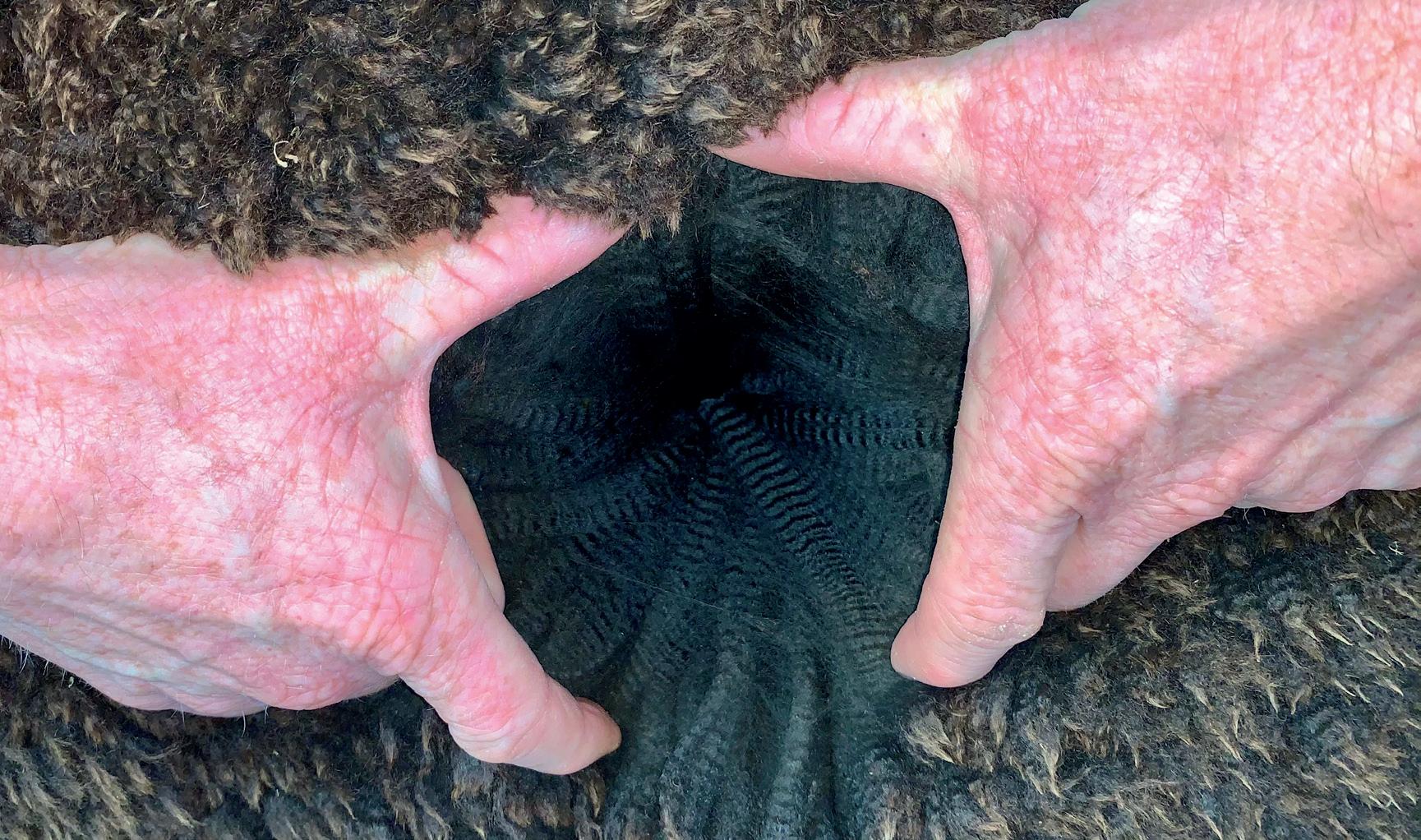
















www.bas-uk.com
THE BRITISH ALPACA SOCIETY
c/o Grassroots Systems Ltd, PO Box 251, Exeter EX2 8WX. Tel (within UK): 0845 3312468
Tel (Overseas): +44(0)1392 437788



Fax: +44(0)1392 437788









Email: info@bas-uk.com
BAS CHIEF EXECUTIVE
Dr Duncan Pullar
Tel: 07496 578781
Email: ceo@bas-uk.com
EDITORIAL
Editor: Liz Wright alpaca.ed@kelsey.co.uk
ADVERTISEMENT SALES
Wendy King
Talk Media Sales
Tel: 01732 448748
Email: Wendy.King@talkmediasales.co.uk
GRAPHIC DESIGN
Jo Legg 07306 482166 jo.legg@flair-design.co.uk
KELSEY MEDIA
The Granary, Downs Court
Yalding Hill, Yalding, Maidstone, Kent, ME18 6AL 01959 541444
MANAGEMENT
Chief Operating Officer: Phil Weeden
Managing Director: Steve Kendall
Publisher: Fiona Mercer
Retail Director: Steve Brown
Renewals and Projects Manager: Andy Cotton
Senior Subscription
Marketing Manager: Claire Aspinall
Subscription Marketing Director: Gill Lambert
Subscription Marketing Manager: Kate Chamberlain
Print Production Manager: Georgina Harris
Print Production Controller: Kelly Orriss
DISTRIBUTION
Distribution in Great Britain: Seymour Distribution Limited
2 East Poultry Avenue, London EC1A 9PT Tel: 020 7429 4000 www.seymour.co.uk
Distribution in Northern Ireland and the Republic of Ireland:
Newspread
Tel: +353 23 886 3850
Kelsey Media 2023 © all rights reserved. Kelsey Media is a trading name of Kelsey Publishing Ltd. Reproduction in whole or in part is forbidden except with permission in writing from the publishers. Note to contributors: articles submitted for consideration by the editor must be the original work of the author and not previously published. Where photographs are included, which are not the property of the contributor, permission to reproduce them must have been obtained from the owner of the copyright. The editor cannot guarantee a personal response to all letters and emails received. The views expressed in the magazine are not necessarily those of the Editor or the Publisher. Kelsey Publishing Ltd accepts no liability for products and services offered by third parties. Kelsey Media takes your personal data very seriously. For more information of our privacy policy, please visit Kelsey Media takes your personal data very seriously. For more information of our privacy policy, please visit https://www.kelsey.co.uk/privacy-policy/ . If at any point you have any queries regarding Kelsey’s data policy you can email our Data Protection Officer at dpo@kelsey.co.uk.
Cover
4 From the CEO
6 The BAS
8 BAS registration
10 Introducing the BAS alpaca breed standard
14 Starting with alpacas
A guide to purchasing. alpacas.
18 UK exports getting back on track as demand grows
20 Tracing the history of the alpaca
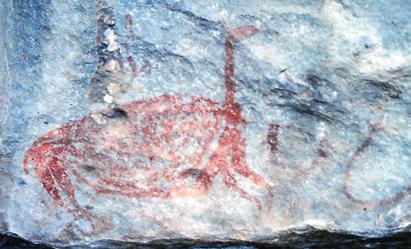
30
54 Autumn mitts
A pattern to knit.
34
Mary Jo Smith looks at the changes to the British Alpaca Society Fleece Judging manual.

Thinking about opening an alpaca trekking business or just starting a new venture? Doug Steen highlights some essential pointers to ensure happy alpacas.


38 A year in the life of an alpaca
Ami Sawran, Westpoint Farm Vets, looks at homecoming, husbandry and health.
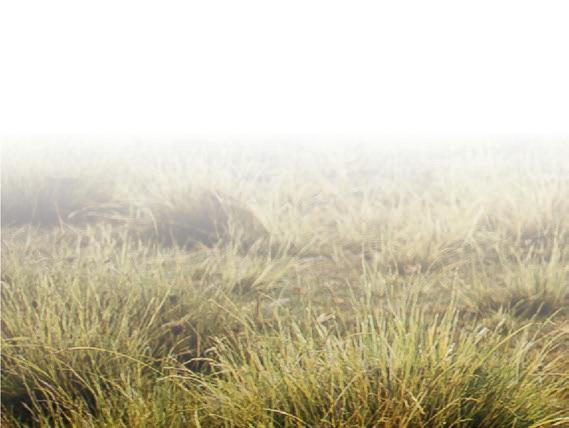
44 Veterinary services for alpacas

56 What does a fibre mill actually do?
58 Making rugs
60 Comparing alpaca to wool
Paul Vallely examines the differences and the impact that these have on testing and the end product.
62 'Fibre of the Gods' Bridget Tibbs delves into the ancient craft of hand spinning and tells us how using a drop spindle gives her a real feeling of affinity with age old Peruvian traditions.


24
The British Alpaca Society supports a vibrant showing scene throughout the UK.



26
Barbara Hetherington reflects on what it takes to be a BAS halter and fleece judge.
48 Genotyping throws up lovely surprises
Paula Winsor reflects on colour in alpacas and success with her Suris.
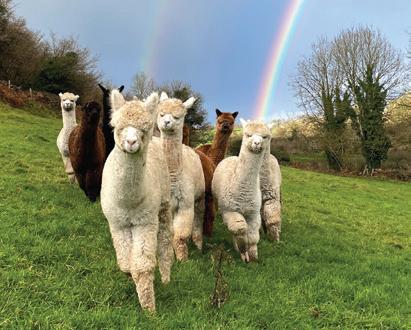
50 Glorious fibre
52 Accessible to smaller breeders
Two Rivers Mill occupies the niche between craft spinners and large commercial mills.
64 Irresistibly soft
Clare Kiely is an artist who makes felted items from her own alpaca fleece that “warm and touch and your heart”.
66 Strong market for quality breeding
Tony and Hilary Monkcom look back on 10 years of successful breeding.
70 Transforming lives
72 Total dedication
It wasn’t easy but now Sweet Home Alpaca are thriving in the beautiful Welsh Countryside.
76 Keeping up to date
How BAS communicates and what you need to know.
78 BAS courses
Education is at the heart of the membership benefits offered by the BAS.
82 BAS regional groups
BAS Members were delighted to have a normal 2022 after the disruption experienced over the previous two years. There was a full programme of shows and educational events at National and Regional levels. Thanks to everyone who puts in such an effort to make these events happen, and to everyone who attends.
The prospects for a full show and event program for 2023 look good at the time of writing. Starting with the National Show in Telford in mid-March and following on there will be lots and lots for alpaca enthusiasts to see and do (see the BAS Website for full listings).
A recent introduction to the calendar is the National Alpaca Farms Open Day which happens during the first weekend in September. The event will run again in 2023 and it is a wonderful way for getting more of the public to meet and appreciate alpacas. Over one hundred alpaca farms have participated with 50,000 visitors over the two previous events with good coverage on local radio.
BAS will be attending the World Expo in Austria in February to promote the UK alpaca scene in all its dimensions.
BAS membership and alpaca ownership continues to grow. At the end of 2022 BAS had 1,750 members (an increase of 200 on 2021) owning 40,083
registered alpacas. There were 3,000 new registrations in 2022. In 2022 the BAS registry was updated to make it even more versatile and user friendly. A new App is also available to let you manage your alpaca registrations from the field using your phone.
The prospects for UK alpaca owners remain strong. The opportunity for UK alpaca breeders to develop and sell their stock are good in the UK and Europe. The use of alpaca fibre within the textile industry continues to grow and develop. Alpacas continue to prove themselves great attractions in farm diversification with alpaca walking or trekking continuing to expand across the UK.
The alpaca community in the UK has been characterised by steady and sustainable growth from its beginnings in the 1990s. Despite the recent national economic problems, the prospects remain strong with a steady flow of new entrants that grow that community.

The BAS is here to support its membership on their alpaca journey with help, advice, education and welfare support alongside a thriving show scene and strong regional communities which allow like-minded alpaca owners to meet and support each other.
Making contact is easy by phoning or emailing me, Duncan Pullar for all your alpaca enquires – ceo@bas-uk.com
BAS launched its second UK National Alpaca Farm day last September to encourage anyone and everyone to come and meet alpacas and are exited about it happening this year. The aim is to have dozens of alpaca herds open to the public in the first weekend of September.


All interested BAS members must have registered their event with BAS. The size and type of event varies according to the BAS members farm and capacity. It might be simple or “all singing and dancing”.
To qualify for BAS promotion entry to the event must be free. Charging for merchandise, refreshments and alpaca experiences is fine.
Gorefield Alpacas, and their team of volunteer helpers, enjoyed a record breaking turnout of just over 1,000 visitors for their Farm Open Day in 2022. Visitors had a fabulous time over the weekend meeting the alpacas. With face painting, tractors, fleece spinning and a falconry display there was plenty to keep everyone entertained
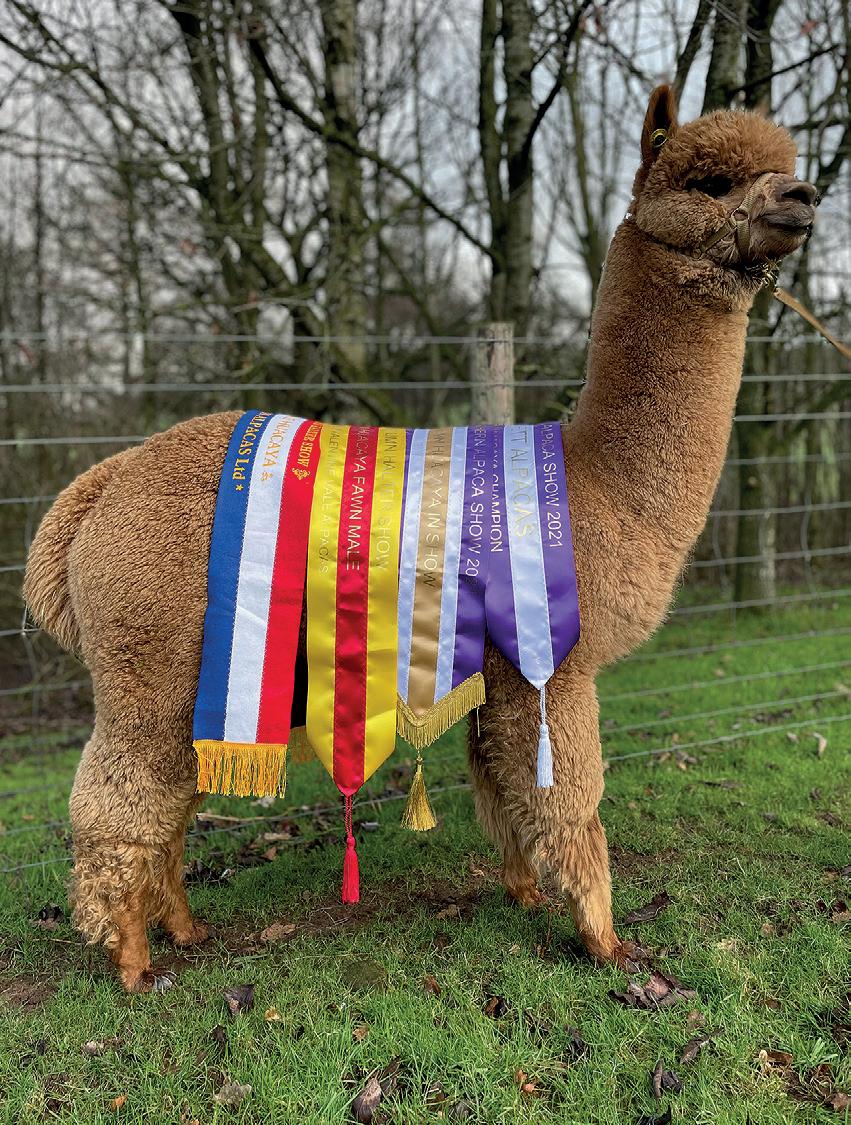
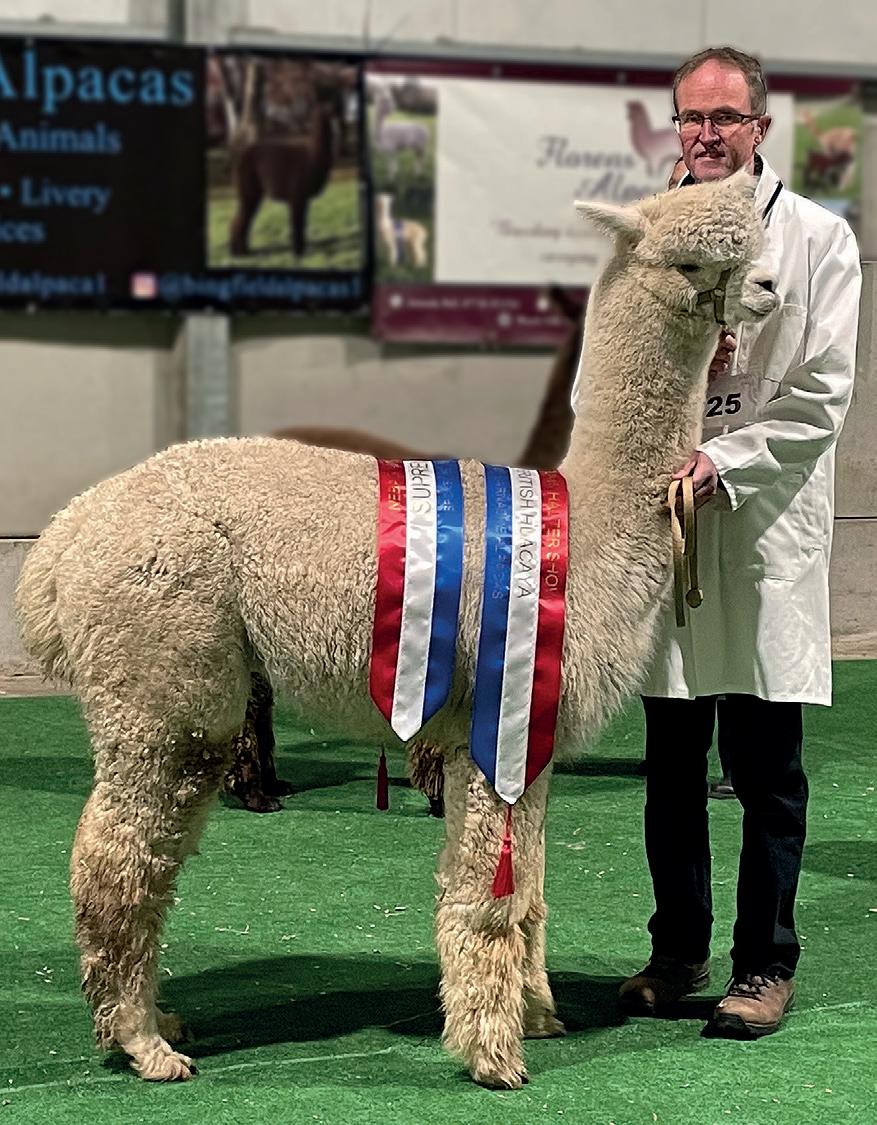
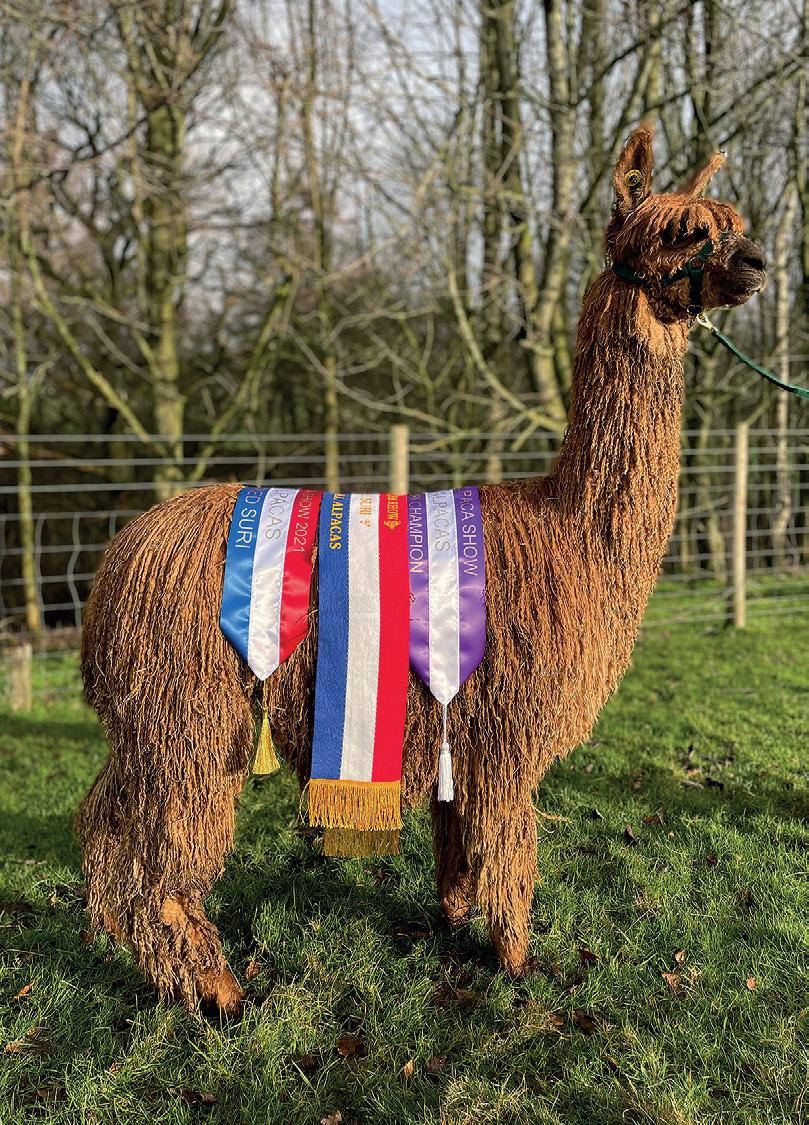
The British Alpaca Society (BAS) currently has 1,750 members representing 40,083 alpacas spread in various densities all the way from Lands End to John O’Groats.
As well as providing information and support to its members, one of the organisation’s most important functions is maintaining a pedigree registry for all alpacas in the UK national herd and a European directory for all BAS registered alpacas domiciled in Europe.
The alpaca industry is at an exciting stage of development and the BAS is working hard to support its members in their initiatives – both in the UK and Europe. By joining the Society you become part of a national community, dedicated to all things alpaca. Membership offers knowledge, networking and support to help you protect your investment and work towards your own alpaca aspiration.
The British Alpaca Society supports a national network of regional alpaca groups who meet on a regular basis to share experiences and knowledge, organise events and talk about the alpaca.
The autonomous groups provide an invaluable forum for sharing expertise through workshops, lectures and shows and related alpaca events, with the emphasis on self-help, accessibility and local initiative.
Whether you are an owner, a prospective owner, or just interested in these fascinating animals, your regional group will always make you welcome.



The BAS website is a one stop educational resource containing detailed information on the alpaca, the membership and the Society. The BAS also has its own Facebook page which it uses to keep members updated on news and the latest information on events and shows.


The BAS provides its membership with an informative quarterly magazine dealing with all aspects of alpaca ownership. The editorial content is applicable to the aspirant, beginner and established breeder within the UK and Europe. The BAS also provides its members with regular electronic information updates.
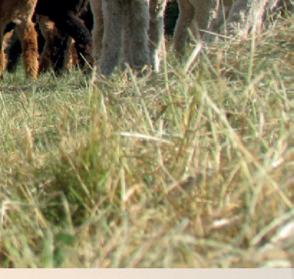

The BAS, through its regional representatives on the national Education Committee, provides members with a range of educational courses on alpaca assessment, advanced alpaca assessment, alpaca fibre and processing for breeders.
Through its comprehensive BAS judge training scheme, it provides the UK industry with certified qualified judges to support the show circuits and through its training and Recertification programme, it maintains the standard and consistency of alpaca judging in the UK.
Its National Fibre Committee provides members with information on shearing, skirting, sorting and processing alpaca fibre, keeping them up to date with all developments within the alpaca fibre marketplace.
The BAS is dedicated to the welfare of alpacas. It facilitates training and educational dvd’s and documents to aid husbandry and care of alpacas and is involved in all facets of government liaison regarding disease monitoring and exports. The BAS have emergency contacts for welfare issues and support members who have husbandry related questions or need help.
BAS Show Committees support a programme of BAS accredited halter and fleece shows throughout the length and breadth of the British Isles. Not only do these shows provide a showcase and learning experience for the general public, they also play a major part in educating and informing alpaca breeders throughout the UK.
Single membership – £84 per annum
Joint membership – £105 per annum


£10 discount for direct debit payers
Herd registration fee – £25
www.bas-uk.com



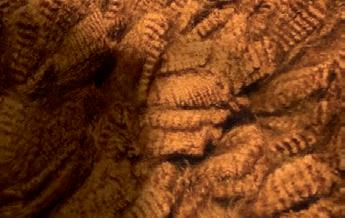







C19/M24/Y39/K4 R209/G188/B158
C5/M6/Y9/K0 R245/G240/B233








C100/M90/Y0/K0 R39/G52/B139
ART OF FIBRE UK


TARA POTTER
36 Grosvenor Road
Dorchester, Dorset
DT1 2BD
E: info@arto bre.com
T: 44 (0)7814 588499
ART OF FIBRE EUROPE
















PAUL VALLELY Moyali e House, Ballycahill, Co. Tipperary. E41 HX59 Republic of Ireland
E: info@arto bre.com
T: 353 (0)85 2581669


90% MUSTA R60/G60/B60
40% MUSTA R178/G178/B178
10 % MUSTA R237/G237/B237









Established in 2006 and home to multi supreme champion alpacas; Amberly is now the longest established, prize-winning herd of Huacaya and Suri Alpacas in Ireland.
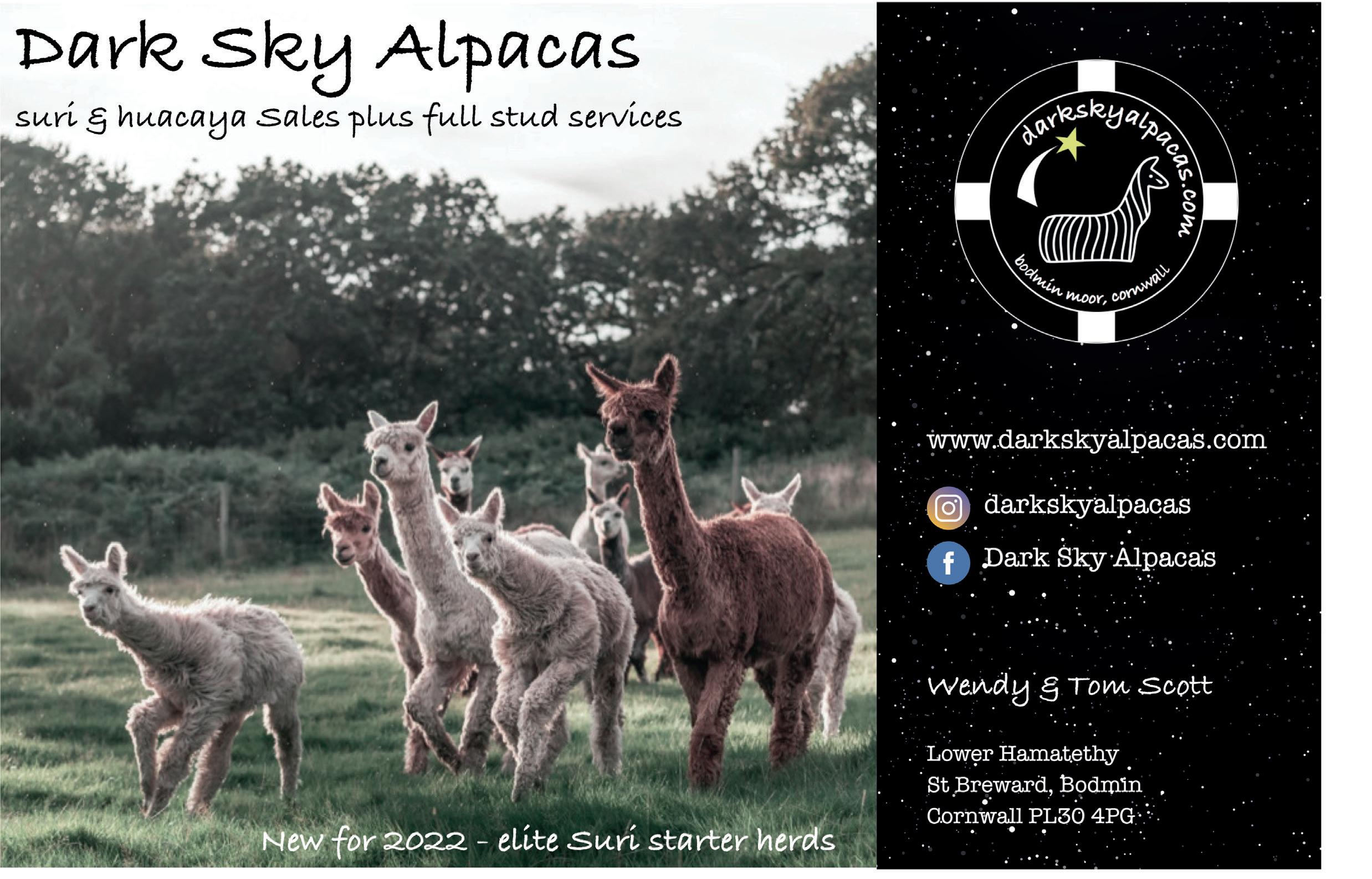


We believe that an investment in alpacas is an ‘investment in happiness’. Let our success and expertise help shape your investment the Amberly way.


An essential tool
A strong accurate pedigree database is an essential tool in the future development of our industry, and key to the development of a successful breeding strategy for all members. It provides the opportunity to look at trends within the national population, produce statistics for the BAS board, the marketing committee, Alpacas magazine, and potential new members.
With easy access for all members the Online Registry holds a wealth of information on over 73,000 animal records including pedigrees, offspring, show results and images and helps members plan unrelated matings.
Please ensure that your alpacas are part of the future – check your herd records in the Online Registry, and get all your animals registered.
If you need help or advice please contact the Grassroots Office on 01392 270421 or email pedigree@grassroots.co.uk
Or write to: BAS Registry, PO Box 251, Exeter, EX2 8WX
There are currently 40,083 alpacas registered as living in the UK in BAS herds ranging in size from two or three animals to several hundred. Most herds consist of 10 to 20 registered animals. It is important that all UK born alpacas are logged with the BAS even when they are kept as pets or for fibre production.
All alpacas should carry a microchip which is the primary form of identification and is the quickest way to positively identify a lost or stolen animal. Tag numbers should be allocated but do not have to be worn in the ear.
All cria should be logged with the BAS registry as soon as possible, and before their first birthday. There are three sections of the registry – Registered, Notified and Listed.
• All females should be ‘Registered’ (£20 +VAT).
• All pet males which will not be used for breeding or have been castrated should be ‘Listed’ (free of charge). This is important because it keeps them in the registry, and maintains their mother’s breeding record.
• All other males, whose destiny has not yet been decided should be ‘Notified’ (£5 +VAT)
• Certificates are available for Listed or Notified males for an additional £5 +VAT.
• Males selected as breeding studs must be fully registered. (£50 +VAT to include the compulsory DNA profile). The DNA profiles can then be used to parentage verify cria in the future. Late fees apply to all cria applications which are not reported to the registry until after their first birthday.
Animals which have been sold should be transferred on the registry to the new owners. The transfer fee applies to ‘Registered’ females, ‘Registered’ and ‘Notified’ males and is normally paid by the vendor. Transfer of ‘Listed’ non-breeding males is free of charge.
The details of all ‘Registered’, ‘Notified’ and ‘Listed’ alpacas is available via the Grassroots Online Registry at grassroots.co.uk/bas.html
The landing page links to the animals you own (top left), your membership details and payment methods (bottom left).
In the top right hand corner are the ‘action’ buttons:
• The magnifying glass – to search for people and the animals they own, any animals in the database, and animals which are available for sale or hire.
• Sort or filter the list offered, click on an animal to view its details; pedigree, offspring, show results and images if the owner has uploaded them from the Grassroots Mobile App.
• The menu icon – for a list of all the actions you can apply to make online: report births, register previously notified males, transfer ownership out of your herd, report deaths, apply for DNA profiles (this is automatically included in the application to register a male).
The replacement online show entry system is now available and provides a full list of shows. You can go back in at any time to check which animals you entered, make changes up until the show is closed, and reprint fleece sheets. The entry system filters the classes to help you make the correct choice and reminds you of the shearing dates you logged for each animal at previous shows.
Use Check Mate in the menu list to look for common ancestors in potential matings.
Please do check that the animals are on the
There are now four ways you can apply to notify, list or register your cria with the BAS.

1
You can make an application via the Grassroots Online Registry. You will need your member number/herd letters and password, if you have forgotten them please contact the Grassroots office.
2
You can make an application via the Grassroots Mobile App which you can download from the Google Playstore or Apple Appstore.
3
You can email your application as an excel spreadsheet. This is particularly useful for members who already have an on-farm computer system because the report can be exported direct from that system. The excel spreadsheet must include your herd letters and name in the title of the file. The whole batch in that file must be destined for one registration type (eg, notified males, listed males or full register).
4
You can send a paper application form. These can be downloaded from the website or contact the Grassroots Office and they’ll pop one in the post.
BAS database or contact the Grassroots office for assistance on 01392 270421 or pedigree@grassroots.co.uk. It is very important that animals are registered before you buy because cria can only be registered by the person who was the registered owner of their mother on the day they were born.
If you purchase unregistered animals you will not be able to register them yourself, and any cria they subsequently produce will not be eligible for registration. Remember if you are planning
to show, or to breed animals you may wish to sell in the future, you must begin with pedigree registered stock.
Registration is also important because the pedigree of an animal, its offspring, siblings and other relations are a good indicator of its breeding potential and that of its descendants. If you want to breed to improve your stock, you need to know as much as possible about what you are buying.
If you do already own unregistered stock, please contact the BAS registry for advice. It may be possible to trace their registered parents and arrange for late registration and transfer. Failing that, there is a ‘grading-up scheme’ which enables unregistered stock to be brought back into the fold, over three generations.
In the UK population it is expected breeders will want to continually improve all the traits. This BAS breed standard has been developed to encourage the objective assessment of the form and function of alpacas in the UK. It is intended as a guide for breeders to help promote the pursuit of alpacas exhibiting high quality fleece traits on a correct frame.
 Photo:: Amberly Alpacas
Photo:: Amberly Alpacas
ABAS working group, led by Ken Freivokh, took on the task of developing a BAS Breed Standard. BAS are delighted to present the product of these labours below. Thank you to everyone who contributed.
The process of discussion and consultation with members was designed to try and involve as many people with an opinion and interest as possible. One of the guiding principles employed in the development was to keep the standard simple enough to be useable and relevant to as many BAS members as possible. The temptation to be too detailed was, hopefully, avoided.
The ideal alpaca should be fit for function and embody the best conformational and fleece traits of the breed. Simply put, an ideal
Phenotype
Side Profile
Head
Forequarters
Hindquarters and Tail
Genitalia & reproduction
alpaca is one that produces high quality fibre over a long, healthy, and productive life.
The breed standard describes traits as ‘ideal’ and ‘negative/undesirable traits’, most alpacas will fall somewhere between the two on the continuum of the different characteristics. The “ideal” element of the breed standard promotes the goal of reaching the ideal through selective breeding, resulting in genetic gain and improvement in phenotype.
The traits are not listed in any particular order. In the UK population it is expected breeders will want to continually improve all the traits. Thoughts about what represents the ideal can, and do, change as new knowledge is acquired and this standard is not intended to be a static document, but to evolve alongside alpaca breeding in the UK and reflect the thinking of the time.
• Alpacas should have a balanced, proportioned frame, free moving, with a strong substance of bone and an alert stance
• The head should be carried high
• Squared-off appearance, neck and legs should be the same length and 2/3 length of the body
• Topline (back) straight and level rounding off at the croup to tail creating a slightly sloping rump
• Dense top knot (Huacaya)
• Dense top knot with well-defined locks (Suri)
• Wide and deep, wedge-shaped muzzle
• The eyes should be clear, bright, and set well apart
• The nose should exhibit two well-defined symmetrical nostrils
• The upper lip is divided and mobile
• The incisors should meet the front edge of the upper dental pad
• The ears are of medium length, erect and spear-shaped
• Chest should be broad and deep, well sprung ribs
• The withers well fleshed, set well into the shoulders forming a straight line with the back
• Forelegs should be strong and straight
• Pasterns should be firm and upright
• Feet should be neat and well-formed and bear two forward pointing toes
• The sole of the foot should be covered with a callused membrane
• Rump broad
• Well-spaced pin bones
• Tail should be straight and long enough to cover the genitalia
• Thighs should be well-muscled
• Hind legs should be straight from hip to the centre of the foot and parallel when viewed from behind and the correct angulation when viewed from the side
• Pasterns should be firm and upright
• Feet should be neat and well-formed and bear two forward pointing toes
• The sole of the foot should be covered with a callused membrane
• A female’s udder should show good capacity, with four uniformly positioned teats
• Females should have a normal size functioning vulva
• Males should have external genitalia correct in size, shape, and position, with two evenly sized, firm testicles descended into scrotal sacs of appropriate size for age
• Obvious lack of balance
• Light substance of bone
• Narrow head
• Obvious incorrect proportions
• Low neck set
• High tail set with tail straight from spine
• Swayback or humpback
• Curvature in spine, neck and/or tail
• Open, thin topknot
• Very narrow head, shallow muzzle
• Eyes with cloudy appearance, pale blue eyes
• Excessive fleece on the bridge of the muzzle beyond the age of three years
• Asymmetric nostrils
• Incisors excessively under or overshot
• Ears excessively out of proportion to head, banana shaped, fused or gofer
• Wry face
• Very narrow chest
• Loose shoulder blades
• Severely base narrow or base wide
• Buck knees, calf knees, severe knock knees
• Very prominent withers
• Weak, dropped or camped over pasterns
• Polydactylism
• Syndactylism
• Severe cow hocks
• Obvious sickle hocks
• Severe post legged
• Luxating patella
• Very narrow hindquarters
• Severely base narrow or base wide
• Weak, dropped or camped over pasterns
• Bent or kinked tail
• Steeply sloping rump
• Squared-off rump
• Tail absent or abnormally short
• Polydactylism
• Syndactylism
• Less or more than four teats on males or females
• Fused teats
• Testicles that are too small or of uneven size or undescended into scrotal sac
• Fused vulva
Height
Movement and Tracking
• A mature alpaca should measure no less than 32”/81 cm at the withers
• Alpacas should move soundly and exhibit an even stride length with two distinct tracks, the hind feet following the front ones
• Alpacas should have a fluid movement
• Obviously undersized or oversized for age
• Paddling on the front feet
• Rope walking
• Obvious uneven stride and/or length of stride
HUACAYA IDEAL
Uniformity of Micron
Fineness and Handle
Density
Character
Brightness
Uniformity of Colour
Staple Length
Guard Hair
Tail
Gaskin
Hock
Croup
FLEECE TRAITS
• Uniformity of fibre diameter (micron) within the staple and across the body resulting in a low standard deviation measurement (SD)
• Minimal difference in micron between primary and secondary fibres
• Low micron not only in mid-side sample but across the animal into extremities
• Low transition line
• Soft and silky handling fleece
• Uniform, well aligned fibres both within the staple and across the body
• High ratio of secondary to primary fibres
• Highly aligned fibres with crimp definition
• Very well-defined staples which break into micro staples
• High degree of brightness displaying across the fleece which enhances handle
• Uniformity of colour in staple and throughout the fleece (on solid-coloured alpacas)
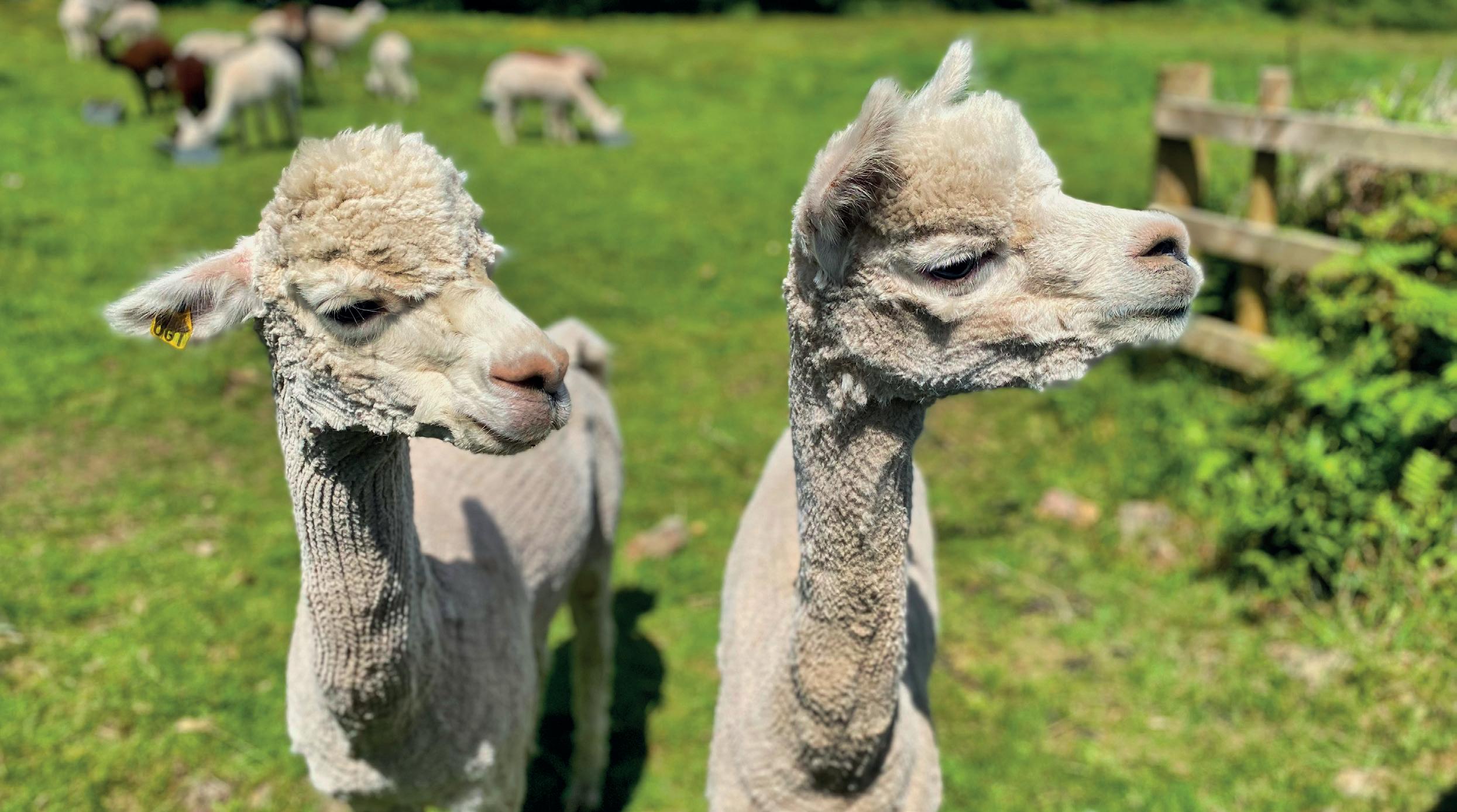
NEGATIVE/UNDESIRABLE TRAITS



• High degree of variance in micron between primary and secondary fibres both within the staple and/or across the body (high SD)
• High levels of coarse fibres
• High degree of variability in the fibre diameter
• Harsh handle (prickle factor)
• Lacks density - open fleece
• Lacks any crimp definition or organisation
• Very dull
• Chalky look and feel
• Strong variance in colour within the staple, in patches or spots (multi-coloured alpacas and the white tuxedo pattern in traditional greys not included)
• Strongly differing colour in primary fibres compared to secondary fibres
• Producing a staple length each year that is suitable for processing and is uniform in length across the body
• Low levels of guard hair across the body
Ears Eye
Rump Withers Back
Bonnet/Top Knot
Muzzle
Mouth
• A length not suitable for processing
• Variable in length across the body

• High levels of guard hair (stronger straighter fibres) in main blanket area
Pelvis
Tail/coccygeal vertebrae
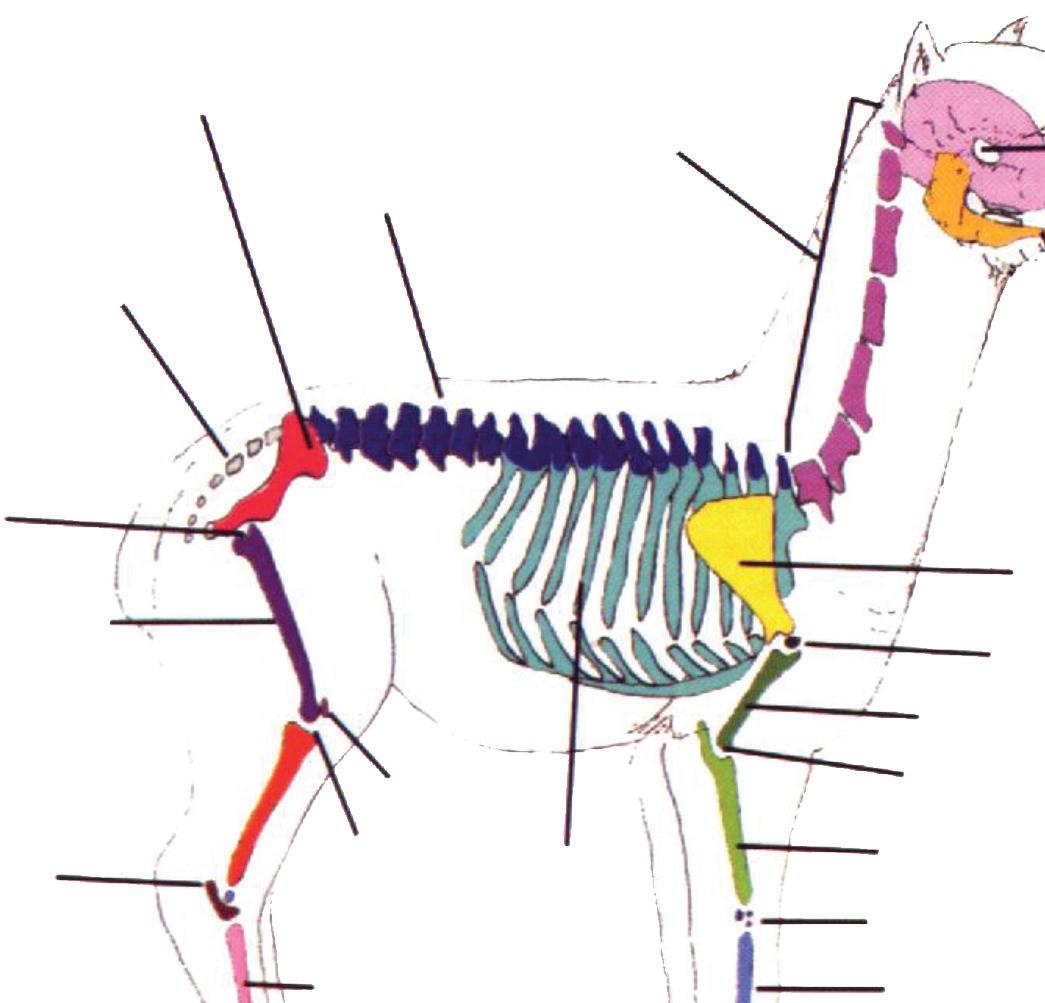
Pin bone
Hip Femur
Hock
Stifle
Hind Cannon
Hind Ankle Flank
Cervical vertebrae (neck)
Vertebrae (back)
Orbit
Maxilla (lower jaw)
Mandible (lower jaw)
Scapula (shoulder blade)
Shoulder joint
Humenus
Elbow
Patella
Stifle Ribs
Hind Pastern Metacarpus
Radius
Carpus
Metacarpus
Fetlock
Front Pastern

Lustre
Uniformity of Micron
Fineness and Handle
Density
Lock Structure
• High degree of lustre
• Uniformity of fibre diameter (micron) within the lock and across the body, resulting in a low standard deviation measurement (SD)
• Minimal difference in micron between primary and secondary fibres
• Low micron not only in mid-side sample but across the animal into extremities
• Low transition line
• Silky and cool handling fleece
• Uniform, well aligned fibres both within the lock and across the body
• High ratio of secondary to primary fibres
• Lock can be wave & twist, tight twist, corkscrew, or straight but should be highly aligned and start close the skin, layering and carrying solidity to the lock
• Individual locks breaking down into micro locks
• Severely lacks lustre
• Extremely chalky, dull, or flat
• High degree of variance in micron between primary and secondary fibres both within the staple and/or across the body (high SD)
• High levels of coarse fibres
• High degree of variability in the fibre diameter
• Harsh handle (prickle factor)
• Lacks density - open fleece
• Lacks any lock structure or solidity to the lock
• Lofty
Guard Hair
Uniformity of Colour
• Low levels of guard hair across the body
• Uniformity of colour in lock and throughout the fleece (on solid-coloured alpacas)
• High levels of guard hair (stronger straighter fibres) in main blanket area
• Strong variance in colour within the lock, in patches or spots (multi-coloured alpacas and the white tuxedo pattern in traditional greys not included)
• Strongly differing colour in primary fibre compared to secondary fibres
Lock Length
• Producing a lock length each year that is suitable for processing and is uniform in length across the body
Balance Neck should be same length as legs and two thirds the length of the back
Base Narrow Legs set close together
Base Wide Legs set too wide apart
Blanket Prime fleece from shoulder to mid-section to rump, both sides
Buck Knees Knees bowed forward (viewed from the side)
Calf Knees Knees bowed backward (viewed from the side)
Camped over Bowed out at the fetlock (viewed from the side)
Character The demonstration of the crimp throughout length of staple
Consistency The uniformity of the micron, crimp, character, and density within the lock and throughout the fleece
Coverage The distribution of continuously growing fibre across the whole body of the alpaca
Cow Hocks Rear legs turned inwards at the hock (viewed from behind)
Crimp The natural wave or curl of individual fibres, grown into the fibre from the follicle
Density The number of fibres measured per square unit area
Dropped Pasterns Too much angulation at the fetlock (viewed from the side)
Fineness The diameter of fibres measured in microns
Fleece The fibre from a single live alpaca, in its natural state
Fused Ears Ears look normal from the outside, however, the inside of the ear’s cartilage is fused together
Fused Teats Front, back or both quarters teats are attached to each other
Gopher ears Very short stubby ears
Guard hair Coarse, modulated (hollow or partially hollow) primary fibre, usually greater than 30 microns in diameter and straight
Handle A tactile feel of the fleece to the hand – soft, harsh, etc.
• A length not suitable for processing
• Short annual fleece growth
• Variable in length across the body
Humpback The backline is convex
Knock Knees Knees bending inward (towards each other – viewed from the front)
Lock A group of fibres of similar character, usually when referring to Suri Lustre The amount of light reflected by the fibre. The sheen or gloss. Can vary with lighting
Luxating Patella Loose patella (kneecap)
Mid-side An area midway between the front and rear legs on the side of an alpaca and approximately 6-8 inches down from the backbone
Organisation How the fibre lays within the lock/staples that make up the overall appearance of the fleece
Phenotype The alpaca’s appearance
Polydactylism More than two toes on a foot
Post Legged Rear Legs straight – no angulation from hock to fetlock (viewed from the side)
Rope Walking Front and back feet are walking on the same centre line, or crossing over the centre line
Sickle Hock Too much angulation at the hock (viewed from the side)
Staple The group of fibres or lock
Staple length The length of the staple from skin to tip
Strong Thick, coarser fibre having a higher micron measurement
Style A cumulative and overall aesthetic effect of fibre characteristics found in a fleece
Substance of Bone Circumference of bone
Swayback The backline is concave
Syndactylism Fusion of two toes on the same foot
Uniformity The even distribution of characteristics within a fleece – micron, crimp, length of staple, colour, fineness
Withers Area at the base of the neck along the first part of backline
Embarking on the journey of alpaca ownership is one that should be filled with excitement and anticipation. As breeders, it is our duty to ensure that new and prospective owners, receive a positive buying experience and a supportive transition into ownership. In my opinion, introducing people to the wonderful world of alpacas should be considered a privilege and an honour and quite often these initial meetings, turn out to be the foundation for ongoing business ventures and lifelong friendships.
There are many reasons why people keep alpacas. They can be kept as breeding-seed stock, as flock guards, as pets or solely as fibre producing animals. They may also be enjoyed as a means of facilitating lifestyle changes, farm diversification and aspects of agri-tourism. In fact the options and
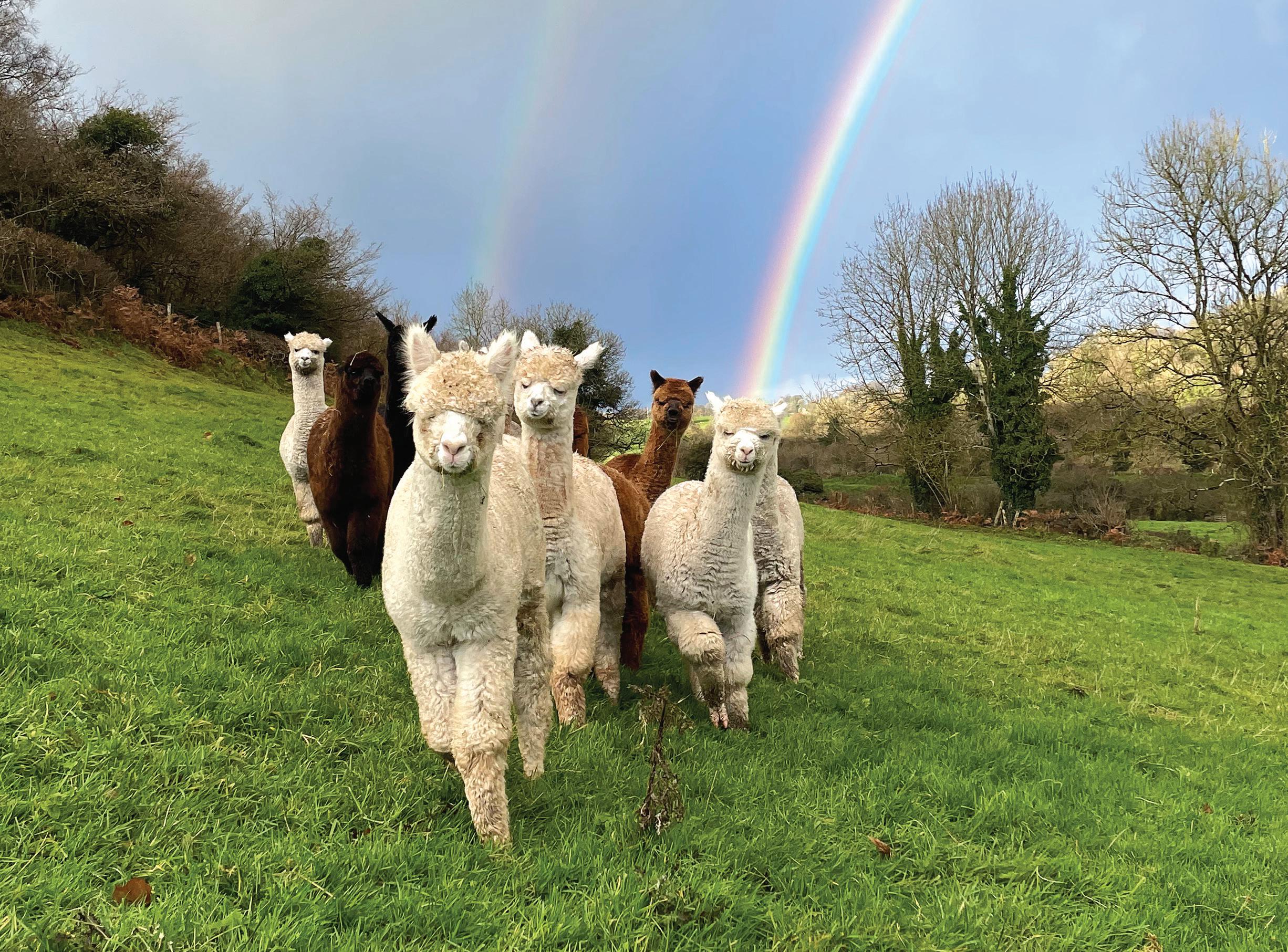
combinations are endless.
Regardless of the reasons for keeping these majestic creatures, when starting out, the first consideration must be; ‘Can I provide for and meet the animal’s needs?’ As a general guide it will be important to ensure that you can guarantee the long term provision of pasture land to graze and to roam, shelter, adequate feed, medical care (if required) and essential husbandry, annual shearing and time, patience, care and interaction.
Having considered the abiding requirements of these long-lived animals and evaluated one’s ability to look after and meet their needs, potential buyers and new owners should be encouraged to become actively engaged in the alpaca world. This may be achieved in many different ways and as a
Here
Alpaca socks
Lovely knitted items
Penrose alpaca duvets and pillows
Alpaca yarn and fleece
Cuddly toys
And a herd of friendly Alpacas
So, come and visit soon!
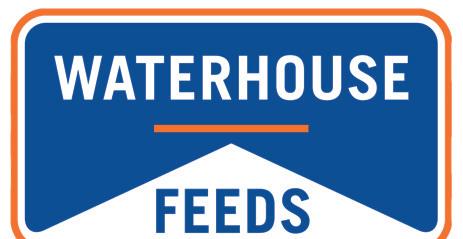

Mulberry Grange, Red Hall Lane
Higher Penley, Wrexham LL13 ONA

Tel: 07713 639 447 or 01978 710224




Email: mulberryalpacas@btconnect.com


We’re 4 miles north of Ellesmere
Open Saturdays 10.00 until 16.00 and by appointment
www.mulberryalpacas.co.uk









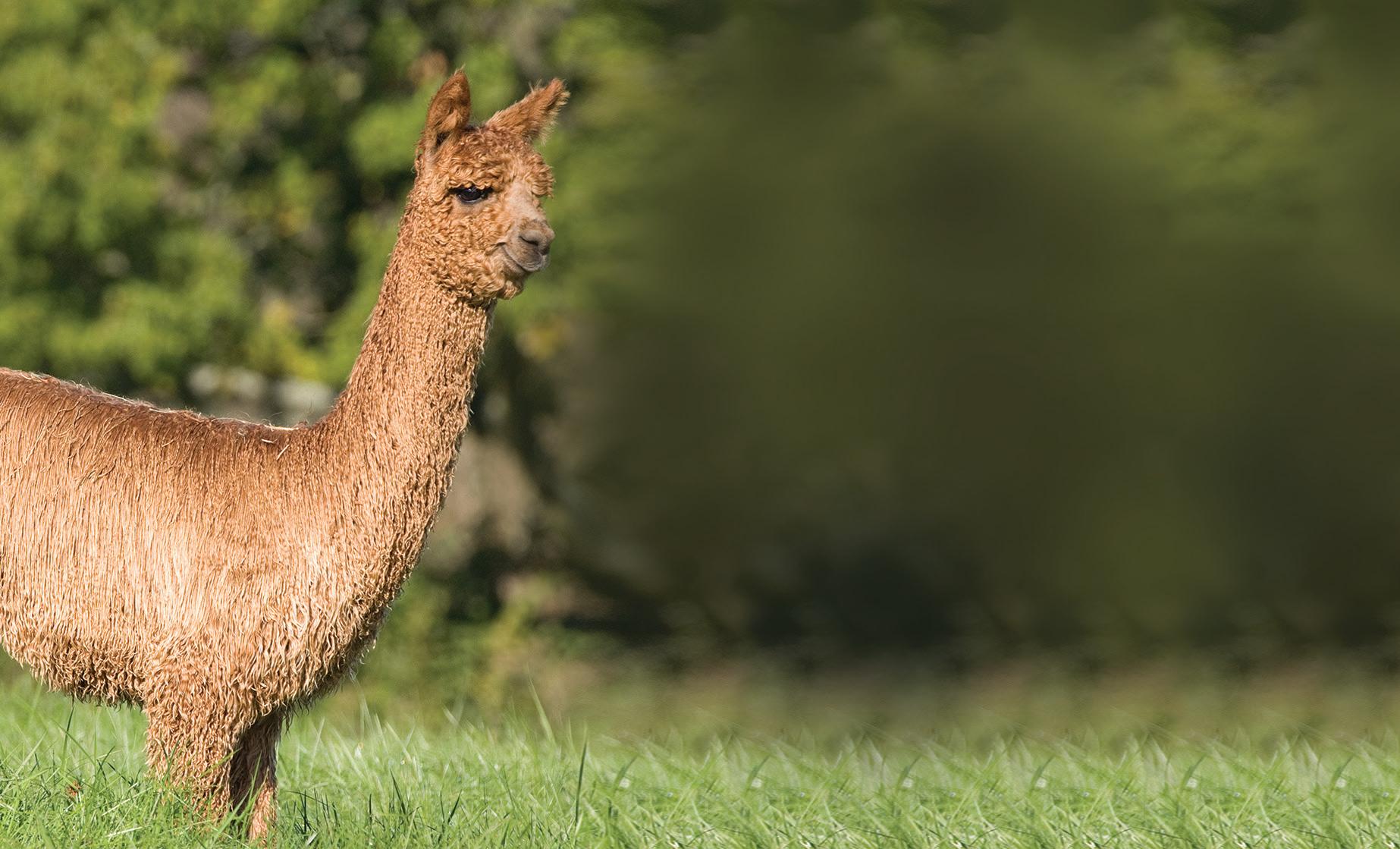
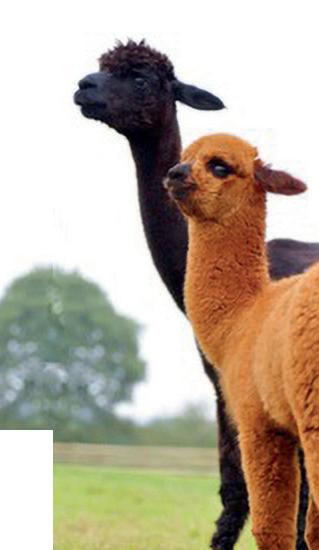
guide, may include the following:
• Joining the British alpaca society (BAS) and becoming part of the national network for ‘all things alpaca’

• Immersing oneself in as much research and reading as possible
• Developing one’s confidence and skills base by participating in the BAS’ Affiliate Training
and/or any other available seminars, workshops and training courses
• Speaking to as many breeders and visiting as many farms as possible
• Attending alpaca events such as shows and speaking with the exhibitors
• Buying only BAS registered alpacas from BAS members
• Asking about the sales procedure (including movement testing and health checks) and the level of back up and support that will be available post sale and ongoing
• Going with the breeders that you feel you connect with most and that you feel can help fulfill your long-term objectives.
Purchasing alpacas for the first time is very much based on trust. New owners should expect to receive animals that meet their expectations, as discussed and agreed prior to the sale. All BAS members offering alpacas for sale should adhere to the British Alpaca Society’s Code of Conduct for Sale (available on the BAS website). As a short guide, expectations may include;
• Correctly conformed, easy to handle alpacas with a good temperament

• Breeding stock that is fertile and comes with a fertility guarantee (or other agreement),
• Females that are selectively mated to an agreed stud male
• Certificate of mating and ideally a confirmed pregnancy by ultrasound scan,
• Full health and husbandry records,
• Pre movement veterinary testing/checks (if required)
• Performance and other history including show results, fibre histograms and fleece weights (if applicable)
• Information on covering sire and progeny or siblings including photographs and performance records (if applicable)
• Comprehensive After Sales backup and ongoing support.
Regardless of what your plans are or your reasons for starting with alpacas, my advice is to start out with the best quality animals that your budget will allow.
Don’t rush in… take your time, consider your options and enjoy every part of the journey along the way.




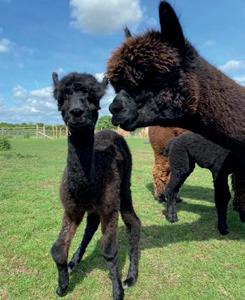

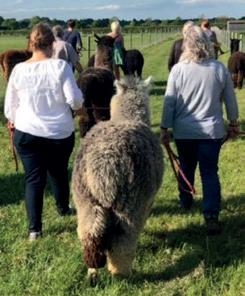




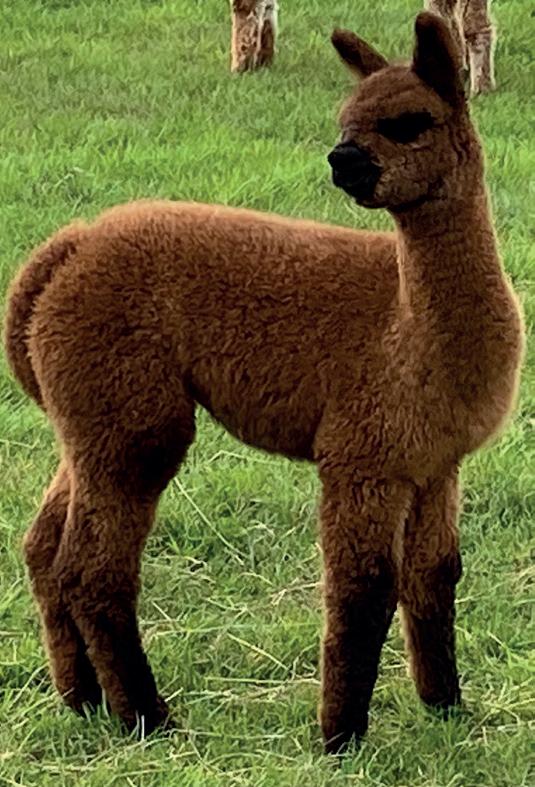

The British alpaca Industry is in a very healthy state and demand for quality breeding stock is outstripping supply globally, writes BAS judge and breeder, Tim Hey, Inca Alpaca.
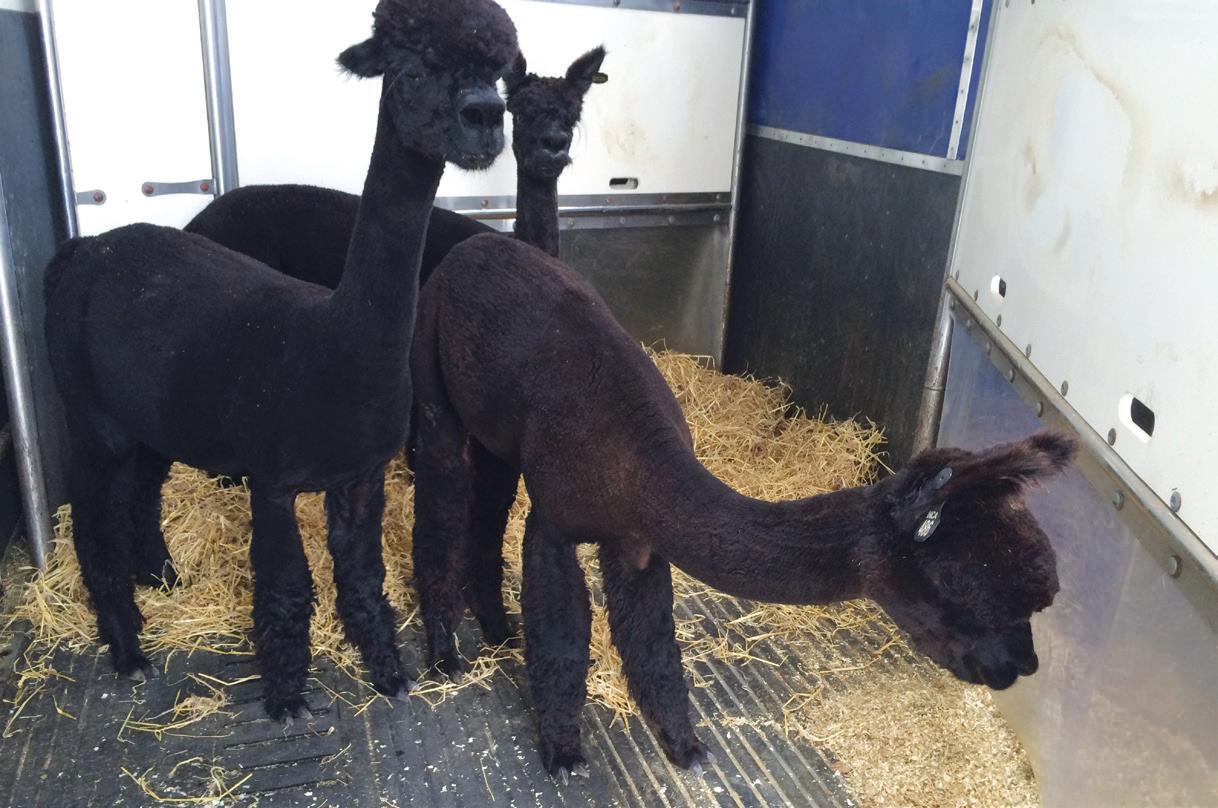


Here in the UK we are lucky as our alpacas are thriving due to the excellent nutrition we have on offer, world class breeding strategies and the British Alpaca Society (BAS) that continues to support breeders in all aspects of promotion and education. BAS members are in a perfect position to capitalise on this exciting, sophisticated and growing industry as the future of British alpacas has never looked brighter.
The UK has long had a relationship with alpacas, starting in the mid 1880’s when the beauty and resilience of alpaca fleece was ‘rediscovered’ and re-awoke the world’s interest. Sir Titus Salt, originally from Morley near Leeds in Yorkshire “discovered” the remarkable fibre of the alpaca and began promoting its use in the finest fashion houses of Europe.
In the mid 1990’s the UK approved imports from Chile and in September 1996 BAS was formed. These imports of foundation stock were soon followed by large imports of quality stock from Peru and then Australia and the US and these bloodlines started to change the face of the British industry as the alpacas began their development towards a commercial fibre producer.
In Europe, alpacas are a bloodstock industry and breeders will make money from breeding for some time before we have enough fibre to satisfy commercial demand. The BAS underpins the value of the domestic herd through a number of valuable initiatives including:
• The establishment of a screening protocol or pedigree pass for all imported alpacas
• The administration of a world class pedigree register that links, or is in the process of linking, valuable attributes such as show results and the Estimated Breeding Values (EPV)
• Support to regional groups offering local services, education and promotion
• A thorough and well respected judge training programme
• Welfare and husbandry training courses delivered by BAS affiliate trainers
• A comprehensive network of halter and fleece shows
• All aspects of marketing and promotion to promote breeder sales.
The size and quality of the British herd continues to grow from strength to strength as sales of seed stock remains high. In fact, 2021 saw an increase of 21% for pedigree transfers of female alpacas on the previous year. The current population of registered alpacas in the UK is 40,083 and is expected to grow as BAS membership increases and the females are bred.
This increase in sales of breeding stock, and the confidence in the British industry can be attributed to several factors, including: a 69% increase in exports due to strong EU, Middle Eastern and Indian demand, lifestyle changes for people moving from the urban areas to the countryside, increased prices and demand for fibre and low global supply of breeding stock due to China’s dramatic herd growth as a result of importing.
The UK is in a very healthy position to thrive going forward as it benefits from experience in relation to alpaca health, nutrition and improved breeding selection techniques. For many generations now breeders here in the UK have been selecting for production traits when breeding. These traits include:
• Correct conformation
• High fertility
• Easy birthing
• Fast growth
• Disease resistance
• High yielding quality fibre.
This selective breeding has resulted in much healthier and far higher quality stock and the rate of improvement has been dramatic. The veterinary community also have greater knowledge and understanding of alpacas and are able to give better advice and treat any issues quicker and more effectively.
The implementation of health and biosecurity plans formulated in conjunction with farm vets are becoming more common place and this is improving heard health, growth, fertility rates and disease monitoring.
The development of the Enferplex test offered by www.surefarm.co.uk has undoubtedly boosted the confidence of owners and buyers when it comes to bovine tuberculosis (TB) surveillance. Breeders have embraced this sensitive test – some herds get their whole population tested annually and most now carry out pre and post movement tests. The Enferplex test has also been welcomed by exporters as buyers in the EU demand assurances that the stock they are buying is TB free and this test does reduce the risk of importing disease.
Brexit brought new challenges to the European alpaca community as the UK moved from EU member state to third country status. This resulted in two major changes to the way exports are carried out. Firstly the export health certificate has altered in regard to the TB tests that are required. Instead of the export alpacas only being tested for TB 30 days before they are exported, these new criteria have come in to place:
1. All exporting alpacas must have been on the holding for the last 40 days.
2. All breeding alpacas on the holding where the export is taking place from that are over the age of two years must have a Single Intradermal Comparative Cervical Tuberculin (SICCT) test, followed 10-30 days with an Enferplex antibody blood test. This then validates the herd for the following 12 months and any of the alpacas from the holding can be exported without any additional TB testing.
3. If any of the alpacas for export have arrived on the holding where they are being exported from, in the last six months, they must have come from a herd that is part of a TB surveillance scheme such as the one offered by Sure Farm which offer whole herd Enferplex testing.
4. All alpacas being exported must have a blood test for Brucellosis in the last 30 days.
5. Any deaths on the holding must be investigated with post mortem examinations.
6. There must be a herd health plan created in conjunction with the farm’s vet.
Please note that exporting to countries outside the EU will require a different set of pre-export tests and an export health certificate specific to that country.
The way the export is treated in relation to customs has also altered as a result of the UK leaving the EU. All alpacas now need to clear customs and have VAT paid by the importer before they can cross into or out of the EU. The need for customs clearance when entering the EU at any of the ports such as Calais, Caen and Hoek on the mainland and Rosslare in Ireland has meant that most of these ports were not set up to process animals from the UK formerly a member state and now a third country. This meant new facilities had to be constructed and approved and to date Rosslare has been approved – alpacas have been moving through the port and we expect Hoek to come on line at any time and the French ports soon after. Although Rosslare is the only port in Western Europe that has been approved to accept alpacas through their border control post, luckily there is a ferry that runs from Rosslare to Cherbourg and this has helped maintain a smooth and cost effective route to Europe.
Exporting alpacas from the UK, whether to the EU or to meet growing demand in the Middle East and India, still remains straight forward and open to alpaca breeders large or small. We invite all alpaca owners in Europe, the Middle East and India to come and see what our great nation has to offer. Pre-export testing and customs papers are very affordable and transport to the EU remains good value, especially when alpacas are shipped in numbers.
Our stock here in Britain is world class and buyers can purchase with confidence, especially as the strict pre-export testing measures are the strongest in Europe. Many UK owners may be surprised to hear just how many small breeders have exported in the past as the perception is that it’s really only available to the larger breeders.
Imet Dr Jane Wheeler at a British Camelids conference in 1990 (pre BAS era). We discovered a mutual interest in archaeology, although I had no idea at the time of her pre-eminence in the field, and we have been friends ever since. Her husband Dr Raul Rosadio was doing research in Edinburgh at the time, and Jane introduced me to the South American Archaeology group in London, where we attended some fascinating seminars on latest digs and developments all over the continent.
Then in January 1993 I received a phone call from Jane asking if I might be able to spend a month in Peru with her to investigate the El Yaral mummies. These naturally mummified llamas and alpacas were

discovered near Moquegua in Southern Peru, at about 1,000 metres above sea level. One thousand years ago they were buried in the floors of pre-Incan houses as offerings to the gods, and their wonderful state of preservation in the earth was due to the almost completely rain-free climate, giving a unique opportunity to study pre-conquest animals. Jane had already taken some preliminary samples from these mummies, but now wanted to investigate them further. There was no funding for the work, but we would have accommodation plus the use of a vehicle. I couldn’t pass up this opportunity and on 27 January off I went!
In Lima the morning after I arrived I was awoken by a bomb going off at 06.45. My hosts (friends of Jane) calmly said ‘it happens all the
time’. The explanation was that Peru’s President Fujimori lived only a few hundred metres away. After a few days preparation we flew down to Tacna in the far south of Peru, where we caught a taxi to Ilo on the coast. Ilo is a port which is mostly owned by a USA copper mining company; we were allocated a room in a house used by company guests. Luckily there was a small electric fan in our room which was very welcome as the heat was intense, even overnight. The biggest challenge was reaching the front door and getting through it before the swarms of cockroaches all around the door, alerted of our approach by the sensor light, beat us inside! All meals were provided for us in the staff canteen a short walk away, and we met Sonya (who was employed by the company to oversee all the archaeology work in the area) at dinner that evening.





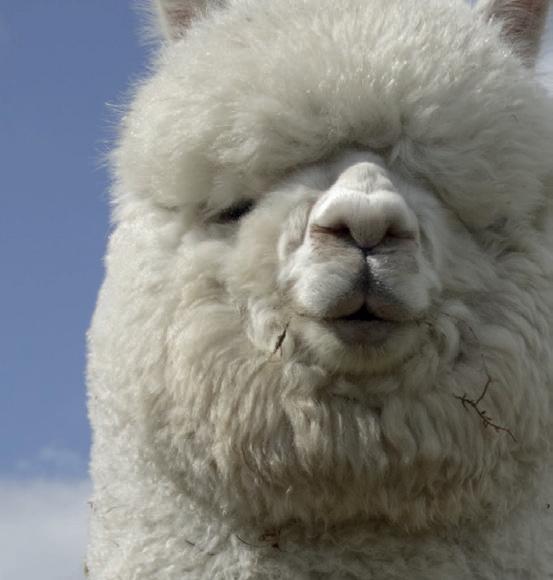
11 million years ago the earliest ancestors of modern camelids existed in the continent now known as North America. About three million years ago some of these migrated into South America, eventually developing into guanacos, vicunas and other camelid species now extinct. One of these extinct camels stood three metres at the shoulder. In the mid nineties my husband Ken and I visited a huge cave in the Torres del Paine National Park in Chile where the bones of this extinct camel were discovered. Man reached the Americas about 20,000 years ago by migrating over the Bering land bridge which existed between north eastern Asia and north western North America at that time. It appears that all the large animals remaining at that time in the Americas soon became extinct as man advanced down through the two continents. Some camels also used the land bridge around the same time and migrated in the opposite direction, from North America to Asia, eventually becoming the camels that we know today as Bactrians and Dromedaries.
About fifteen thousand years ago man first arrived in South America. Until about seven thousand years ago he lived a hunter-gatherer existence, when he would hunt the wild deer, guanacos and vicuñas to provide meat and skins, and bones to use as tools. One excursion Jane and I made in 1993 took us high into the mountains, where ancient caves had been used as a hunting base by these hunter-gatherers more than 10,000 years ago. The caves had wonderful wall paintings inside depicting the hunting of guanacos (see photo) and outside, scattered all around, we saw many stone age arrow heads.
Between about seven and six thousand years ago man started to domesticate the wild guanacos and vicuñas, and the alpaca emerged as a result of the domestication of the wild vicuna. From this time onward the wonderful colour range of the alpaca was able to develop. In the wild, natural selection would be biassed toward the natural camouflage vicuña colouring, no longer necessary in captivity. The alpaca also developed its continuously growing fleece as a result of domestication, making shearing a necessity. Jane had previously excavated ancient domestication sites at over 4,000 metres elevation, where many young alpacas were found to have died of disease due to the animals being restricted to small areas, where they could more easily pick up parasites. Successive cultures of peoples in South America continued to farm alpacas and llamas in the Andes, from altitudes over 4,000 metres, right down to coastal regions. After the Spanish Conquest the lower levels were reserved for sheep, goats and cattle. 1,000 year old sacrificial mummified remains of alpacas and llamas at El Yaral (altitude about 1,000 metres) show how the domestication of the wild camelids had evolved over the millennia, with evidence of selective breeding for fine fibre in both species, with the fibre of one of the alpacas giving a micron count of 17.9, with only 1.1% deviation over the entire fleece. They were buried in the floors of the houses as sacrificial offerings to the gods (each with a matching colour guinea pig).
>> Continued on next page

fast acting formula





anti-bacterial, anti-viral & anti-fungal quickly relieves, soothes & calms

cuts, grazes & post surgical sites

weepy eyes
foot rot
fly strike sores
irritation caused by mites
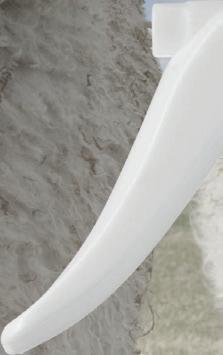
safe to use on pregnant animals & their young no damaging chemicals or dyes to fleece passed for use in organic lifestocks systems
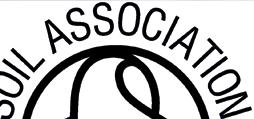
100% safe on all skin types
Available from all good animal care stores including Pets At Home & Just For Pets

info@leucillin.co.uk

www.leucillin.co.uk




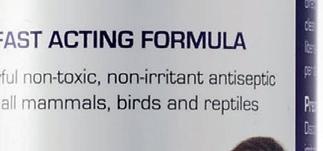



0345 548 9800

Alpaca fibre was prized by the Incas, whose Quechua speaking descendants in South America still spin the fibre as their ancestors did, using a drop spindle, and then dye the yarn and knit or weave it into the most intricate patterns. Following the Spanish Conquest of Peru, 90% of indigenous humans and camelids died out, along with their careful breeding practices.
We spent most of our time in a ‘motel’ by the Pan American highway. The only guest room had a shower (cold water only) and toilet, but no glass in the windows, so we had an uninterrupted view of the southern night sky, along with the noise of numerous lorries rumbling along the highway. Then one night we experienced an extra large and long rumble which turned out to be an earthquake! The motel’s owner Andrew was the son of British missionaries who sadly died when they had driven off a high mountain track. Andrew was a schoolteacher whose spare time was wholly devoted to helping his local Peruvian community.
The alpaca and llama mummies we worked on had been stored at the motel. They were in wonderful condition, as if they had just fallen asleep in the cush position with their heads and necks turned backwards. Only the eyes were missing. There were still scraps of food between their teeth, food in their rumens and faecal pellets in their anuses. We set about taking samples of all these plus muscle tissue for DNA, and fibre samples. We even amused some locals waiting in the emergency department of the local hospital when we walked in with a mummy in a cardboard box as Jane wanted to x-ray it to discover what diseases it might have had.
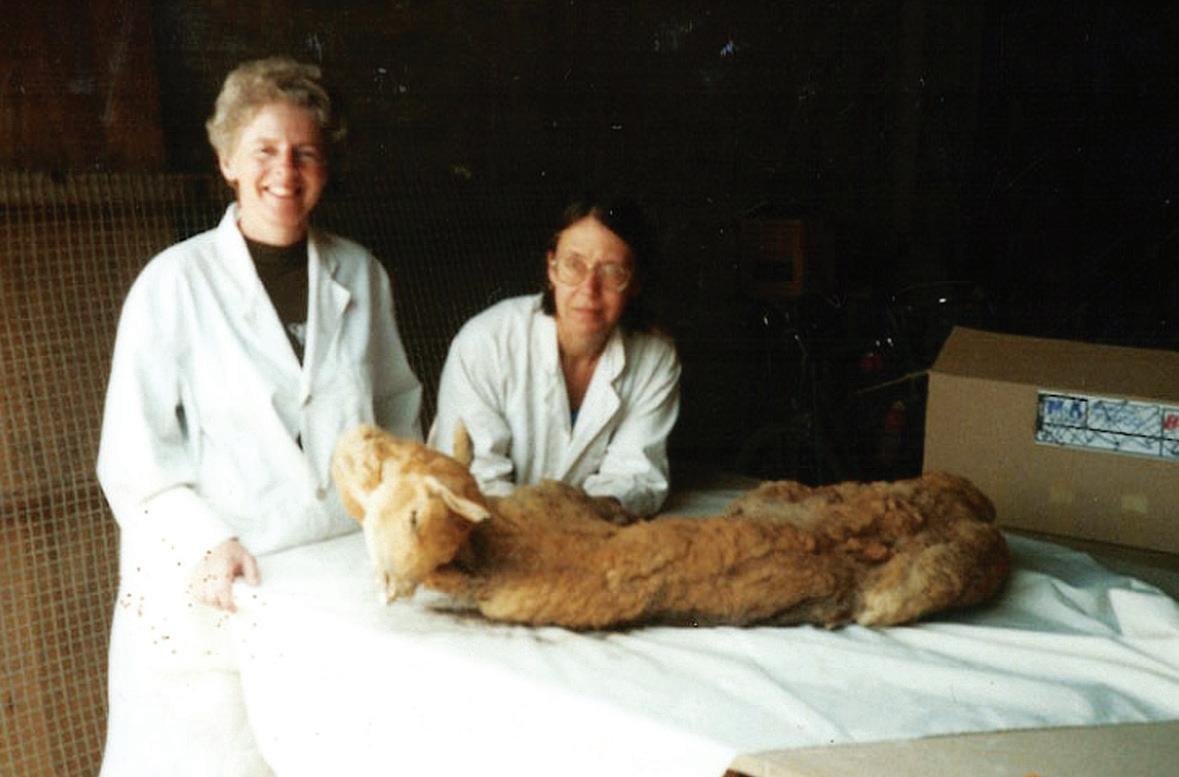


The site from which the mummies came, El Yaral, was just a few miles away, so one day we drove over there to take a look. We walked down the hillside down into a valley and the site was beyond a small river, which was normally an underground stream, but at this time some water was flowing, and so we had to step carefully to get across. We spent some time looking around at the remains of houses from a thousand years earlier; houses that had been built of
Exhumed mummified human remains (1,000 years old) wrapped in original weavings, shown with grave goods

bamboo walls which had not rotted because it quite simply doesn’t rain there.
Nearer to Ilo was the ancient burial site of Chiribaya Alta, where people alive around the same time as our mummified alpacas and llamas had been buried, along with grave goods for them to use in the afterlife. Some of the graves had been excavated and there was a fascinating museum which housed a very interesting array of artefacts. However most of the graves have been looted for pottery etc. to sell to tourists, with some recently looted graves still open. The looters were also searching for the fabled gold hidden in the human skulls, so all around there were smashed human skulls and other desiccated human limbs alongside entire alpaca and llama skulls, assorted weavings, broken pottery and dog parts. We noticed, in the side of one of the open graves, a mummified dog, interesting due to the fact that it was below a layer of volcanic dust which could date the burial. Jane was keen to excavate this dog and so we consulted with the local Peruvian archaeologist Jorge in charge of the Chiribaya Alta site and he gave permission. Dogs at these burial sites simply hadn’t been documented previously, although we were told that there were always dogs found in the graves. On returning with Jorge the next day to oversee the work he was definitely able to date the burial ground as a pre-conquest site. This had important implications as the dog was much larger than expected, and showed that larger dogs were already in South America before the conquest, and not after as previously thought. Another interesting fact was that the dog was buried with a small net of fish to eat in the afterlife. It must have been a family pet, sacrificed with his owner.
The museum had a storage facility alongside, which included a collection of alpaca and llama skulls from the site. Jane and I took measurements and made notes on their teeth as part of Jane’s research and the results supported her theory of the llama being the domesticated guanaco and the alpaca being the domesticated vicuña.
Before I left Peru after this amazing experience we went along to Lima Zoo, which possessed high altitude guanacos from the high Andes, a different sub species from the lower level guanacos my husband and I saw a few years later in Torres del Paine National Park in southern Chile. Dr Raul Rosadio, from the faculty of Veterinary Medicine at San Marcos University in Lima, took blood samples from them for me to take back to geneticist Miranda Kadwell who was working on the project with Jane. Later that year I met MIranda and watched her at work on her computer at London Zoo, identifying by eye the markers of the DNA traces. This was painstaking work at the time. (Modern technology does these comparisons at lightning speed.) However, all this information was the culmination of 30 years work, with Dr Jane Wheeler proving the alpacas to be the domesticated Vicuña, and the llama to be the domesticated guanaco. Jane eventually managed to get the Linnaean nomenclature for alpacas changed from Lama Pacos to Vicuna Pacos. Thirty years later Jane still lives in Lima and is currently seeking funding for a new Alpaca Genome Project. She tells me ‘there is still so much to be done’.
A prize winning, working alpaca farm in an Area of Outstanding Natural Beauty – the Chiltern Hills
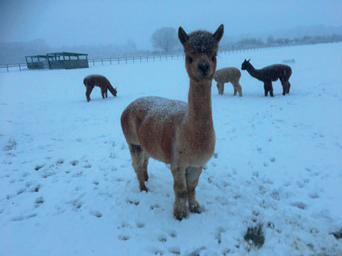
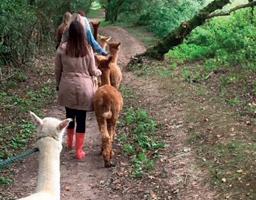


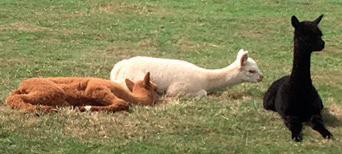
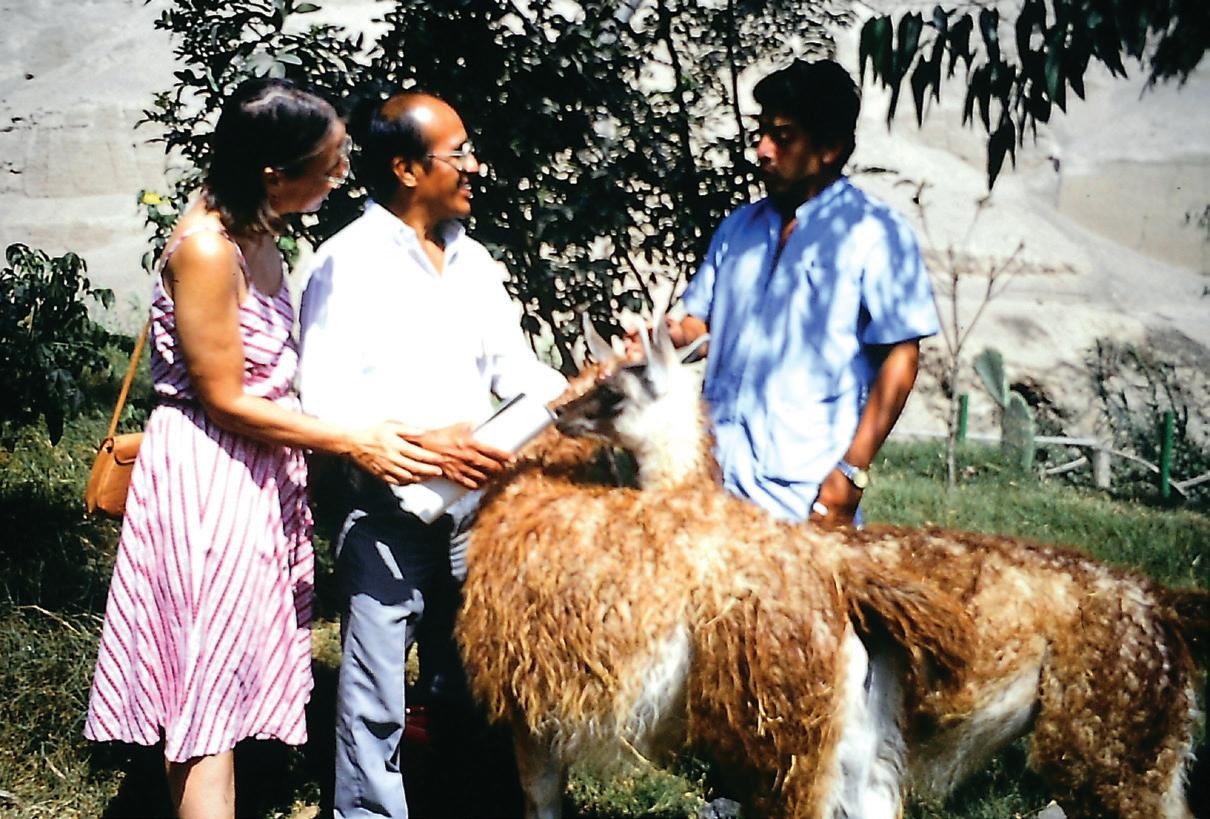
Telford International Centre
Champion of Champions Fleece Show will run and be judged in February 2023 by Roger Clarke.
The National Show Committee are determined to put on a truly amazing event in 2023 and look forward to your support when the time comes.
Judges: Roger Clarke (UK), Barbara Hetherington (UK), Amanda Vanden Bosch (USA) and Natasha Clark (AUS).
The very popular Stud Auction will run again this year in the weeks leading up to the Show.
The 2022 year was a strong season for showing. Many people were happy to get back to normal after a couple of seasons of disruption thanks to Covid-19 regulations.
Most BAS shows welcome members of the public into their events, and they are a great way to learn about alpacas. Alpaca owners love to talk about alpacas in general and their animals in particular! There are two types of alpaca show which are:
• The Halter show is where alpacas are judged in a show ring “in person” by a BAS qualified judge. The alpaca will be wearing a head collar and lead rope with a handler in charge of each alpaca. Classes are usually limited to 12 in the ring at any one time. The Judge will assess each alpaca in turn for the correctness of its conformation and the qualities of its fleece. The alpacas will be ranked and up to six rosettes awarded.
• The Fleece show is where the shorn fleece is judged spread out on a table
BAS want to provide something for everyone at the 2023 National Show so they have decided to introduce an area for information, education and advice on all things alpaca related. Suitable for people starting on their alpaca journey as well as those with more experience. Alongside the Fibre Zone and trade stands there will be stands covering:
• BAS welfare
• BAS education
• Diversification – trekking, therapy, yoga and more
• Fleece skirting demonstrations
• Spinning, weaving and felting demonstrations
• Meet alpacas and llamas
by a BAS qualified judge. Marks are awarded to each fleece for various qualities including fineness, cleanliness, and weight. The alpaca fleece with the most points is the winner. Most fleece shows have a session where exhibitors can hear from the judge about what they saw at the show which can be face-to-face, or in recent times this has often been done by Zoom or Facetime.
The showing season is quite long. The season usually starts in March with the National Show, which has 600 plus alpacas on show, and runs through to December. Alpacas are usually shorn in May or June so there tend to be fewer shows in those months (plus pregnant females will be giving birth at that time and they don’t need to be at a show when that is happening).
Across eight fleece and 18 Halter shows in 2022 there were over 3,770 entries. It varies a little from year-to-year but you can find a show near you at some time in the year. Check the BAS website for details in 2023.
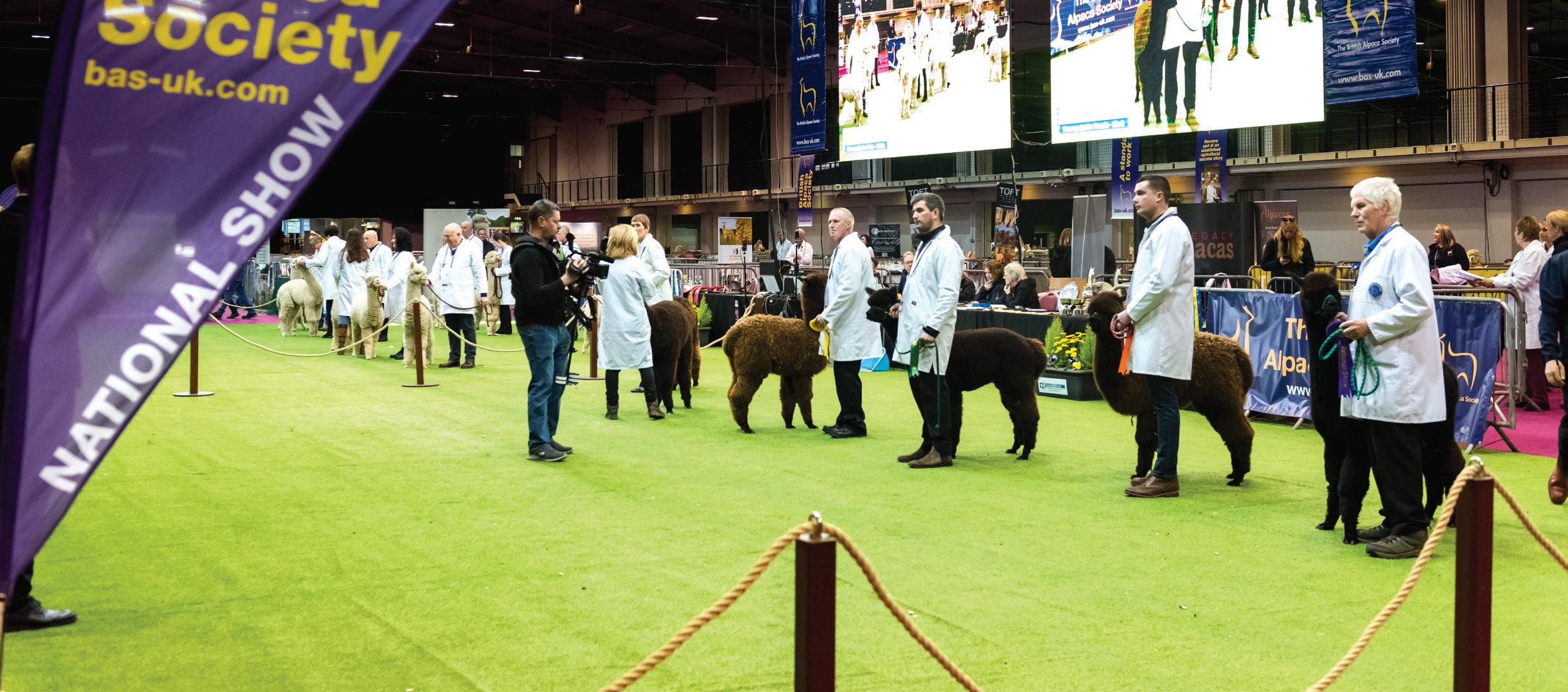
Duncan Pullar, BAS CEO says the British Alpaca Society supports a vibrant showing scene throughout the UK.

MARCH

Telford National Halter Show
Telford Champion of Champion Fleece Show

Leighton Buzzard Heart of England Spring Fiesta (Halter Show)
APRIL
Lanark Scottish Alpaca Championship (Halter Show)
Ardingly South of England Spring Live (Halter Show)

Carlisle North West Alpaca Group Halter Show
MAY North Somerset North Somerset Halter Show
JUNE

Hexham Northumberland Halter Championship
Malvern Three Counties Halter Show
Cornwall Cornwall Camelid Association Fleece Show
JULY
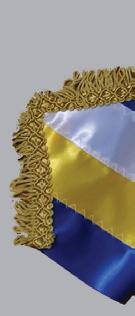

Malvern Three Counties Fleece Show
AUGUST Ringwood Ellingham and Ringwood Halter Show
Kendal Westmorland Halter Show
SEPTEMBER



OCTOBER
NOVEMBER
Taunton Somerset County Halter Show

Taunton Somerset County Fleece Show
York Yorkshire Alpaca Group Halter Show
Aylesbury Heart of England Fleece Show
Welshpool Welsh Halter Show
Chelmsford, Essex East of England Halter Show
Northern Ireland Northern Ireland Alpaca Group Halter Show
Malvern West Shires Alpaca Group – Midlands Halter Championship
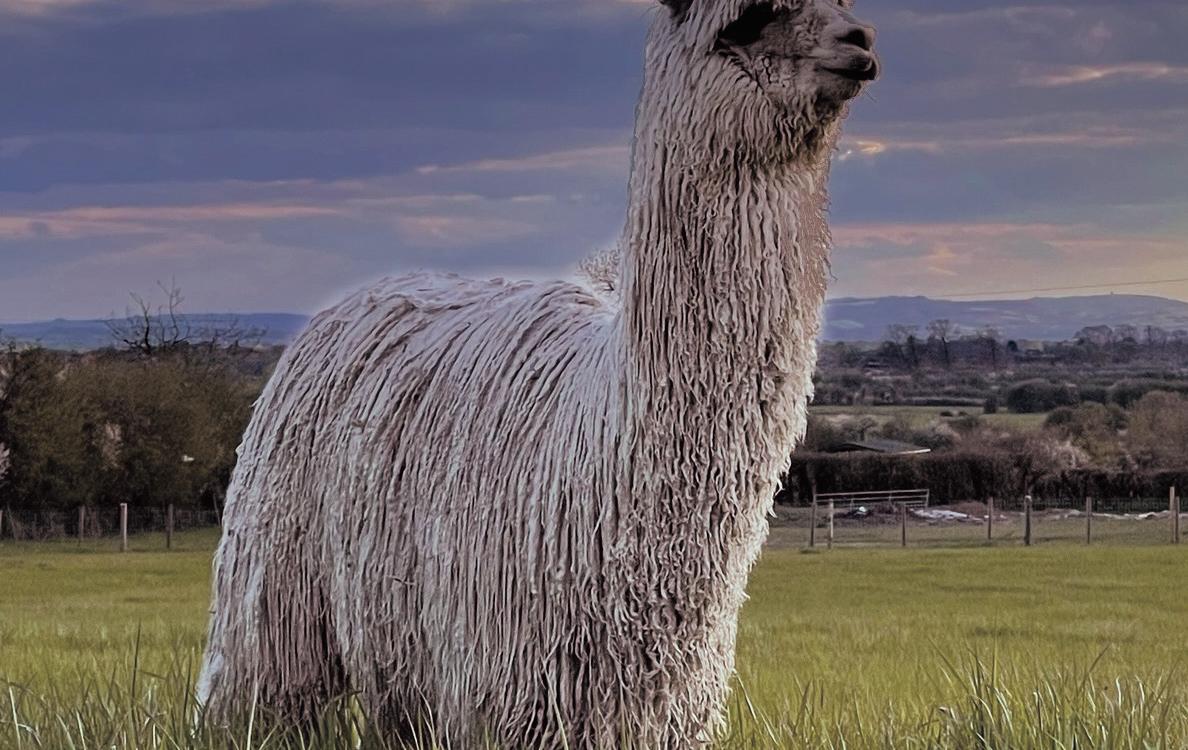
Cumbria Northern Regional Fleece Show

Yes, it helps if you are alpaca obsessed. There is no doubting that I have been since our first alpacas arrived on farm in 2008. For me, there is no such thing as too much alpaca, nor too much handling of fleeces (both at home and away). After 14 years of ownership of alpacas, my family have given up hoping that they will once again take priority in my life.
Any opportunity to be involved in showing, be that as a judge, organiser, exhibitor or trainer is taken whenever possible. This dedication to staying current and knowledgeable, I hope helps my judging to be thorough and consistent. Hence, 2022 has been no different, having seen me judge seven halter and five fleece shows, help with the organisation of two large shows (including the BAS National) and work as a BAS tutor.
A big pair of boots are involved both literally and metaphorically. Firstly, the ones on your feet. Whilst many breeders put a lot of time into training their alpacas, not all of them decided to demonstrate what they had been taught when actually in the show ring. You certainly wouldn’t want to be judging in a pair of flip-flops if you didn’t fancy a broken toe or two. And any baring of legs would only be good for showing off the mandatory bruises from a well-placed kick. A sturdy, comfortable, pair of boots are an essential piece of my judging kit. Maybe some more training of alpacas to have their fleece looked at, rather than just walk, would be welcomed by most alpaca judges!
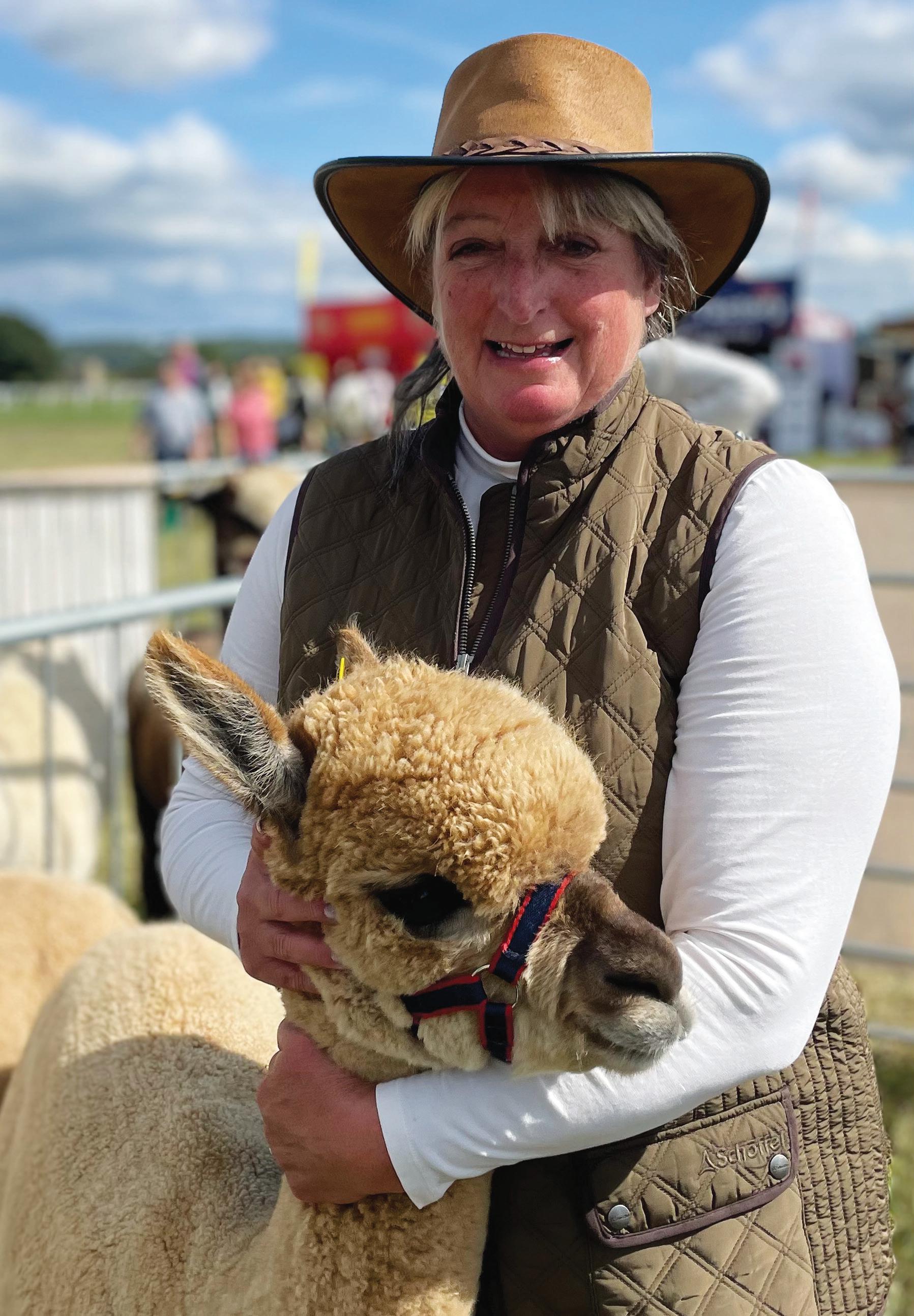
The metaphorical big boots are those you have to fill. The alpacas that you judge may well have been judged before. If not, they may be the progeny of some alpaca that a colleague gave
>> Continued on next page
As the close of a busy judging season in 2022, Barbara Hetherington has been reflecting on what it takes to be a BAS halter and fleece judge.



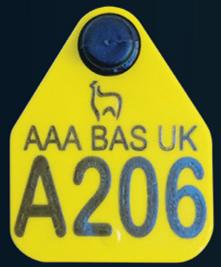


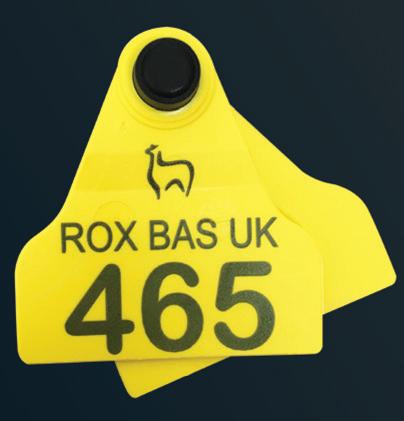



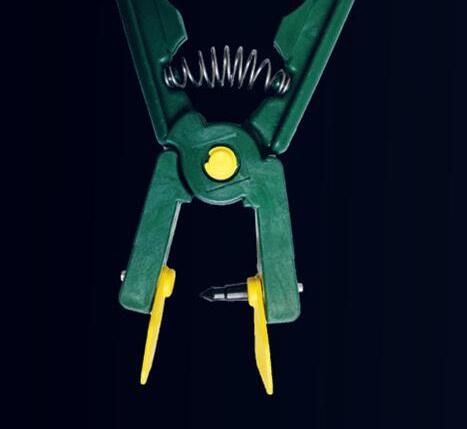


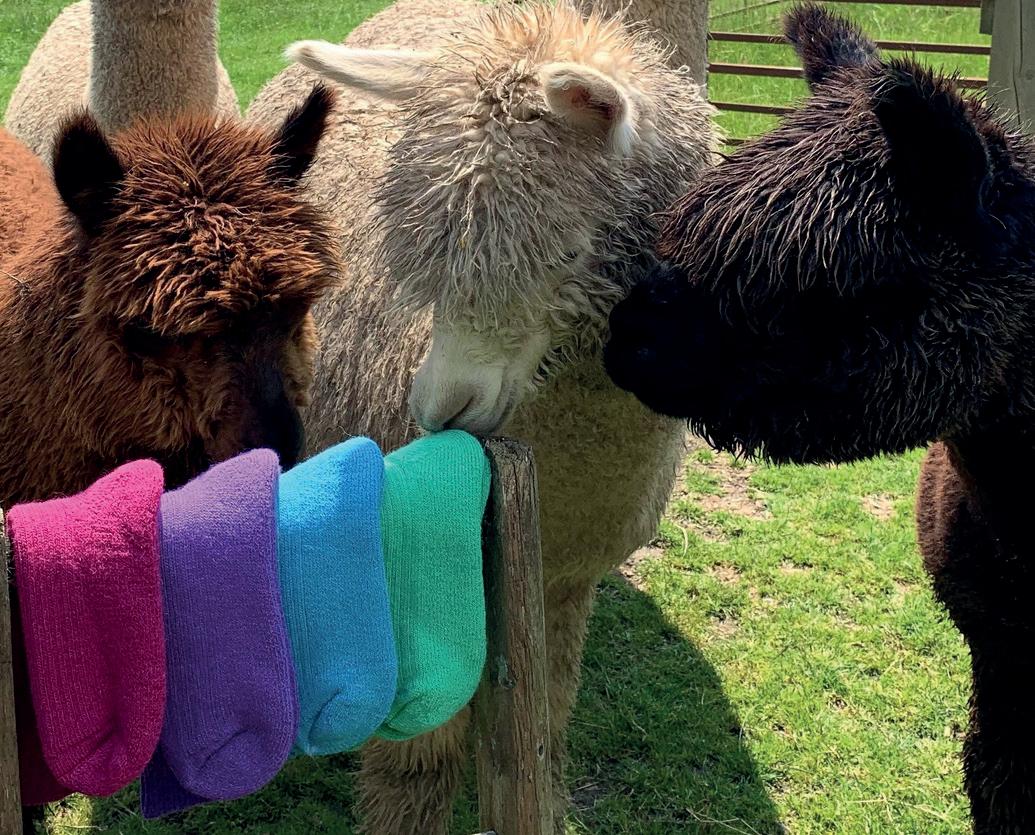




Supreme Champion to a few years ago. Whatever, most exhibitors have high expectations based on previous results. No matter that the alpaca may be in another year’s fleece, or that conditions are quite different, the judge who gave the championship to their alpaca (and you didn’t) will be the better judge for that exhibitor. You didn’t fill those big boots for them, but then the next judge has to fill yours.
Of course this all fits with the fact that in every line up of six alpacas awarded a rosette, only the exhibitor holding the alpaca at the top of the class will think that you got it right. The other five will think that you could have done better. You need to be strong enough to take the mixed reviews of your judging. This is a case of needing to wear your big girl’s pants as well as your big boots. It is impossible to please everyone, I just aim to be fair and consistent.
I jest about the gym membership. I don’t have the time. My fitness regime is looking after 200 alpacas. This constitutes going for a workout every day. However, judging does require stamina, both physically and mentally in order to keep pace and consistency. I knew that I had a busy start to the spring season, so a chiropractor visit was definitely factored in.
We started with the BAS National Show where we entered the maximum 25 entries, so a busy, and very successful weekend, taking both halter and fleece Supreme Championships. The show is the highlight of my alpaca year and is my chance to look at so many alpacas as they leave the ring. What an opportunity to be able to get your hands on over 600 entries (if you choose) all brought to one venue. This is a big part of my continuing professional development as a judge.
The following weekend was the North West Alpaca Group halter show (another one that I help to organise). Here we had 20 entries and gained another Supreme. Exhibiting brings my judging (choosing the team) and breeding skills together, so it is always satisfying to be successful.

The third weekend in a row but I am judging a three day halter show rather than exhibiting. We then have a weekend off for shearing before I judged a two day halter show the following weekend. As I said, you have to be both obsessed and have the chiropractor on speed dial!
Whilst this is helpful, thankfully a sense of direction is not essential. Those who know me will be aware that I do not have any idea how to differentiate between left and right. I am unable to leave Cumbria (north Cumbria to be more precise) without a Sat Nav. A train timetable looks like algebra (I am not so good at that either actually) and essentially any plane journey that doesn’t get me directly to where I need to be is likely to be problematic.
So it was, I had to have Paul (husband/travel advisor) accompany me on my three consecutive weekends judging in Europe. Firstly to Norway for halter and fleece judging and a full day workshop. A very enjoyable
weekend which saw our return flight changed to take us via Paris (you see it’s not safe to expect to get from A to B as planned).
The following weekend was a trip to Germany for a two day halter show. Again a great weekend went without hitch and we made our way to Florence for a few days before halter and fleece judging in Italy. We then headed home. There were an awful lot of planes, trains, taxis and buses involved but I just followed along with my judge’s clothes safely in my hand luggage. I am still none the wiser about which train was heading north and which was going south, but I enjoyed every minute.
The judging appointment in Italy was a return visit (and I still had no idea where it was). The group organising the show are great and work so hard to ensure that the alpacas attract the general public who are visiting the pet show it is part of. When I arrived at the venue, I was met with apologies. It seemed that the cat aspect of the show (who should have been next to us) had received a better offer. We were now next to a very large group of parrots. So it was, my oral reasoning was being translated into Italian accompanied by a cacophony of squawks. All good fun!

On the subject of translating, when my lovely assistant questioned me twice if I was sure that I really wanted to say ‘that’ (I had asked her to tell the male exhibitor that he had handled his alpaca very well in the ring, as he had said it was his first time). Well, I should have taken heed. Judging by the blush on the exhibitor’s face and the uproar of laughter, something got seriously lost in translation.
Along with a sense of humour I always take along a dose of humility. The judge is only part of the event. I am being employed to judge the show on behalf of the organisers, and to try to give the exhibitor the best experience I can (including knowing why they didn’t win if this is the case).
As long as it is within the rules, I do my best to deliver the show that they want, not necessarily what suits me best. Conditions are not always perfect, we get poor lighting, damp alpacas, and inexperience (both owners and exhibitors) but the show must go on and we must do our best to make it a success. Just keep calm and carry on as we Brits like to say.
My next judging appointment is a big one as I will be co-judging the BAS National Halter Show in March 2023. I have already bought my big boots and will be wearing my big girl’s pants under my soon to be bought new outfits.
I should be okay to find my way to Telford with the help of a Sat Nav. Although I have been known to go through the occasional housing estate en route (towing a trailer). That’s what happens when you don’t know left from right even when you are being guided.
The fitness training will begin in the New Year and as for the obsession and sense of humour… these aren’t going anywhere else anytime soon. They say you have to be a bit mad to own alpacas and I would suggest madder still to judge them, but you can be the judge of that.
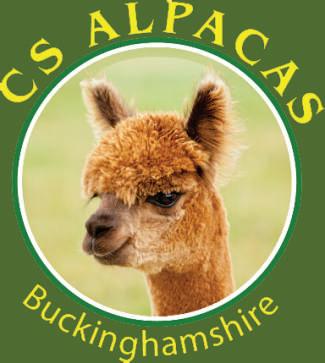





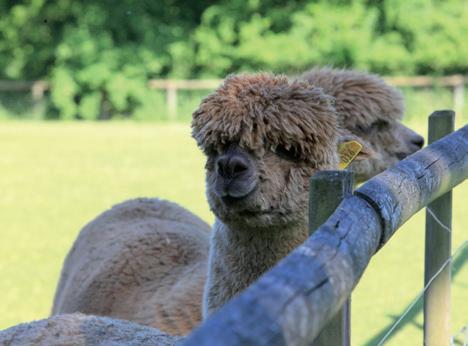
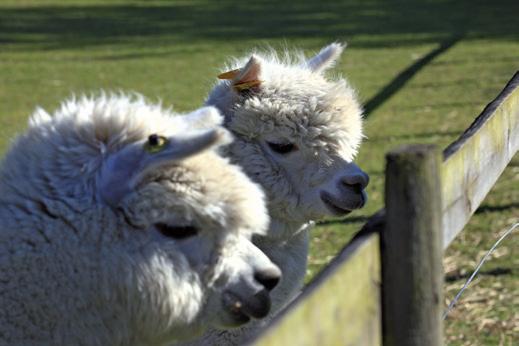
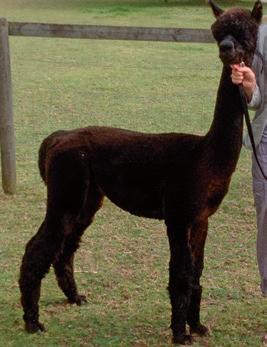

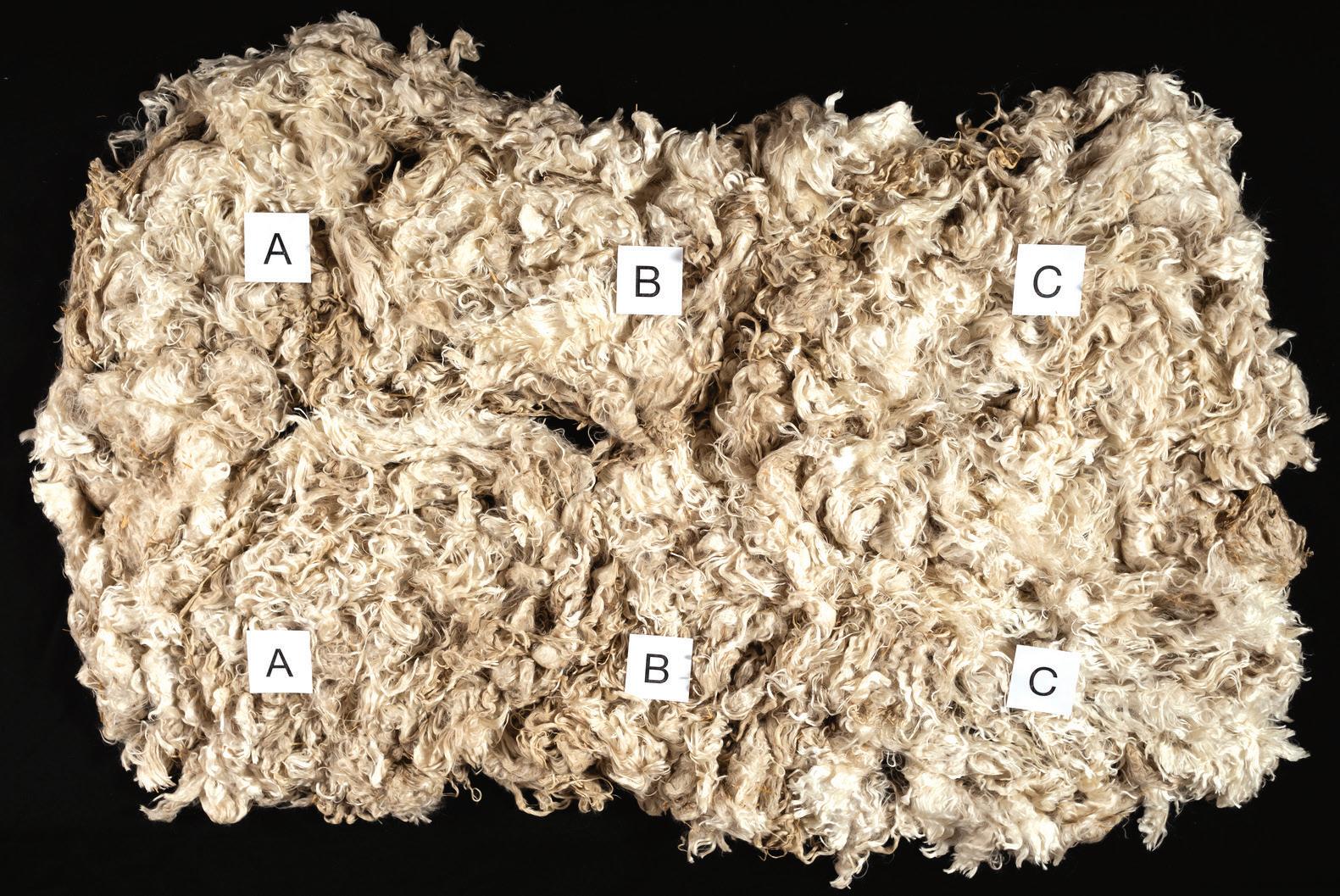
Ibelieve that since we started having fleece shows in the UK it has always been judged following Cameron Holt’s manual which was last updated in 2011.
Entering a fleece show and competing against other alpacas in our industry is an alternative or additional way to have your alpacas evaluated. The one major difference between a halter show and a fleece show is that a halter show is comparatively judged. Once the judge has decided which is first compared with the ideal, the rest in the class are comparatively judged from one to the next. However fleece judging is done by judging traits according to a points system, not against each other, and the one that gets
the highest points in the class wins. In order for a fleece to be awarded a first place rosette it needs to have reached a minimum score of 60 points, and a minimum of 70 points to be awarded a Championship.
You may decide to enter the fleece from your alpaca who has done well in a halter show, or to get a fleece assessed by a Judge without having to take your alpaca to a show. I tend to do both but I also like the fact that I can enter fleeces from my pregnant females who I would prefer to keep at home in the fields with their crias and I like that I can still hopefully showcase them on how they are progressing with age even while at home in the fields! The only rule is that you have to enter their most recent fleece.
Whatever the reason for entering fleeces, you want your fleeces judged to a system that is current and educational. After a successful trial of the Alpaca Association New Zealand’s score card, micron and weight charts in 2021, the charts and score card have now been adopted and will be in action for the 2023 show season. This change also brought the need to update our judging manual to incorporate the new score card, micron and weight chart and all the minor adjustments to the judging process that goes with them. Also it was felt it was a good opportunity to update definitions, processes and pictures. The new manual is now available to the membership.
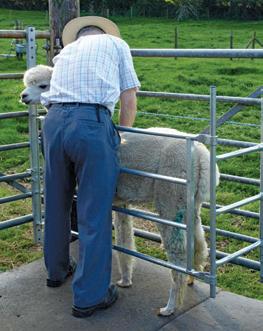
I have spent a lot of time on the manual with the help of many others but in particular a big thank you must go out to Rob Bettinson who made sure that what I wrote said what I meant! Let’s just say Rob had his work cut out for him, I blame my Canadianisms!
I would like to highlight a few of the main changes.
The number one difference for me is that the new score card is more educational for exhibitors. I am sure you all look at the individual points as I do when my fleece comes back from a show, so I can see how they have fared on each trait, and not just look at the final score and the overall place in the class. Well, if you do I hope you are going to love this score card.
You will be able to clearly see the attributes of your fleece and be able to see the positives of your fleece or areas that perhaps need to be improved upon in the next generation. This is because we now have a breeding attributes section and a fleece management section.
As you would imagine the breeding attributes section includes the following:
A select herd of quality alpac as with excellent pedigrees and genetics, located in Scotland.

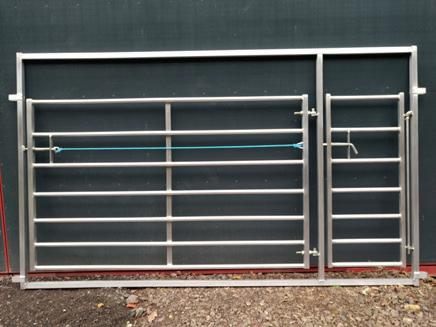
This gives a total possible points for both Suri and Huacayas of 100 points. In this section the outer edge or what is deemed to be skirting and/or second cuts (short bits left in from shearing) are ignored at this stage and therefore you see exactly what the traits in your fleece are.
However, these are taken into consideration under the management section: MANAGEMENT
-5
-5
-5
Depending on how well the fleece is prepared (skirted) for the show you can lose up to a total of 15 points or you may only lose a couple, or you may lose none at all. These deductions are subtracted from the breeding attributes section to give the fleece its total overall score for the show. It is this total that is used to put the alpacas in the final order for placings.
>> Continued on next page
A select herd of quality alpacas with excellent pedigrees and genetics, located in Scotland.
A select herd of quality alpacas with excellent pedigrees and genetics, located in Scotland.




We provide:
We provide:
We provide:
Stud Services – Championship winning Huacaya Alpacas
Stud Services – Championship winning Huacaya Alpacas
Stud Services – Championship winning Huacaya Alpacas
Alpaca Experiences
Alpaca Experiences
• Alpaca Experiences
Educational & Therapy Visits
Educational & Therapy Visits
Educational & Therapy Visits
• Quality Yarn
Quality Yarn
Quality Yarn
Edinburgh, Scotlan d
Edinburgh, Scotlan d
Edinburgh, S Scootlan d
www.bobcat -alpac as.co.uk
www bobcat -alpacas co uk
+44 (0) 7963324922
www.bobcaat -alpac as.ccoo.uk
+44 (0) 7963324922
+44 (0) ) 79633224922
Dedicated to the care and breeding of quality alpacas
Dedicated to the care and breeding of quality alpacas
Dedicated to the care and breeding of quality alpacas
Alpaca Equipment:

What I love about this system is you get to see the quality of your alpaca in each of the breeding attributes even if the fleece was let down by not being properly prepared (skirting). Let’s face it we can always learn more about skirting and when we are just starting out it can be a steep learning curve. It can seem daunting at first, to know how much of the fleece to skirt out. Regional groups do offer skirting courses for their members; these are well worth attending. However, I think it is always worth entering fleece shows to learn so don’t let this put you off of entering. Just give it a go and everyday is a school day!

Under our old system you could lose points due to poor skirting in a number of other areas which could have been misleading on understanding the true quality of the fleece overall. If the fleece was poorly skirted points could be deducted in uniformity of micron, length, and guard hair. Other than a comment about skirting you may have been disappointed with the uniformity of micron score when in actual fact it may not have been that bad if the fleece had been skirted better. Skirtings had to be taken into account somewhere and, without a management section, it would have been deducted here and there as poor skirting can and does cause lots of quality issues if the fleece was to be sent off for processing as is. The variation in micron and length caused by lack of skirting downgrades the finished product. At the end of the day the majority of traits assessed when judging a fleece is with commercial fibre in mind.
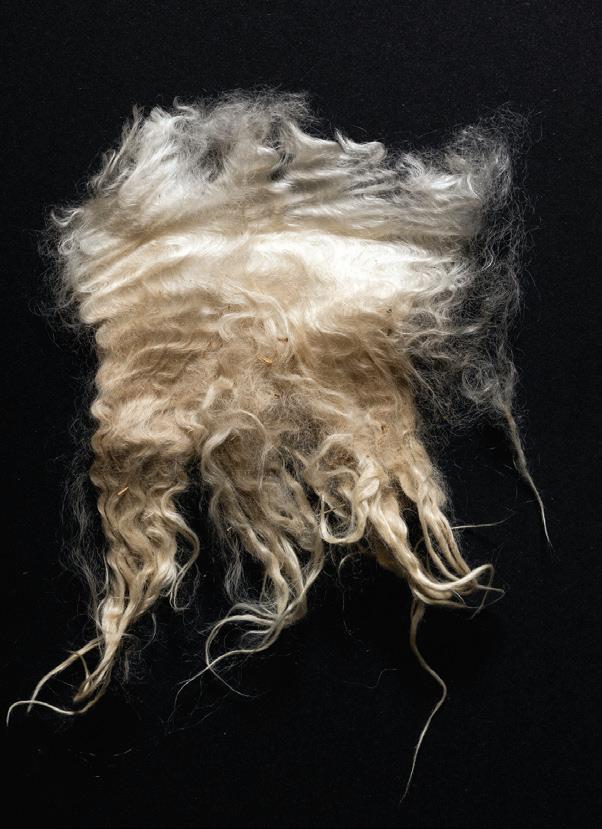
Having the two sections on the score card is a brilliant tool for exhibitors! Now the outer edge which would be deemed skirting is ignored until you come to the fleece management section. By using this new score card it will be clear what the traits of the fleece are as well as knowing how well presented the fleece was.
With switching the micron and weight charts also comes a change to the class divisions which includes a new class.
The class divisions are now as follows:
• Junior 6 to <12 months
• Intermediate 12 to < 24 months

• Adults 24 to < 36 months
• Senior 36 to < 48 months
• Mature 48 to < 60 months
• Veteran > 60 months
The age of the older classes changes a little but the major difference is the adult class does not now have a two year age range competing against each other. There can be quite a difference between an alpaca that is just over two years old versus those that are nearly four years. I believe this new class division allows those slightly older animals a fairer chance of getting recognition and is like comparing apples with apples rather than apples with oranges!
We now have one micron chart for both Huacayas and Suris. The chart is used in the same way as in the past by looking up the micron in the correct age category and then allocating the corresponding points. However, it is now out of 20 points rather than 15 and it rewards fleeces that fall within commercial fineness by gaining more points and gives less points to the alpacas that are producing higher microns for age. For example on the old micron chart a Junior that was deemed to be 26 microns would have received six out of 15 possible points where on the new chart it would receive three out of 20 points, which is more commercially minded. If you are selling your fibre you will receive far less money for fleeces over 26 microns than you do for those under 22 microns.

The weight chart is also now the same for both Huacayas and Suris and has the six age groups allocating a maximum of 15 points. However it moves in half point increments instead of full points for the awarded points and requires slightly heavier fleeces to achieve full points, but also allows for lighter fleeces as well depending on the age category. The fleece weight needs to be annualised in order to be able to compare all fleeces equally. Annualisation allows for fleeces that have differing months of growth. To annualise the weight you need take the fleece weight (kg) divided by the number of days growth, multiplied by 365 days in a year.
Following on with other changes associated with the micron; the micron and handle is split out and marked separately on the score card instead of as a combined item. However, the micron is now taken from six samples from across the main body (2x shoulder, 2x mid-side and 2x rump) and an average is determined. Handle is still out of five, is associated with the softness of the fleece and is directly related to the uniformity of micron.
Uniformity of micron is done in the same way as before. However, what is deemed to be skirting is ignored and the evenness of the micron is assessed and a score out of 10 is given depending on whether it is very even, or how much irregularity is seen across the samples taken.



Uniformity of length was out of 10 points and is now out of five as the other five points have been allocated to growth rate for staple/lock length. Uniformity of length is assessed from the selected samples and a score out of five is given depending on how uniform the length is. Skirting and second cuts are ignored as they will be taken into consideration under the fleece management section.
As staple/lock length is a highly desirable trait for processing it is only right that this is assessed when judging the fleeces. In the past the fleece was not awarded for growth rate just as long as it met the minimum length of two inches to be entered and so long as it was uniform in length it could have obtained up to 10 points. Now a fleece is given points out of five for the length of growth in the given time from birth to sheering or between
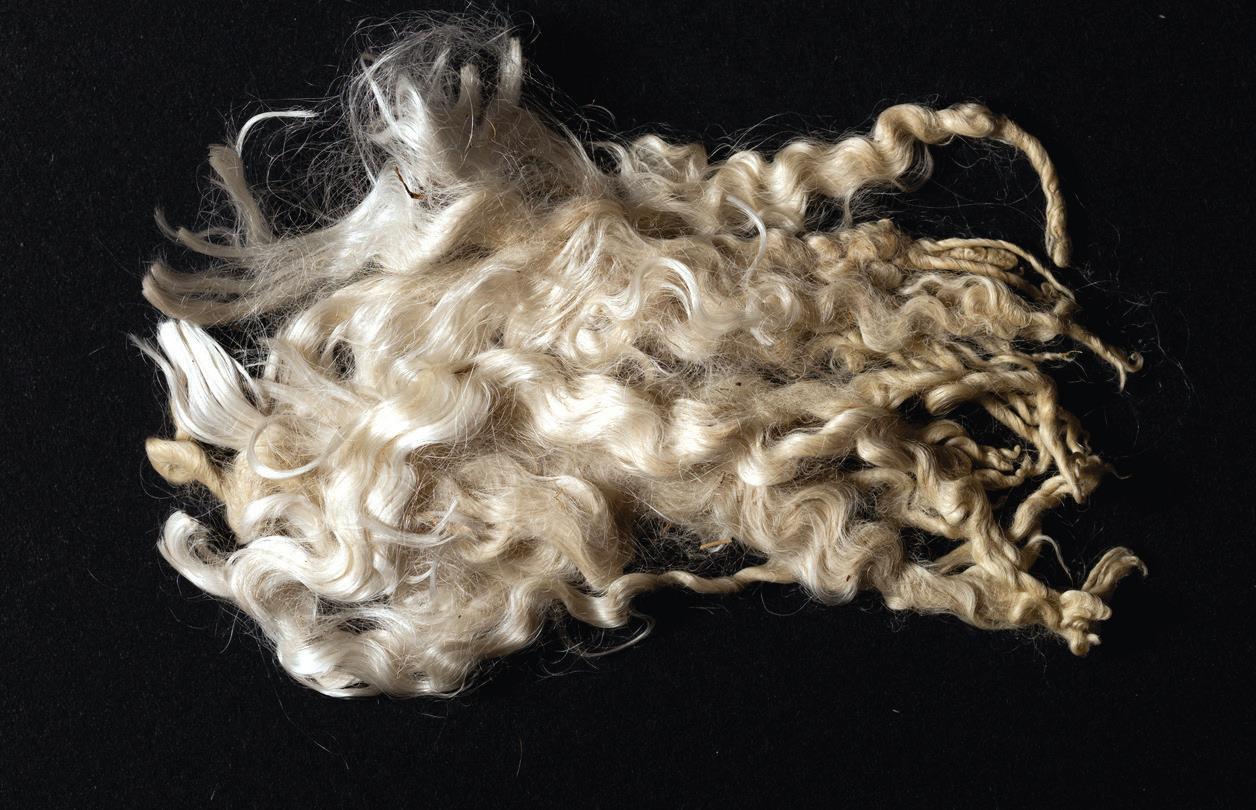
shearings. This does mean that the growth period needs to be annualised so that all fleeces are assessed equally. This is done by taking the judges measurement of the stretched fleece length (mm), divided by number of days growth, multiplied by 365 days in a year and then looking up on a chart that was developed for growth periods dependent on the age of the alpaca. The index used for calculating length parameters was taken from A Definitive Guide to Alpaca Fibre (2014) by Cameron Holt.

All other criteria are still being judged the same but, with the assistance of all the helpers at the Heart of England fleece show 2022, I was able to put together up to date fleece samples for the manual, and in particular character and styles for both Huacaya and Suris. Then with Ingrid Weel Photography, who managed to capture all the detail I required, I think we put some fantastic photos in the new manual. I hope the new manual will be a great aid for our fellow judges to use, but also for anyone who would like to understand fleece judging in greater depth will enjoy reading it and I hope it will be a great aid in developing one’s knowledge.
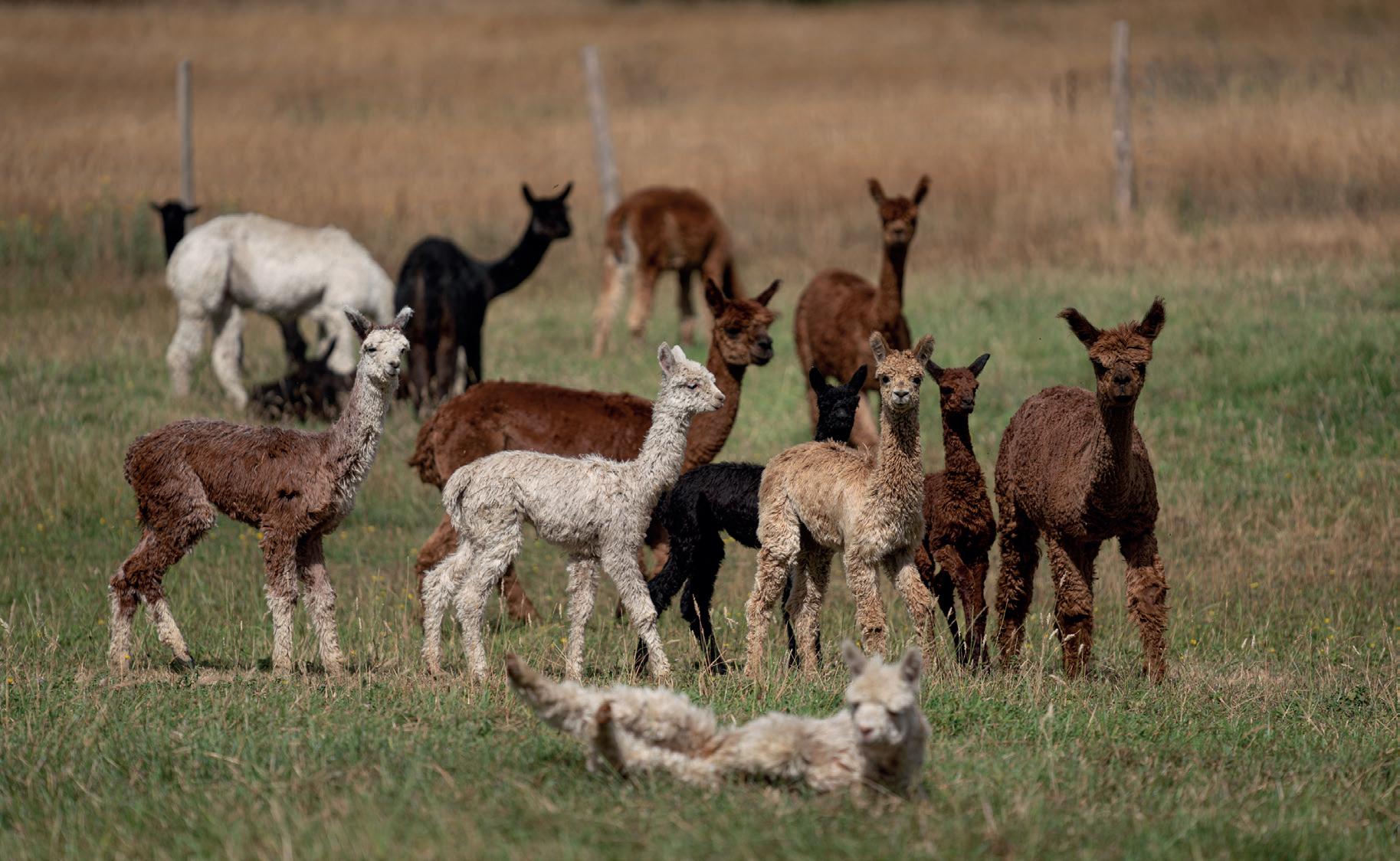
Here at Teesdale Alpacas we have been running alpaca trekking for over six years now but when we started there was a lot less information available on what to avoid or be careful of.

Like everyone we’ve made a few mistakes, but hopefully we’ve learned along the way. Now there are many more people running treks, walks and/or alpaca experiences and it is clear that there are lots of different ways to do it depending on lots of variables. In this article I’ll try to explain why we do what we do, and why it works for us, and I’ll highlight a few things that might be useful to consider when thinking about a new venture or if you want to change your approach.
There will inevitably be many people who will do things differently and have a positive experience but at the end of the day it is important to do what is right for you and your animals in your own particular circumstances. It was with this in mind that myself and a few like-minded people created the BAS/BLS trekking code. The purpose was to try to identify the key issues to think about when running trekking and allow people to sign-up to something we hoped would demonstrate an awareness and enthusiasm for “doing it right”. Of course being a voluntary code means you can do all the right things and not sign up if you don’t want to. Just a side note on this – you may find that signing up to the code (and of course following it!) may help when applying/renewing your Animal Exhibition License and may also get you a discount on a related insurance.
The key top line message for those wanting to start, I would say, is ‘know your animals’. We spend so much time talking about how they are all different and all have those little quirks it seems odd to then expect them to all behave in the same way when it comes to going for a walk with people they have never met before.



Hopefully no one would think it a good idea to mix males and females for walks (or indeed walk too closely to paddocks containing the opposite sex). Also whilst many of us will walk entire males with castrated herd mates one has to be particularly vigilant and discerning when it comes to potential issues for example aggression brought about by recent matings/encounters with females. A male happy with a group of other males (castrates or entire) can change overnight once he realises that they may be competition. Similarly a dominant male walking close to a subordinate weanling could cause issues when the weanling cannot move away. Whilst this can happen anytime you don’t want to find out when you go out for a walk with the public.
Nervous animals are not likely to enjoy going for walks and worse can unsettle the others and be jumpy/kicky; they may reluctantly go along because all their mates are but it doesn’t mean they are happy. This may be a particular problem if the majority or all the animals go out at the same time –meaning they will walk because they don’t want to be left behind. Conversely, overly confident animals may become too cocky and cause issues on a walk.
Do think about the bonds between animals. Many form friendships with another and that may cause issues if separated. Likewise leaving a single animal behind is likely to cause that animal considerable stress, may lead to it trying to jump out and follow potentially injuring itself or generally causing chaos.
Some are natural leaders and others followers. We have found that the lead animal feels responsibility for the others and likewise the others will expect them to keep a look out – not all will be happy being a lead and will often not be happy unless they are in the middle of a group which works well

about opening an alpaca trekking business or just starting a new venture? Doug Steen,
together. We also find some don’t like being at the back!
Planning your rota of walking boys needs to take into account these things and also you do need to consider some ‘spares’ in case one is poorly or has an ‘off’ day.


As with most animals (including humans) a bad experience can unsettle them and potentially ruin them for walking. We tend to leave animals until they are fairly mature before looking to train them for walking to hopefully minimise this risk; I dare say others will do things differently for their own reasons and may have good experience.



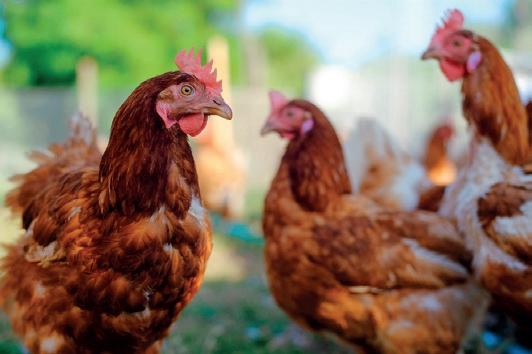


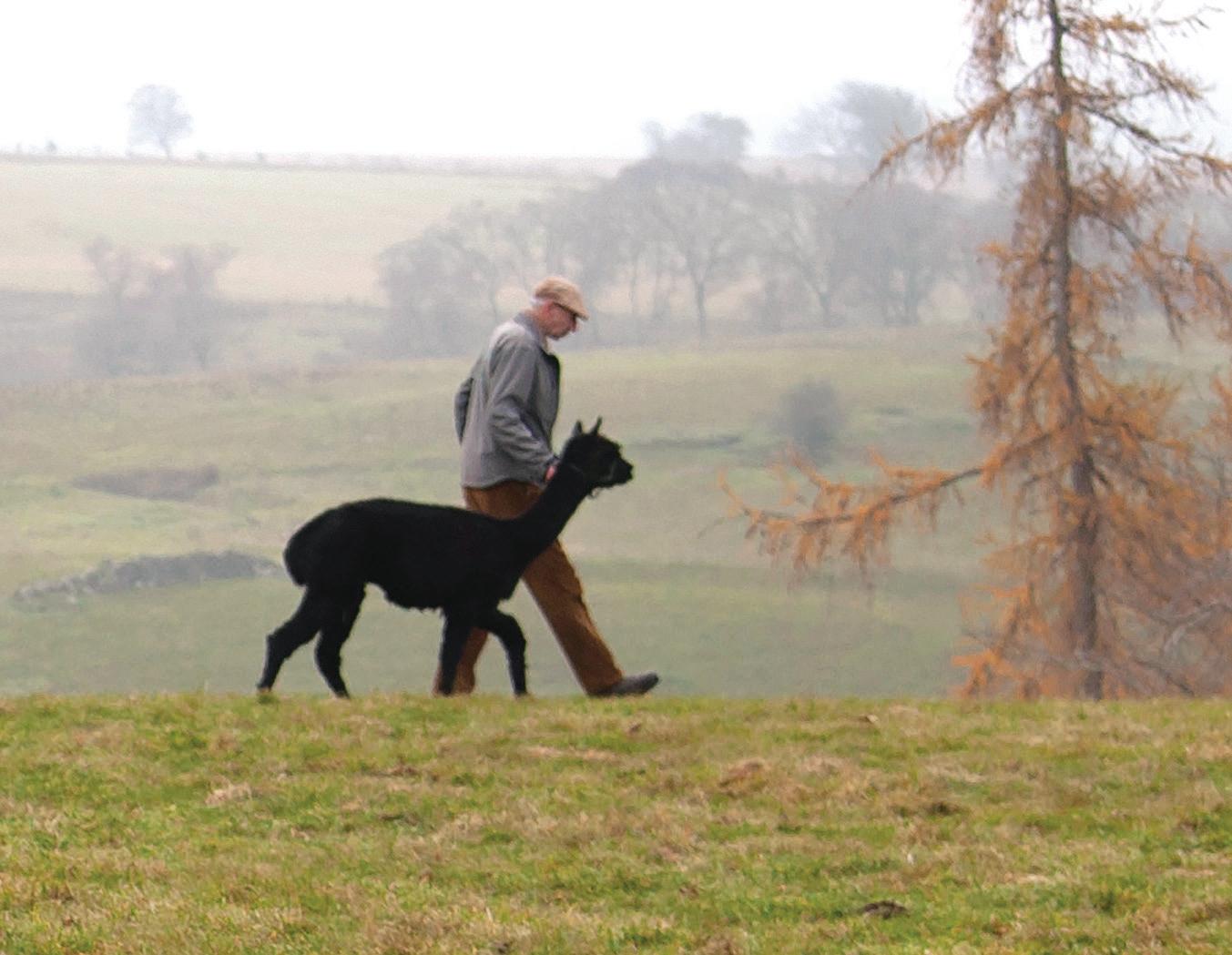
While we don’t walk on bridleways, roads or footpaths or anywhere you might meet cars, tractors, bikes or dogs these all add an extra level of risk and require more thought on suitability of the animals to the walk and more training to ensure they are as safe as possible, you may need additional staff as well to ensure hazards can be dealt with expediently. Safety briefings to the public, including handling tips, are a must but we need to remember our guests will have little to no experience of any similar activity and will probably remember little of what they are told. Keep reading behaviour signs – this requires constant observation. When you know your animals you’ll start to pick up little signs they aren’t happy. While some will carry on others will become less willing to be caught and then some will start to lie down occasionally mid walk. For us this is a red flag and we will look to retire that animal from the team. Bribing an animal with food to get them to get up and walk on can create a situation where the others will see if they lie down they get food – soon you may have a walking team who all just lie down! Reading the signs from your guests is also a useful thing: Some people are simply not able to remember what they were just told two minutes before and/or control their animals nor understand how to behave so as to not frighten them. Pairing a young alpaca with the wrong person can result in that animal becoming scared/uncertain and unsuitable for walking for some time or possibly permanently (the same follows for unexpected events – such as barking/loose dogs, motorcycles or even walkers on a path they haven’t experienced before). Anticipation and Prevention are our watchwords –much better than trying to ‘fix’ an unhappy or traumatised alpaca.



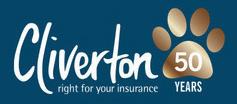

We are maybe fairly unusual in that we don’t run an automatic booking system. We prefer what we feel is a more detailed interaction when getting a booking so we can manage the group - most especially the numbers of children. Again each to their own and since we haven’t tried it any other way I can’t say the pros and cons of other ways to manage this. We attempt to match our walking boys with our customers although I have to say this can be quite tricky and sometimes people surprise you!

>> Continued on next page

Most walking businesses will have decided what works for them regarding rules around ages and accompanying adults. Our experience is that we are likely in the future to move away from allowing children at all as we find there is a lot more stress involved in managing health and safety. That said some children are more confident and able around the animals than many of the adults – at times we wonder how some adults manage day to day.
Being strict with children’s behaviour can be hard and stressful for us. The worst is often when gran and grandad have been given the kids for the weekend but have no control, or willingness to exert control, over their “little darlings”. Behave or go home is the rule in a nutshell – we don’t want our animals being frightened because little Timmy likes to go running around in the field screaming.
Children aren’t always as interested as the adults think or would like them to be. Short attention spans, distractions and needing to go to the loo when we are not even halfway can cause problems if you haven’t thought it through. Who is going to take them back to the car to wait and not wander about? Who will look after the alpaca they had? Will you have appropriate members of staff to continue the walk safely? What does your insurance say about unsupervised people on your property?
This is a subject where there are lots of different practices and views. We only feed a little extra of the normal daily alpaca feed (not enough to cause any issues) – it’s dry, always to hand, easy to carry and the alpacas never tire of it. Also for us it minimises the risk the alpacas will accept, or

be interested in, other foodstuffs which may be offered when we are not around and which may be harmful.
I know many people feed carrots and while these are fine when cut into thin strips they can create a choking hazard if fed whole; unfortunately members of the public may not realise this and believe they are being kind and throw whole carrots into the paddocks. We know this happens every year and many horses die from being fed inappropriate “treats” by well-meaning members of the public. As many alpaca owners including us, will have public footpaths running through their fields we would like to minimise the risk so don’t feed anything else. Just something worth thinking about perhaps. We are also strict about feeding all the animals together which minimises any unpleasant interactions between animals trying to get food from each other.
Most of our boys are our pets; some don’t want to trek, some just aren’t suitable and some have trekked but decided it wasn’t for them – that’s all fine by us we love them anyway. But it does mean that at some point, if you are like us, you could be faced with a decision – either reduce your walking or stop completely because you don’t have space or facilities for more animals to replace those who need to be retired or you’ll need to sell some on as older pets.
Definitely not an exhaustive list but hopefully a few things worth thinking about when managing/planning your walks and many of these do transfer over to other types of activities like Wedding attendance, fairs/markets etc.
A happy walking team equals happy customers and a happy you!
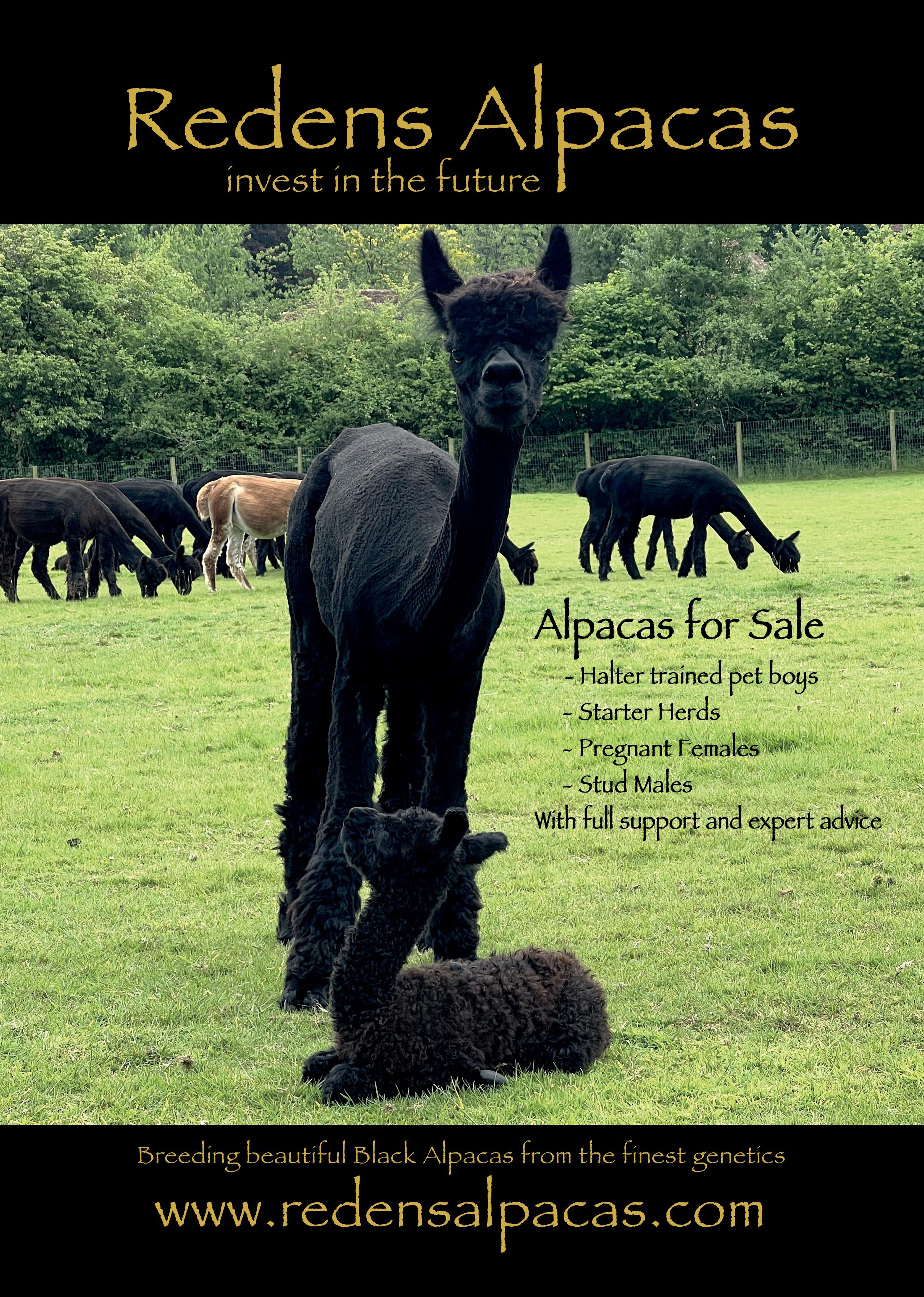
If you already own alpacas, you don’t need me to outline their general allure – if you’re interested in how to maintain their health over specific risk periods in the year, you can skip right over to the camelid calendar section. If however, you’re reading this with a view to starting your own herd, you’re in exactly the right place.
Alpacas are not traditional residents of UK farms and smallholdings; they originate from the Andean plains, and are utilised in meat and fibre industries there. Here they are kept for a variety of reasons including as pets, therapy animals, breeding stock, fibre producers, and for showing. If you’re unfamiliar with their requirements, a good place to seek information is the British Alpaca Society, where there is a comprehensive buyers guide. Many areas have regional groups, which provide a network of fellow alpaca enthusiasts, and organise talks from vets and experienced keepers. Take time to explore the support provided by breeders and regional groups, and ensure that you have a nearby veterinary surgery that you can register your incoming herd with. A list of camelid vets can be found on the British Veterinary Camelid Society ‘find a vet’ page.
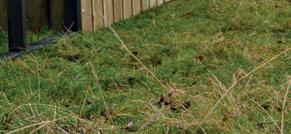
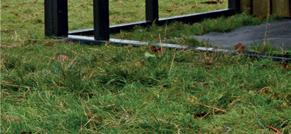

You will generally be advised to start with a minimum of three alpacas; they form strong bonds within their herds, though herd dynamics can be flexible. Single sex groups are most appropriate; as even castrated males can remain sexually aggressive towards females. Also consider the amount of pasture available to your herd – you can keep around 4-8 per acre, depending on their size, but to limit parasite buildup, you must also have rested pasture to transfer them to. Poo-pick these pastures at least twice weekly to limit this
Weather:
contamination further. If you intend to breed, there should also be space to wean new cria onto. You must also provide field shelter, which they will likely use year round to protect them from the elements. Sturdy fencing of at least four foot is ideal (post and rail, with sheep netting, rather than barbed wire or electric).
An essential step in bringing your new alpacas home is considering the biosecurity of your site and disease status of any incoming stock. Speak to your vet about their recommendations, but generally, animals should be screened for external parasites such as mites, and have faecal testing for internal parasites and infectious diseases such as Johnes. TB testing can be undertaken via skin or blood testing, and is a discussion to have with the seller and your vet, as these tests have to be applied for ahead of time. Quarantine incoming stock for around 3-4 weeks to allow for test results to return and monitor for signs of infectious disease. Remember – your farm is a delicate ecosystem, and you don’t want to bring in unnecessary pathogens that could contaminate your land or affect other livestock. Once your animals are on site, consider a health planning visit, where the stock can be checked, and a comprehensive health plan compiled to help you to keep on top of essential health and husbandry checks and procedures. Which brings us neatly on to:
The


Spring is a time for preparation! Cria may soon be on their way, and unfortunately, so too may be parasites. As temperatures start to rise, eggs overwintered on pasture can start to hatch, and rain can spread them across pasture. It is good to get into the habit of faecal egg counting to ensure you
Protecting against adverse weather
Ventilation: Provide good air flow


Flies:
Shelter against summer heat and flies
Adaptability:
Water drinkers, troughs and deep bedding can all be added

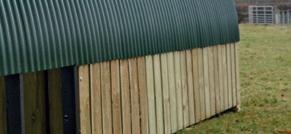
Husbandry:
A great place to complete feet-trimming, vitamin drenches or as a quarantine area
Appearance:

Practical and attractive
Size:


Various options and sizes available. Please visit our website for more details.
Being an Alpaca breeder the welfare of our animals is paramount so the pods are designed and manufactured by ourselves taking this into account. We designed the Alpaca pods for our own herd and are now pleased to offer these for sale.
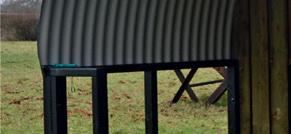
understand the parasite populations within your herd. Reduce the risk to your alpacas by avoiding co-grazing with small ruminant species, poo-picking your paddocks and taking faecal samples from any animals that are in poorer body condition, losing weight, looking off colour or scouring. Regular counts are also advisable (depending on your risk profile this can be anything from monthly to six monthly).

Gently taking them direct from the rectum is the most reliable, but if that’s not possible, penning on hard standing for a few hours should yield some droppings. A ‘pooled’ sample is one with an even amount from each animal in a group. This can give you a snapshot of the worms present, but does not represent the burden each animal carries. Ideally, a sample (over 3g) from each animal should be submitted for a faecal egg count (FEC). Your count should also include coccidial oocysts, which pose yet another threat to alpaca health. Arguably the most dangerous intestinal parasites


Ami graduated from Liverpool in 2011 and went on to undertake a production animal internship and complete a PhD in dairy cattle lameness at the Royal Veterinary College. Working in farm practice ever since, she has found her clinical niche catering to the health and welfare of camelids. Ami sits on the VetPartners Clinical and Farm Executive boards, and is Clinical Director of Westpoint Farm Vets in Chelmsford. The practice caters to a wide range of species, with both commercial and smallholder clients, with a focus on proactive healthcare.
Westpoint Farm Vets are a team of 100% farm veterinary practices. We proudly cater to the needs of commercial farms, smallholdings, open farms and owners of companion farm animals, with a multidisciplinary team of dedicated livestock vets and technicians to ensure the health and welfare of animals in their care.
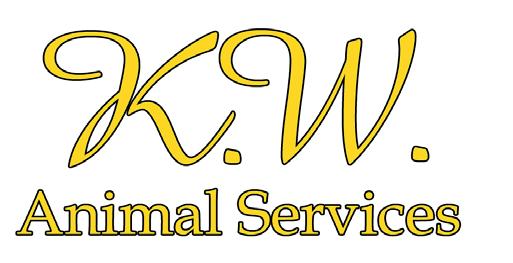

paper-plane www.westpointfarmvets.co.uk
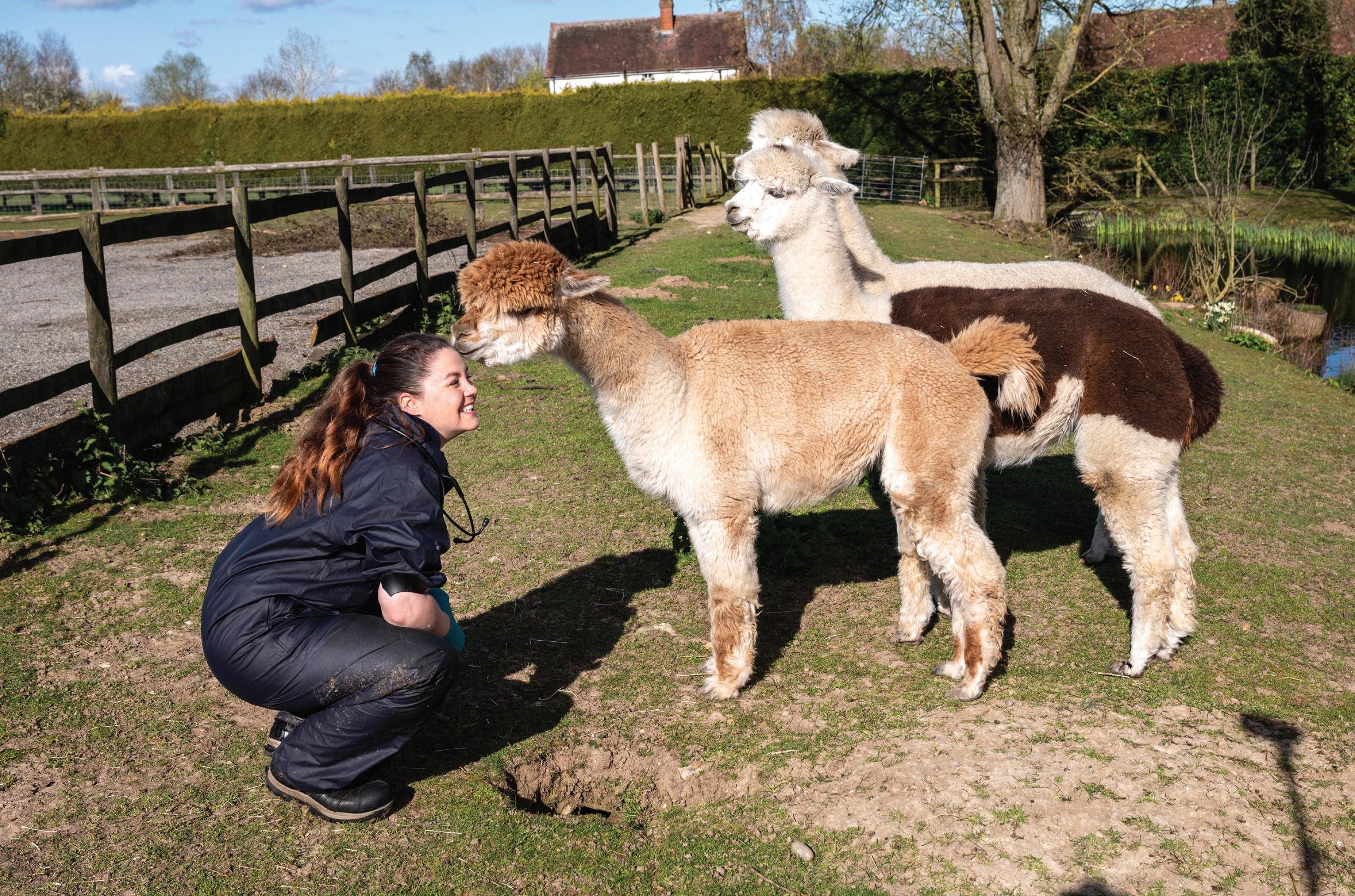
An example of a camelid calendar – think about your own timetable and adjust accordingly
January Castrate 18 month old animals if required
Weaning Time
February
Weaning time
Parasite checks
Vitamin D supplementation
March
Book a blood drive
Boosters
April
Prepare for unpacking
Parasite checks
Vitamin D supplementation
Boosters
May
Blood drive
Unpacking season
Shearing (BCS and skin checks)
Rebook shearer
June
Unpacking
Cria checks
Parasite checks
Shearing (BCS and skin checks)
July
Unpacking
Cria checks
Vet to assess problem breeders
Parasite checks
August
Unpacking Cria checks
Vet to assess problem breeders
Parasite checks
September
Keep up parasite checks
Monitor cria growth
October
Commence vitamin D supplementation
Check teeth and toes ahead of winter
November
Scan for pregnancy
BCS
Gradual dietary adjustments if necessary
December
Early weaning time
BCS
Gradual dietary adjustments if necessary
Care for vulnerable animals in colder weather
Vitamin D supplementation
are Haemonchus contortus (‘barber pole’ worm), a blood feeder causing anaemia, lethargy, weakness and even death. Burdens are best kept at bay by regular FEC and monitoring of mucous membrane (i.e. gum and eye) colour. The next big concern is Eimeria macusaniensis or E-mac. E-mac is an intestinal coccidian which can cause ill thrift, stunted growth, and very quickly increase susceptibility to infections. Alpaca do not behave as other ruminant species, in that diarrhoea is not always a feature of heavy parasite burdens, so regular checks are essential for identifying problems.
Lastly, if you are awaiting cria, late Spring is a goodtime to organise a blood donation session with your vet, who can arrange processing of blood into plasma, in case of issues with newborn cria. Plasma should only be utilised on its herd of origin (for both biosecurity and legal reasons), so having a stock as a backup is a sensible move, rather than having to organise emergency donations. Speak to your vet about the best donor criteria, but generally they are sturdy, well behaved, healthy males (or open females) over 60kg and up to date with clostridial vaccination.
The beginning of summer is a time for maintenance – having a shearer booked well in advance is essential. Alpaca suffer with heat stress, so shearing before the temperature rises is important. As they are restrained for shearing, you can check their toes (and trim if necessary), and teeth. Generally speaking, teeth do not need routine maintenance, but fighting teeth may need trimming or if overgrown incisors are affecting their ability to eat or maintain condition, then a vet visit is required to adjust them. Trimming of cutting of teeth is an act of veterinary surgery, only legally performed by a vet.
There is often temptation to worm and vaccinate at shearing, though this is not recommended. Parasite treatment should be targeted to the burden present, and shouldn’t simply be performed as a matter of course – gathering animals for shearing presents a good opportunity to take faecal samples that can determine the correct course of treatment (if any). Though shearing is conducted quietly and gently, it is still stressful, thus the immune response to vaccination may not meet its full potential. It is best to discuss your herd’s risk profile, recommended vaccine and appropriate schedule with your vet.
Shearing may reveal mite burdens or the beginnings of flystrike once fibre is removed. Both are much easier to manage once fibre is short, so if you note crusting or scabbing (particularly on the legs, and groin/’armpit’ regions), your vet can take samples and set a course of treatment for the parasite(s) responsible.
>> Continued on next page

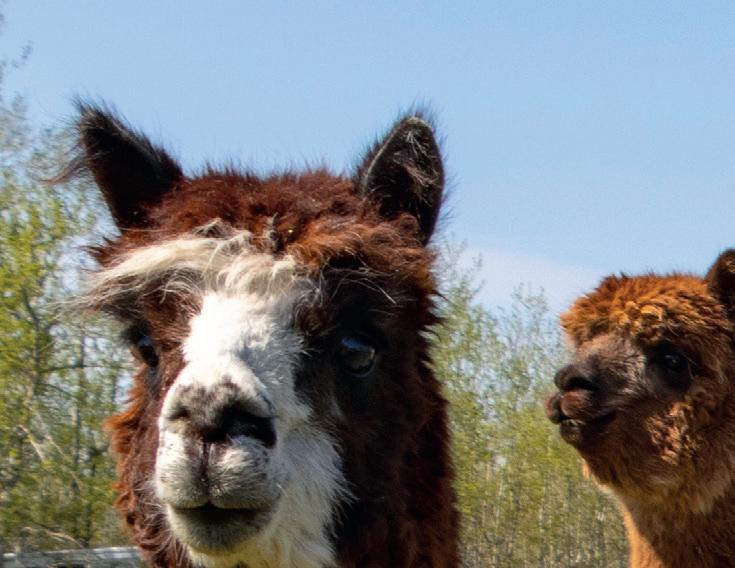

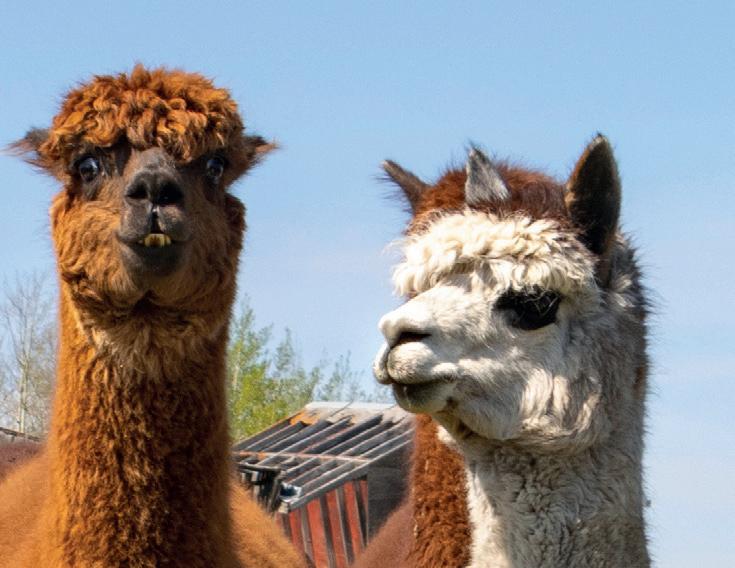


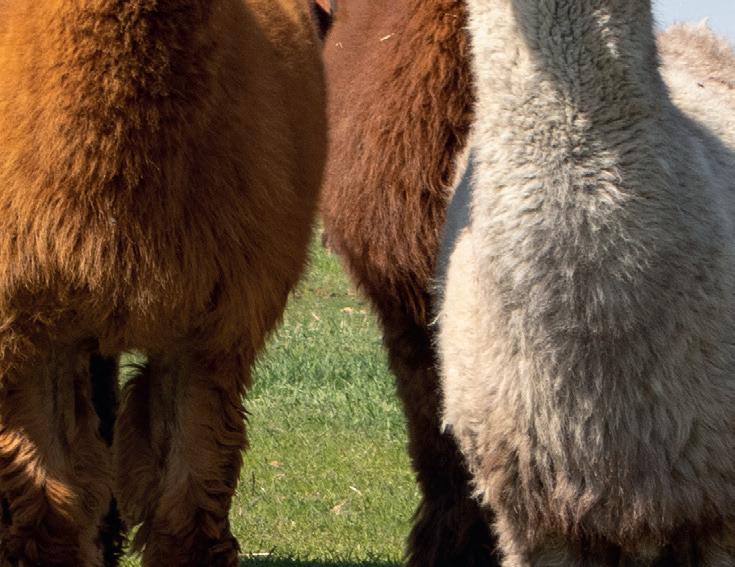
Preventative fly repellents must be used over warmer months: flystrike can advance frighteningly quickly and is an emergency; if you see darker fibre patches - investigate. Initial treatment such as washing and flushing out maggots can limit damage while you seek veterinary advice.
After shearing, you can more easily assess the body condition of your alpacas. Record their body condition scores to help determine who may need to shed some weight, or who could do with building up. BCS is assessed on a scale of either 1-5 or 1-10 (1 being thin and 5 or 10 obese), and alpacas should largely sit around the middle of these scales. Ask your vet to demonstrate scoring techniques and advise on rising or reducing planes of nutrition.
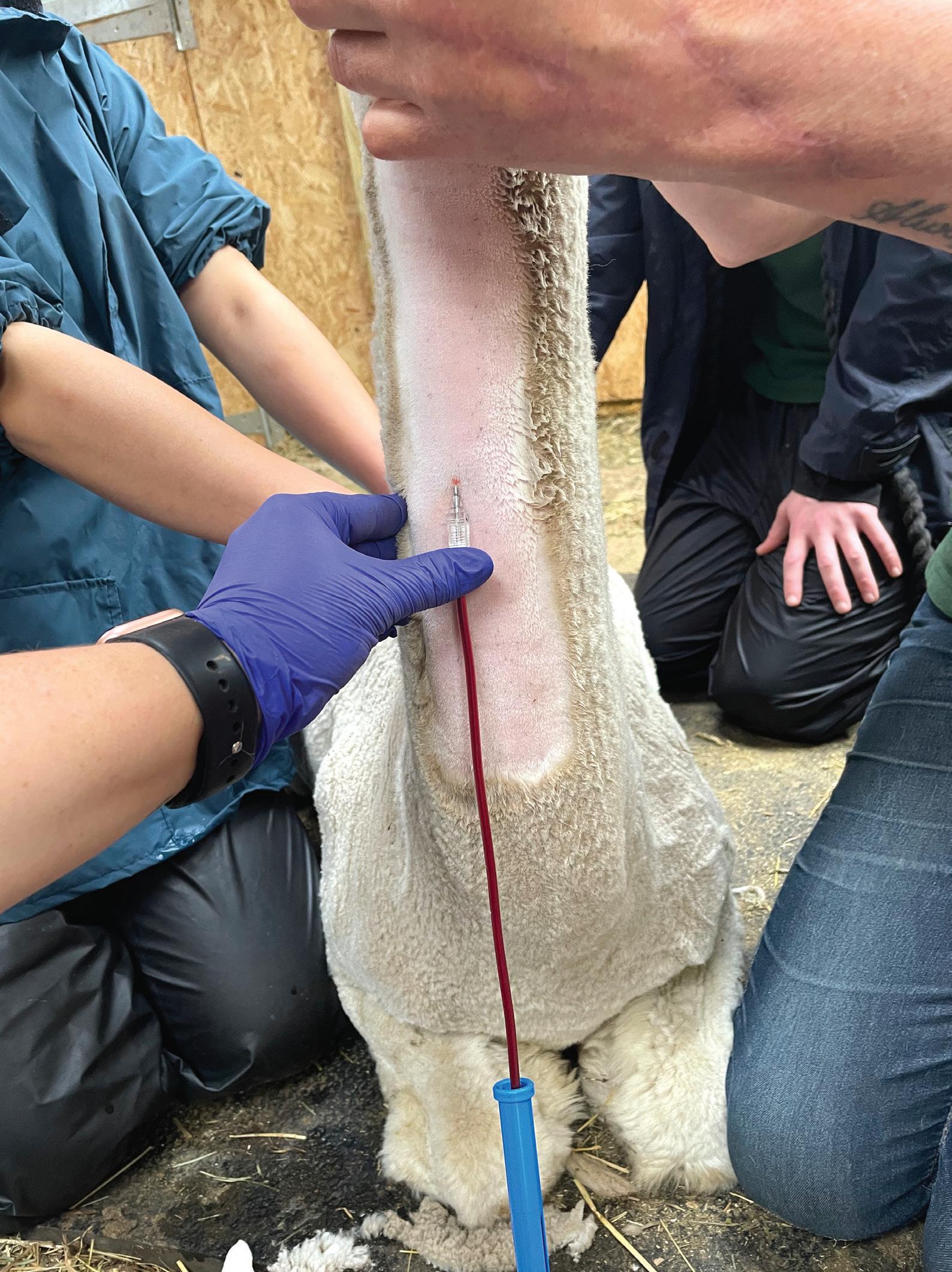
If you are breeding, cria are going to be making an appearance over the summer, hopefully without any issues. Cria care is a whole other article in itself, but it helps to remember that sick cria can go downhill extremely quickly, so a vet should be sought promptly if you have any concerns.
Don’t be lulled into a false sense of security in autumn, though not as busy a season, parasites can still pose a threat, from intestinal worms to flies. Remain vigilant!
As winter approaches, you may want to focus on building the condition of your more vulnerable alpacas. Poor do-ers or thinner pregnant animals may need extra nutritional support. Often this takes the form of short forages including alfalfa, grass cubes or sugar beet in moderation. It is not appropriate to simply increase concentrate rations – this should only make up a maximum of 30% of the diet or we risk disturbing the gut microbiome.
Alpacas do not get as much opportunity to absorb vitamin D in the UK. Post-shearing, their fibre will have regrown significantly, so their surface area to absorb vitamin D from the sun is reduced – particularly as daylight hours reduce around this time too. Therefore, we recommend supplementation with vitamin D, even if present in their feed supplements. Injectable forms should be given every eight
weeks from October-April to prevent painful rickets developing. Oral pastes are also available, with different dosing schedules, so discuss what will work best for your animals with your vet. It's worth placing an order ahead of time, as injectable products need to be imported by a vet. It is also worth noting that the product is used off licence (as it was not developed specifically for camelids), so your vet may ask you to sign a form before it is dispensed. This is a legal requirement, rather than bureaucratic awkwardness.
Though alpacas can cope with low temperatures generally, they are not adept at breaking ice, and will suffer dehydration if you do not check their water sources regularly over winter. Dehydrated animals are vulnerable to impaction colic, a blockage in the digestive tract which causes abdominal pain.
Once again, condition scoring should form part of your care routine. In winter, animals that may need extra care and provision are the old, very young, just weaned, those lactating or just post-weaning, with a history of illness and animals with poorer BCS. Once scored, you will have a list of animals which could stand to lose condition and those which need to make some gains, and you can tailor their feeding appropriately.
Regardless of condition, ad-lib hay is essential for alpacas in winter, as availability and quality of grass is unpredictable. Increasing condition must be done very carefully, and this is best bolstered with good quality forage.
Animals can be thinner for many reasons, including subordinate animals being bullied out of trough and shelter space. Make sure your shelter allows adequate space for all animals, particularly in entranceways, and set up troughs with enough space around them to avoid lower ranking animals being excluded. Parasites are the main reason for condition loss. Unlike with other species, they do not always cause consistent diarrhoea in camelids, but still prevent nutrient absorption in the gut. Taking regular faecal samples is an ideal way to track parasite activity. It is important to take veterinary advice on which animals to sample and for support to interpret results for optimal treatment. Teeth and toes influence body condition too; lame animals are less able to access troughs or may be too sore to stand and feed. Similarly, animals with overgrown or missing teeth may be unable to pick up and chew food efficiently. Lastly, many infectious diseases can manifest as wasting or ill-thrift, so it is worth asking your vet to examine any animals which give cause for concern.
Of course this is a whistle-stop tour of an alpaca year; there are so many aspects of health to be explored in detail – but hopefully an overview will make a good starting point. Here’s to a happy and healthy year in your herds.
so and nutritious, palatable grass feed. 100% pure, short-chopped grass




















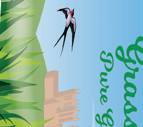
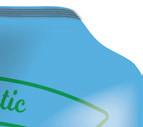

















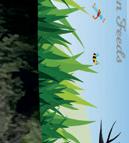

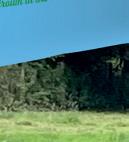
















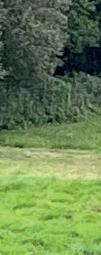




“Thoroughly recommended. The alpacas clearly find the Grass-tastic and Grass Pellets delicious. Definitely the most liked grass product on the market.”

 Nikki Hayton, Faraway Alpacas.
Nikki Hayton, Faraway Alpacas.






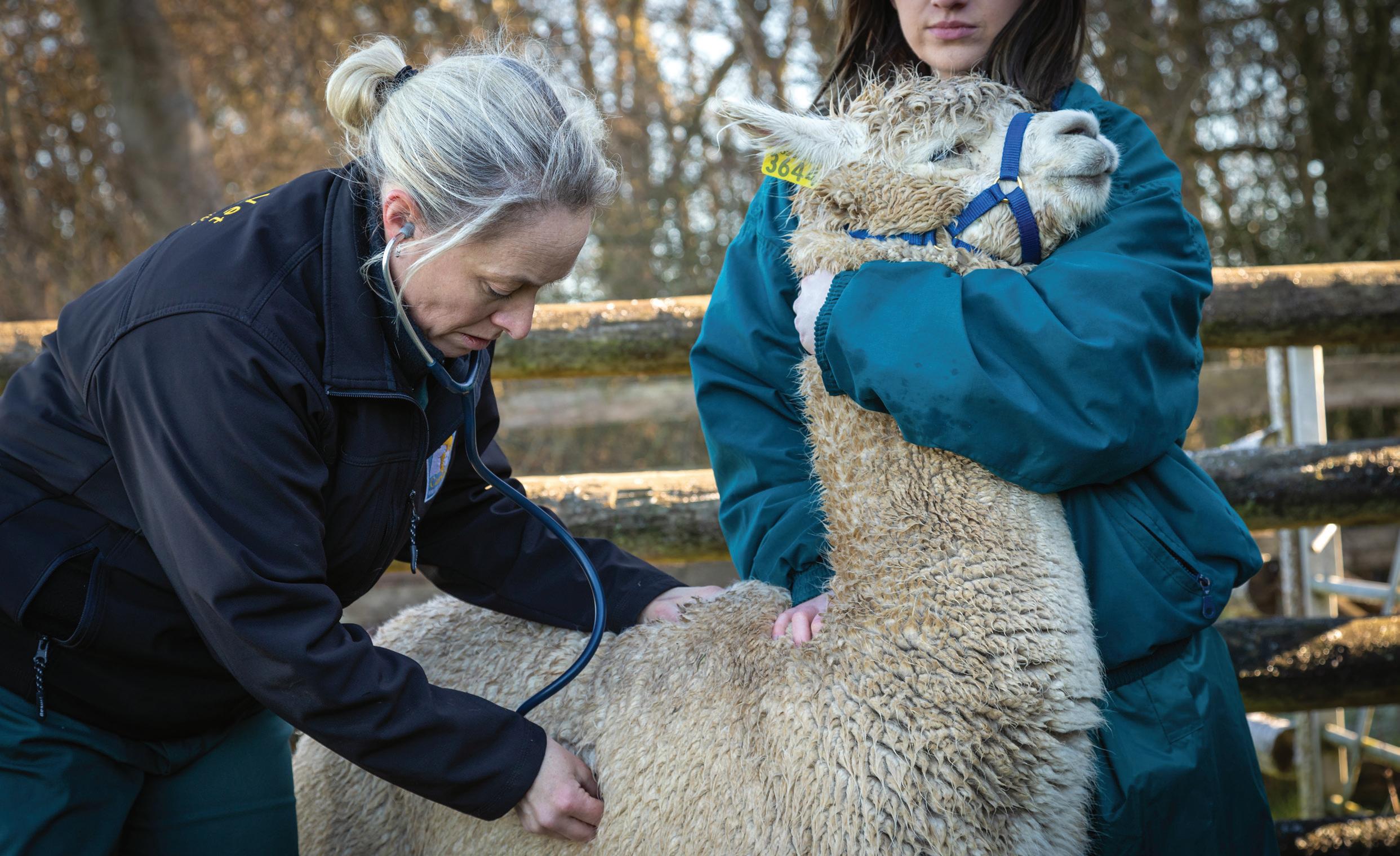
Igraduated from vet school in the last century! It sounds like I’m ancient now because some of those currently graduating vet school weren’t even born then! When I graduated in 1999, I had learnt one single thing about camelids during the entire five years of training. I still remember it clearly. Back then I was already interested in alpacas since we’d had them at home for 10 years by the time I left vet school. Consequently my ears pricked up when I heard the word “alpaca”. Our anaesthesia lecturer told us that there was once a single case of halothane-induced hepatitis in an alpaca… That was it – my solitary gem of camelid knowledge!
At the time of my graduation in 1999, in the UK, we really did know very little about camelids. There were comparatively few animals in the country, only perhaps 5,000 in total. Our local vets did what they could, but largely just extrapolated what they knew from other species. This had resulted in some problems. At one point in the mid-90s, we lost one of our original alpacas when a vet used Lutalyse. This is a natural prostaglandin, rather than the synthetic prostaglandin called cloprostenol (eg Estrumate) that is used for inducing luteolyis. We also had a female alpaca that developed vaginal prolapse, but she was rebred because we didn’t realise that the problem would recur at subsequent pregnancies.
Moving forwards 23 years, and new grads actually do learn about camelids at vet school. They are not part of the core curriculum which is far too full as it is, since omnicompetence across domestic and farmed species is expected at graduation. However, the vet schools have realised that their new graduates will see camelids in practice and therefore they have tried to help them by providing at least some basic training. There is however no consistency across the vet schools. There may be a couple of lectures, sometimes more, and some student groups organise their own talks from people like myself. But there are a lot more students seeking experience working with camelids during their vet school careers because they know they’ll see them and they want to learn. As with all seeing practice however, the extent of the experience is limited by the caseload and knowledge of the vets that they work with. There are further opportunities to do species specific training later however and continuing education is expected from vets to maintain their license.
After my first year or so in practice, I was home enjoying helping out with shearing and determined to learn what I could about camelid veterinary medicine. When I started looking, there were no internships or residencies available anywhere, so I organised to go and spend six months working with the amazing David Anderson at The Ohio State University. As luck would have it, he had just sourced funding for a residency programme that would focus on camelids. It was a matter of being in the right place at the right time, and I was accepted onto the programme. He was an incredible teacher and Ohio State could not have been a better place to learn. The overall farm animal caseload grew from 2,500 cases per year to 3,500 cases per year during my three year residency programme, and 1,500 of these were camelids. So this provided fantastic opportunities for learning. I often had up to ten camelid cases in the hospital at any one time, plus day cases, and since we literally worked 24/7 with only 10 days’ holiday a year, you were totally absorbed in your caseload and learnt a tonne. We kept our own cases overnight and then were on call for new cases on a one in three rota. My clients would often ask if I ever left the hospital!
I spent an extra year at Ohio State as a clinical instructor after the end of my residency. This was an excellent way to consolidate my knowledge in a familiar environment and also to learn more about teaching. I returned to the UK in late 2006 and set up the Camelid and Farm Animal Hospital service at the Royal Veterinary College in 2007. My goal with moving back to the UK was to improve the level of camelid care at hospital level and also to improve the standard of camelid and farm animal teaching here in the UK. Unfortunately, although the supporting services were excellent, the facilities they permitted us to use were very poor and limited our ability to offer hospital level care. However, my elective course – one week of comprehensive training with practicals – was really popular and showed just how keen the students were to learn about a species that saw no focus within the core curriculum, but that they were seeing regularly out in practice with the vets.
Since 2011, I have run my own camelid specific referral and consultancy service, based in Oxfordshire. I have my own clinic with camelid-specific facilities and also provide consultancy and teaching – both to vets and owners. I was recognised as a Specialist in Camelid Health & Production by the Royal College of Veterinary Surgeons in 2016 and reconfirmed this status in 2021. To date, I am the only specialist in the UK. I am also the current president of the British Veterinary Camelid Society.
In terms of veterinary services for camelids in the UK, these are provided by general practice vets in the first instance. There will be a wide range of experience level amongst the vets that will be determined by what training they have received and their interest level. Some vets will have a lot of experience and be motivated to learn about camelids, while others may be less experienced. However, they should be more than capable of performing physical examinations, taking diagnostic samples and seeking help where needed. It is most important to develop a good relationship with your regular vets because if they know you and your animals, it can be easier to help when there are problems. Furthermore, if they aren’t totally comfortable with camelids, invite them on to the farm to spend a bit of time with you and your animals and invite them to perform clinical examinations to learn what


is normal. Obviously this shouldn’t be a chargeable visit and it might take a while to fit it into what may be a hectic schedule! If you only ever call them when it’s a dire emergency, the animal is about to die, and you’ve wasted valuable time trying everything you’ve heard about from other owners on social media who haven’t seen your animal and have no veterinary skills, you cannot be surprised if there is a suboptimal outcome. You must give your vets a chance to help you.
Your general practice vet, even if they are less familiar with camelids, will work from basic principles and where they find gaps in their knowledge, they will seek to fill them by researching from literature or by consulting with someone like myself who specialises in a particular area – they may also choose to refer a case if they feel completely out of their depth or a case requires further expertise or diagnostic/therapeutic capability than their own practice is able to offer. This is standard practice: it is your right to ask for a second opinion. Most of the vets that I consult with are more than happy to ask for advice when they need it – at the end of the day, they put animal welfare ahead of everything else and have the best interests of their patients and clients at heart.
Vets are able to join the British Veterinary Camelid Society: we do have a number of members from European countries too! We have an annual two-day conference normally, and members are able to join a discussion group on Facebook so they are able to post questions to other members that many members find really helpful.
>> Continued on next page
There are a number of resources available to you and your vets here to learn more about camelids, or to seek help with clinical cases and herd health.
• To find a vet that is happy to work with camelids, you can use the Find A Vet feature on the Royal College of Veterinary Surgeons (RCVS) website (www.rcvs.org). Use the Advanced Search feature and select “Camelids” to narrow down your results. There is a similar feature on the BVCS website (www.camelidvets.org) although this one is a little out of date. We’re working on that!
• For help with clinical cases, vets can consult with me by phone or email. This will be a chargeable consultation. The more information about the case that they are able to provide at the time of the consultation, the more helpful I can potentially be. For example, if I can view the results of any lab results, regardless of whether they have been reported as “normal”. It is useful to see the detail in these reports, as some reference ranges are incorrect (based on other species) and some reports can be fairly superficial. Therefore I am sometimes able to suggest further diagnostic tests based on what hasn’t already been evaluated. The consults that work best for some cases, are those where I’m able to speak to both the owner and vet at the same time, because that way I gain the most accurate picture of what is going on and both parties are aware of the advice I provide. For some cases, having me on a video call with the vet on farm to “be my hands and eyes” also works really well. An example would be examining a skin case or helping with a neurological examination. By the time this article goes to press, I hope to have an online booking system that will allow you or your vet to book a consultation that can be by phone, video app phone call such as Whatsapp, or Zoom.
– Remember that if you have a problem with an individual alpaca, you should always contact your regular vet in the first instance as your vet will need to evaluate the case and decide on the most appropriate action, including provision of any emergency treatment. If your vet decides that they need some specialist advice, they can contact me to discuss the case.
– If you have a general question about your alpacas, such as herd health or reproduction-related, you can book a consultation call. We can involve your regular vet where relevant.

• Reproduction/fertility work is highly species-specific. I have been performing infertility and breeding soundness examinations of alpacas since 2002 and can provide expertise that is unrivalled within Europe. Camelid specific expertise is a niche area and if you have alpacas that are failing to conceive, or males that require breeding soundness evaluation, please consider bringing these animals to me for evaluation. A typical female breeding soundness evaluation costs between £200-£350 +VAT.
• Herd health planning. If your vets do not have camelid specific expertise, or simply don’t have time to develop a full tailored herd health plan with you, consider asking me to help you with this. An up-front investment in this will pay dividends in the long run as you are likely to avoid a lot of potential problems arising later on. I have a variety of different packages available to suit different budgets. Book a free call with me to discuss which option might be appropriate for your needs.
• The TB Advisory Service is a free service offered to all keepers of camelids in England (DEFRA funded). You are entitled to a free visit from a TBAS veterinary advisor who will offer bespoke, practical and cost-effective advice to all eligible farmers in England to help reduce the risks associated with TB. Your vet might be a TBAS advisor – ask them to find out and schedule a visit – or there are independent advisors such as myself that you can also consult with. You may also be able to get a badger sett survey.
• For learning opportunities, for both you and your vet, I offer a selection of courses. The British Alpaca Society offers generous sponsorship to vets based in the UK to complete my Camelid Health Course for Vets. This encourages vets to undergo training in an area that might not lie within their core interests. So please make sure that your vet knows about this valuable learning opportunity! For vets that want to take their studies to the next level and complete a Certificate in Advanced Veterinary Practice, they can complete three 16-week camelid modules through the University of Liverpool and potentially earn a camelid designated certificate. We now have four Camelid Certificate holders in the UK. There’s loads more on my website at www.ukalpacavet.com, including some free resources for owners, information about our efficient faecal testing service that is tailored specifically for camelids, and our One-Stop Camelid Shop. If you’d like to subscribe to my newsletter, you can do so by clicking the link at the bottom of my home page, or visit:
www.ukalpacavet.com/newsletter-signup/

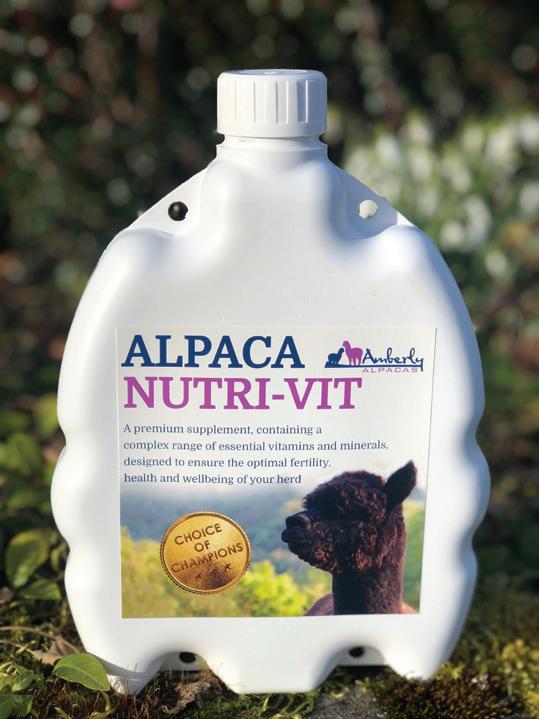










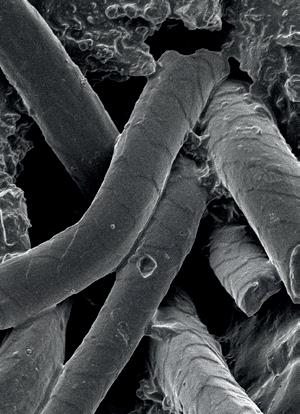


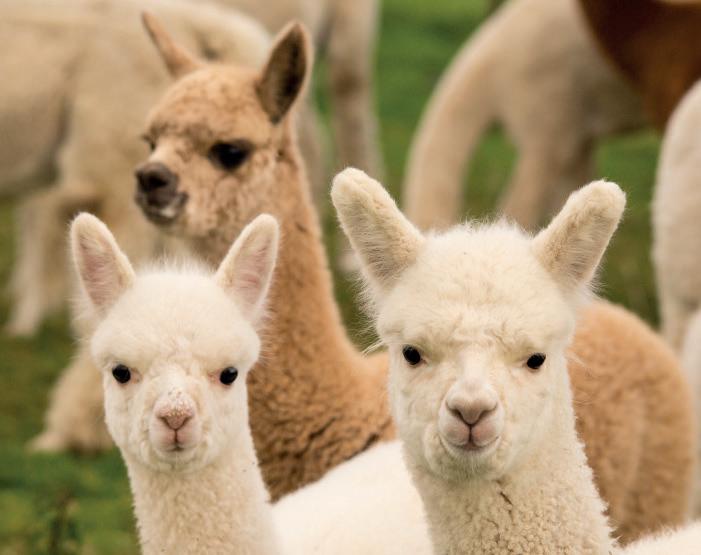


2022 has been a successful year for Winsaula Alpacas and was made extra special by a visit from our lovely granddaughter from New Zealand.
Co-incidentally we have been using New Zealand imported black father and son stud males Thistledown Maniatoto and Thistledown Oscuro in our coloured breeding programme which has super-charged the quality of our Alpacas. Picking up 47 Champion and Reserves in 2022 plus two Judges Choice awards for Winsaula Unforgotten and a Supreme Champion for Agatha Raisin we were delighted when Winsaula Alpacas were awarded most successful small breeder at the Spring Alpaca Fiesta and most successful EAG member breeder at the Eastern Alpaca Show. Our success is largely due to Nikki Hayton at Faraway Alpacas who imported Maniatoto and Oscuro recently along with Alaska from Thistledown Alpacas in New Zealand. Thistledown Oscuro is Sire to
Maniatoto and standing at stud at Winsaula Alpacas in Somerset. Thistledown Maniatoto and Thistledown Alaska reside at Faraway Alpacas in the New Forest.
Our focus on genotyping and grey breeding has thrown some lovely surprises. Last year I wrote about white breeding ‘mistake’ in our grey and coloured breeding programme only to discover when I nonchalantly got round to testing him that our farm favourite Winsaula Touch of Frost is Classic Grey, the white markings are hidden because he is so white! Dr Kylie Munyard who established the grey genetic test identified that 9.2% of white Alpacas in her sample of over 500 Alpacas were Classic Grey.
We are blessed with many of the rarer EE aa genotypes appearing in our breeding as these are most likely to produce colour, and we are very excited to have four Classic Grey and two Modern Grey Cria on the ground for 2023 show season.
Winsaula Touch of Frost, our surprise grey Alpaca with our granddaughter
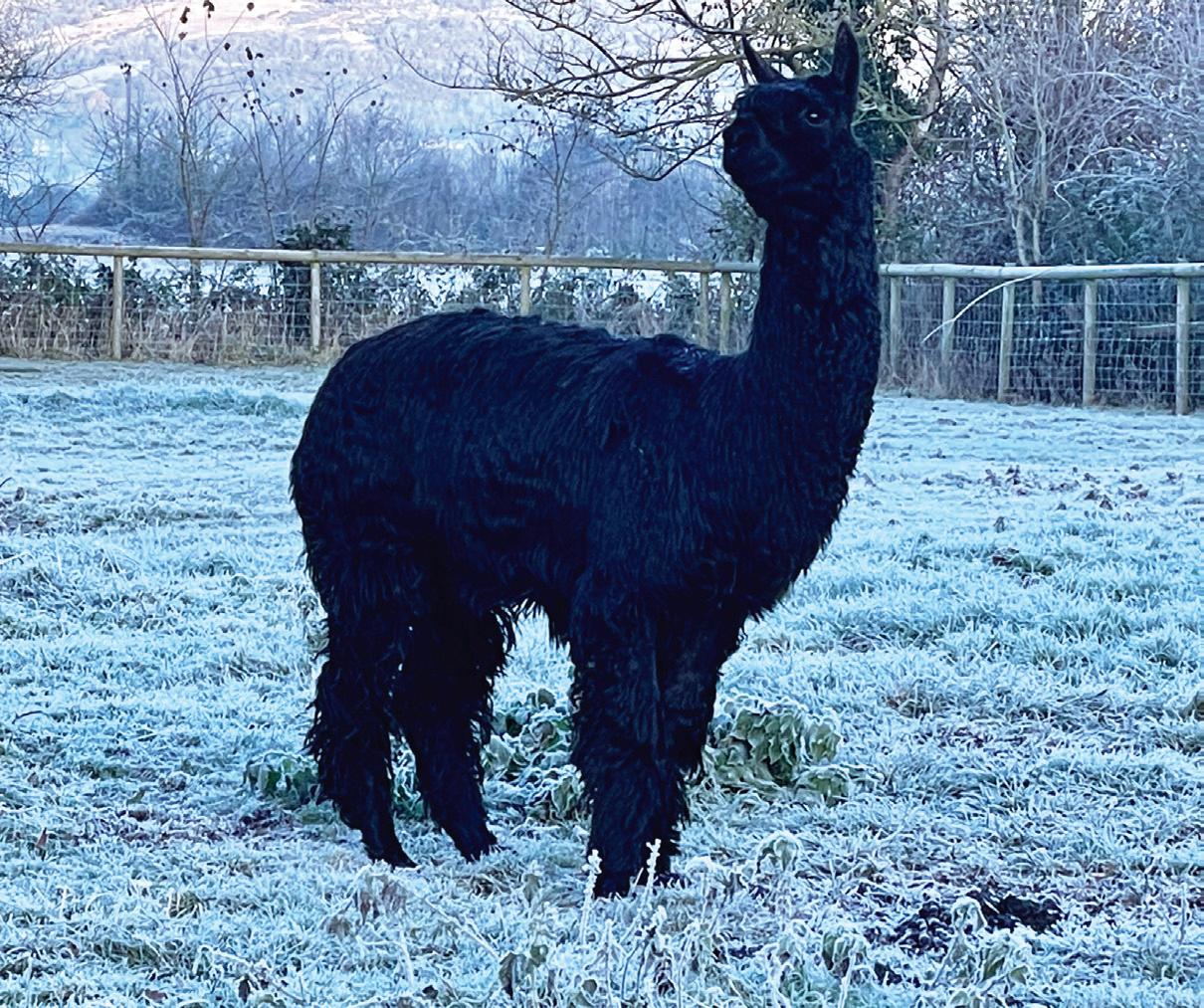



Winsaula Oscuro’s Serendipity lost in the clouds
Oscuro looking hot in the freeze
Winsaula Oscuro’s Serendipity and Winsaula Influencer, two shades of grey, classic grey and modern grey
Winsaula
has places to go. A multiple champion in very competive light classes

Winsaula Angelica teaching the Cria some manners


 Cracker
Winsaula Malahide – 2022 National Show Champion Halter and Fleece
Winsaula Unforgotten stealing hearts with two 2022 Judges Choice awards
Cracker
Winsaula Malahide – 2022 National Show Champion Halter and Fleece
Winsaula Unforgotten stealing hearts with two 2022 Judges Choice awards
Shearing will soon be upon us again so get in touch with a shearer and get booked in – a full list of shearers (none endorsed by the BAS) is available from Duncan by emailing ceo@bas-uk.com or from your mentor and/or seller.
During your husbandry tasks in March or early April you might consider taking fibre samples and sending them off for testing ahead of shearing so you will have a good idea of the quality of your fleeces; this in turn will help planning for processing/showing/selling/manufacturing as well as assisting with future breeding decisions and maintaining good records for your herd.
This year sees the return of The BAS Fibre Roadshow in conjunction with Art of Fibre. Paul Vallely and I delivered seven workshops in nine days all over the UK mainland during 2017 and we will be back on the road to several venues again in February and March 2023. The aim is of course one of education and we hope to provide an insight into fibre including why fibre testing and results are important to breeders, how to use those results to breed for better fibre, helping you to realise the potential of the genetics you already have, how to read fleeces, how to skirt to maximise yield and return on your fleeces and more. Please see your BAS e-newsletters/BAS website/regional group newsletters for more info of dates, venues and cost. We hope to return after the summer to deliver a third roadshow taking the topic of fibre further.
While it is always appreciated that not every alpaca owner has an interest in fibre, every breeder should be looking to maximise the quality and yield of fleeces. Alpacas are after all fibre producers – it is what they are designed by mother nature to do (before the diverse range of activities even start) and we spend a small fortune on shearing each year – often fleeces are disregarded as a by-product not the product; the reality is all fleeces have both a value and a use. To that end Paul and I will be introducing The Campaign for British Alpaca Fibre which is aimed at every alpaca owner, large or small. Look out for more details on how you can become involved with this exciting initiative and how to benefit.
The BAS will represent members at the Alpaca Expo in Graz, Austria in early February with representation on fibre, tourism, UK genetics and export opportunities to name a few. If you are attending then please come and find us and say hello.
For more help with your fleeces you can email Duncan or myself: ✉ fibre@bas-uk.com

More information on shearing is available from the BAS website: LOCATION-ARROW www.bas-uk.com/?s=shearing
Alpaca Expo: LOCATION-ARROW www.alpaka-expo.at/en
The good news is that the drive for sustainable, eco-friendly and British products in general continues and there is no better time to promote all the wonderful properties our fleeces and products bestow, writes Emma Taylor on behalf of the BAS Fibre Committee.
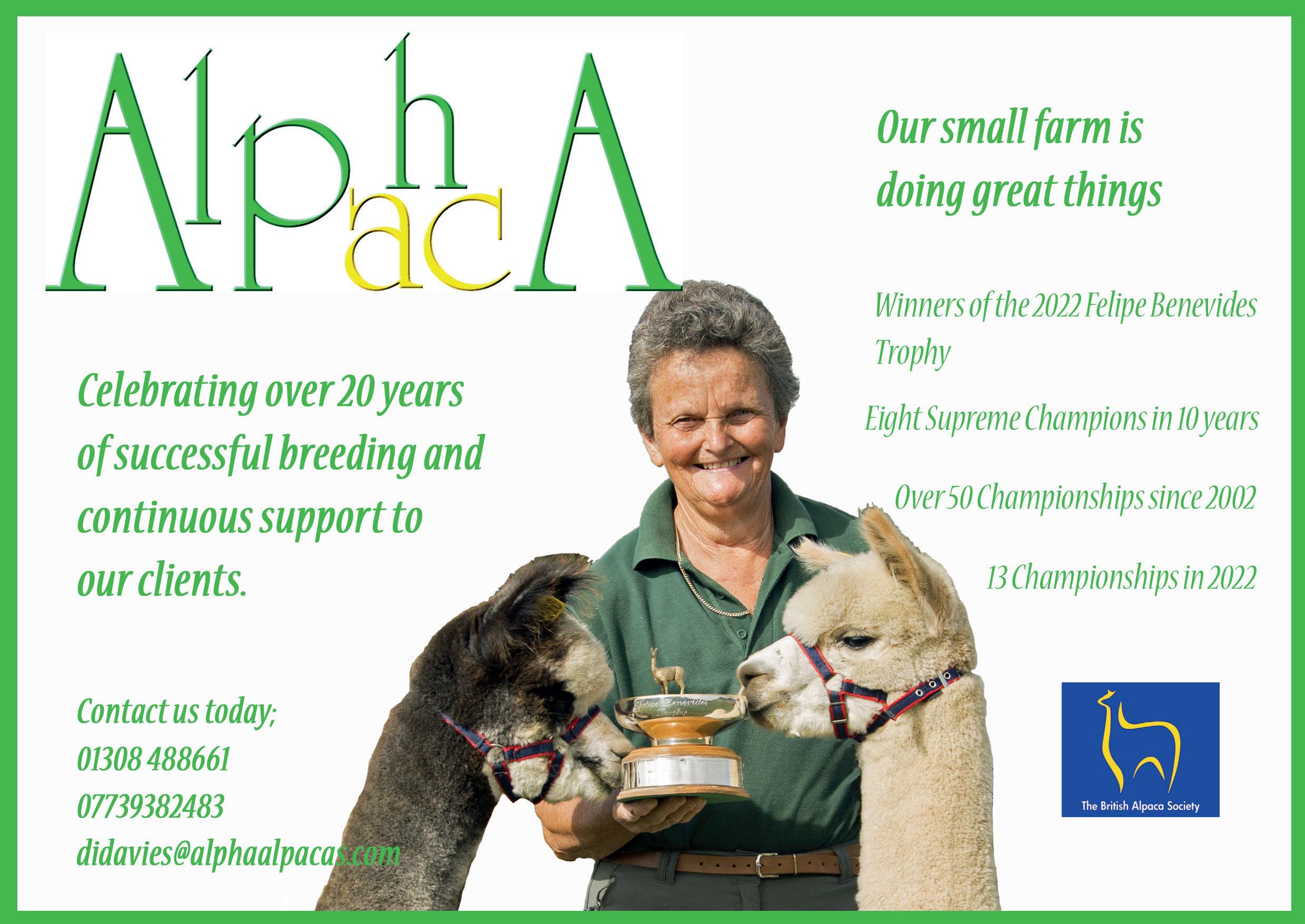









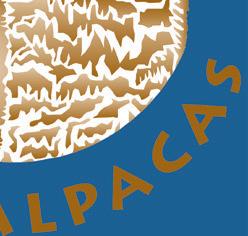

There are just a handful of small spinning mills in the UK and an even smaller number of worsted mills making bespoke alpaca yarns. Two Rivers Mill occupies the niche between craft spinners and large commercial mills, making tops and worsted yarns from 100% alpaca and alpaca blends in batches from 10 to 100+ kg

Neither too small nor too big, we are accessible to smaller breeders and manufacturers who don’t have large volumes of fleece available or the financial resources to make large product ranges yet we are still able to tackle moderately large production runs. We are passionate about the quality of our yarns with some being featured in knitwear for John Smedley collections and others made into cloth passing through the hands of Saville Row tailors.
Our rates for processing are somewhat higher than for the large volume mills but are carefully calculated to sustain our business while our clients can receive good returns from retailing their yarns or making garments. That, however, means that it is not viable for us to work with smaller lots or fibre that is outside our basic quality specifications for fineness, variation and staple length.
Our size lets us have a flexible approach to working on new products and innovative projects which we really enjoy. We have just been working on a novel provenance tracing project that could be a significant innovation as the ethics of the textile supply chain comes under closer scrutiny. We also enjoy testing and improving our process with different fibres and fibre blends and exploring the opportunities that the combinations present.
A reliable supply of high quality alpaca fibre is essential for our business to thrive. This doesn’t happen by accident but is the result of careful planning by animal breeders followed by skilled shearing and sorting the best fibre from the lower grades. The age, genetics and feeding of the animals have to be managed purposefully to grow the best fibre, which
will have much reduced variation of fineness across the blanket part and an absence of coarse hairs. Excessive variation makes processing more difficult and results in lower yarn quality with more faults. The average fibre diameter of a fleece sample or the amount of fibre crimp are not on their own reliable guides to the quality of the finished yarn or garments and need to be used as part of a wider evaluation strategy.
There are many factors to control and skills to learn when producing fibre suitable for mills to spin. Unfortunately too much of the fleece we receive at the mill is not suitable for combing and spinning which leads to far more wasted effort than we are comfortable with. Fortunately help is at hand and there are plans to set up an independent fibre consultation group combining the knowledge and expertise of processors, manufacturers and fibre experts to create standards and provide guidance for those interested in improving fibre quality. The aim is to raise the quality and value of alpaca fibre grown across the UK, to reduce the waste of fibre and effort and to improve the viability of all the businesses in the textile chain.
For the past 10 years we have been developing our processing techniques and skills at our factory in Dorset through valuable collaborations with our clients and partners in the wider textile industry. Recently, new and exciting opportunities have come our way prompting a decision to completely re-locate the mill to Northern Ireland where we can take advantage of the favourable business climate as well as a physical climate better suited to fibre processing. The move is planned for Easter this year and after a period of transition we hope to be fully operational again by May with a programme of improvements and scale-ups implemented throughout the year.
We are looking forward to welcoming all our existing customers to the new factory and are excited at the prospect of developing new working relationships in UK, EU and further afield.



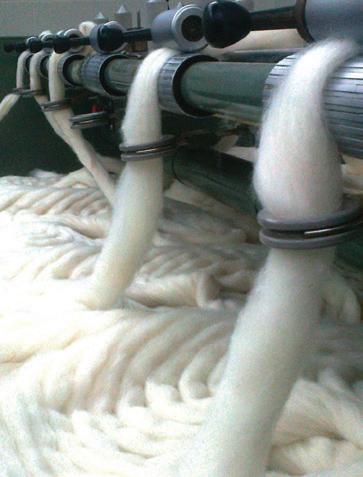




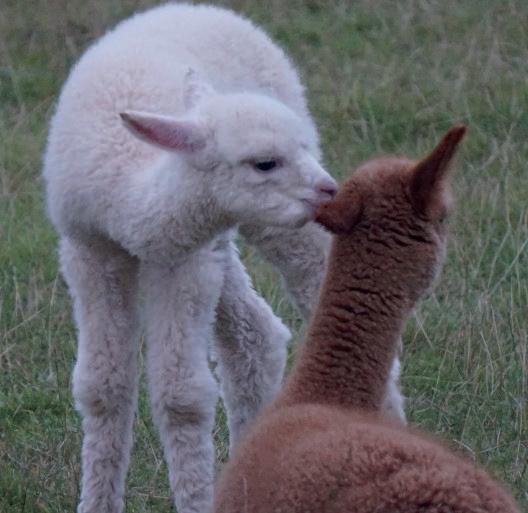


Using 3.25mm needles and thumb method cast on 46 sts.
1st Row - * K2, p2, rep from * to last st.
2nd Row - *k2, p2*,rep from *to end.
First and second rows form the pattern for 2x2 rib. Work in 2x2 rib until mitt measures 6cm, (2½in), ending with a rs row.
Next Row - (P4, p2tog) 7 times, p4. 38 sts.
Change to 4mm needles and proceed as follows: 1st Row - Knit.
2nd Row - Purl.
First and second rows form the pattern for st-st (stocking stitch).
Work six rows more in st-st.
Next Row - Inc in 1st st, knit to last 2 sts, inc in next st, k1. 40 sts.
Starting with second row of st-st work until mitt measures 14cm, (5½in), ending with a ws row. **
Next Row - (Thumb hole) K13, cast off 7 sts, k19.
Next Row - P20, cast on 7 sts, p13.
Work five rows more in st-st.
Next Row - P4, pick up loop between last and next st and purl into back of this loop (this will now be referred to as m1p), (p5, m1p) 6 times, p4, m1p, p2. 48 sts.
Change to 3.25mm needles and work 4 rows in 2x2 rib.
Cast off in rib.
Work as given for Left Hand Mitt to **.
Next Row - (Thumb hole) K19 cast off 7 sts, k13.
Next Row - P13, cast on 7 sts, p19.
Work five rows more in st-st.
Next Row. P4, m1p, (p5, m1p) 6 times, p4, m1p, p2. 48 sts.
Change to 3.25mm needles and work 4 rows in 2x2 rib.
Cast off in rib.
Join side seam. Cover with a damp cloth and leave until dry.






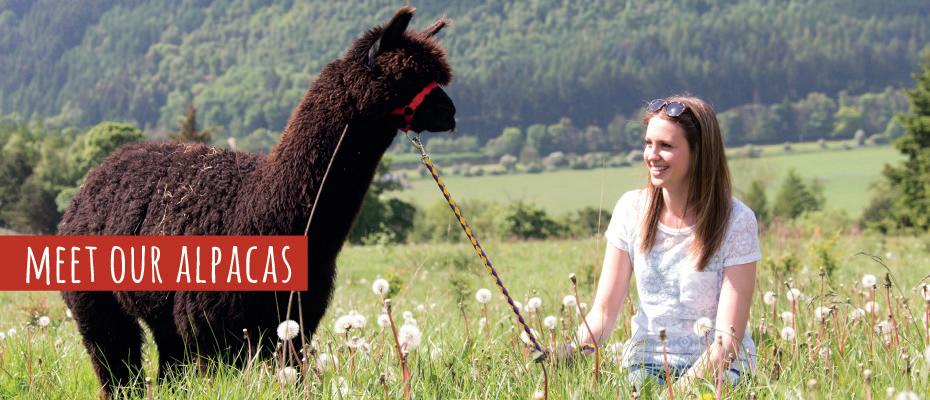



East Anglia Alpaca Mill is one of only a few mills worldwide who specialise in processing pure alpaca fibre –that is without blending with other fibres.
We are a small business created to ensure anyone who owns alpacas (or buys a fleece) can access commercial processing. We have a high throughput of fleeces of all styles & quality (both Huacaya and Suri) and can process just a single fleece if required. Our true USP is that we process for each client quite separately from the next – this guarantees your fibre is returned to you in yarn (fluff, roving and/or felt) with total provenance to the alpaca(s) who have contributed to the product. We also supply a processing sheet for each batch of yarn which enables clients to see where any fibre loss has occurred. We see from the figures on our worksheets a direct correlation of loss to lack of skirting, short staple and/or lack of uniformity. We have numerous clients in our sub 1% loss club! Our attention to customer service and involvement of clients with decision making and throughout the processing is a priority for us – your animals and their fibre – we know what they mean to you!
Neither Chris nor I come from a textile background and the learning curve over the last twelve years has been steep and continues every day as we are always looking for ways to speed up throughput or improve our facility. Processing is labour intensive and we have estimated we handle each fleece no less than 100 times during processing. We also mentor mill owners worldwide.
Several pieces of our machinery have been designed by us and built locally, most recently we have automated our scouring system and we have a new plyer to work alongside our existing one coming early in 2023. Our machinery was purchased from leading manufacturers then rebuilt and reconfigured specifically for running alpaca fibre. While the process is similar to that
of sheep’s wool there are significant differences which we make no apology for. We do not dye preferring the stunning array of natural colours and caring for the environment into the plan, while honouring the many positive attributes of the alpacas & their fibre themselves; nor do we use any harsh chemicals during processing which can damage the outer structure of each fibre reducing brightness/lustre.
Alpaca fibre itself is a huge subject and is often thought of in two parts:
• How to breed for better fibre while maximising genetic potential
• What to do with the fibre that the alpacas are already producing.
As alpaca breeders and mill owners we understand both aspects and we are happy to help you. Be assured there is a use for almost all fibre – even the shorter and/or coarser with someone even using second cuts in a project. What
We are often asked ‘what should I do with my fibre’? We can advise with regards to the weight of yarn best suited to each fleece or batch of fleeces however clients need to know what they intend to do with their yarns once we have processed for us to offer our best advice. Are you going to
sell yarn on your farm (or from your website) as is or are you going to have items woven or knitted, fabric or garments as simple examples? And are your fleeces of the appropriate quality for your intended project? All add value but of course cost to manufacture before those sales or further manufacturing can begin. The cost to process is the same for a good quality fleece which is of low micron & uniformity as for a coarser and less uniform fleece but the return will be very different. Good and thorough skirting pays dividends in end results for every eventuality.
For us, our cost to our customers is based on the incoming weight, the weight of yarn required (2/4ply, DK, aran or chunky) and the package required – on cones, in balls or wound to skeins. Our costing is a fully inclusive price of all elements of processing required (excluding skirting) to achieve your desired product in the form you want it. Chunky yarn is cheapest per kg as it takes less time to spin & ply but of course yardage is less than 2ply. More details and examples of costings are on our website together with a video of some of the processes.
You can contact us by phone, text, WhatsApp, email, or via social media
�� 07762 439923
✉ info@alpacamill.co.uk
LOCATION-ARROW www.EastAngliaAlpacaMill.co.uk



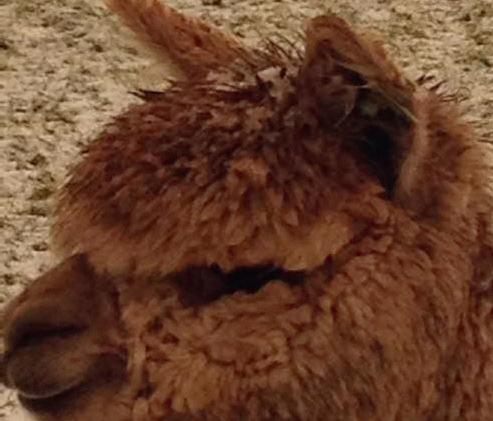




















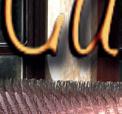


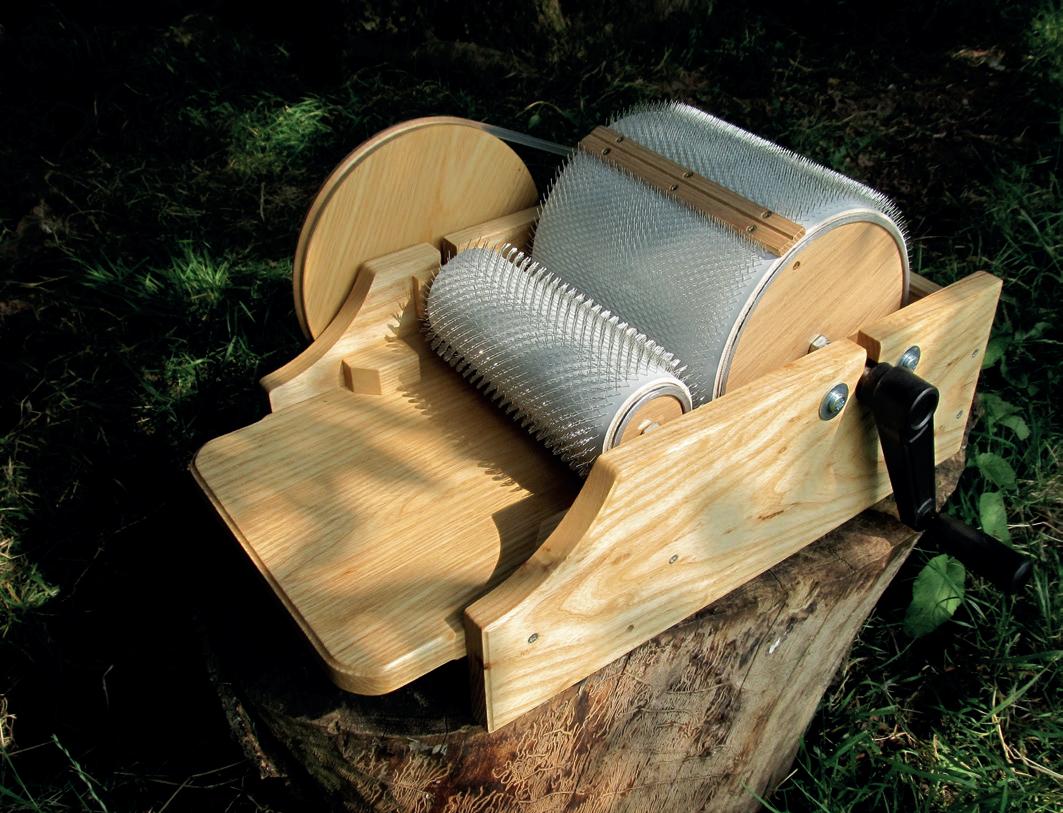








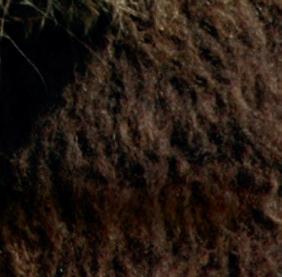


From the comfort of their smallholding in sunny North Devon, David Chidgey and Jack Smellie turn alpaca fibre into sumptuous, thick rugs. In this short article they provide a snippet of what motivates them, describing a little of the process along the way.
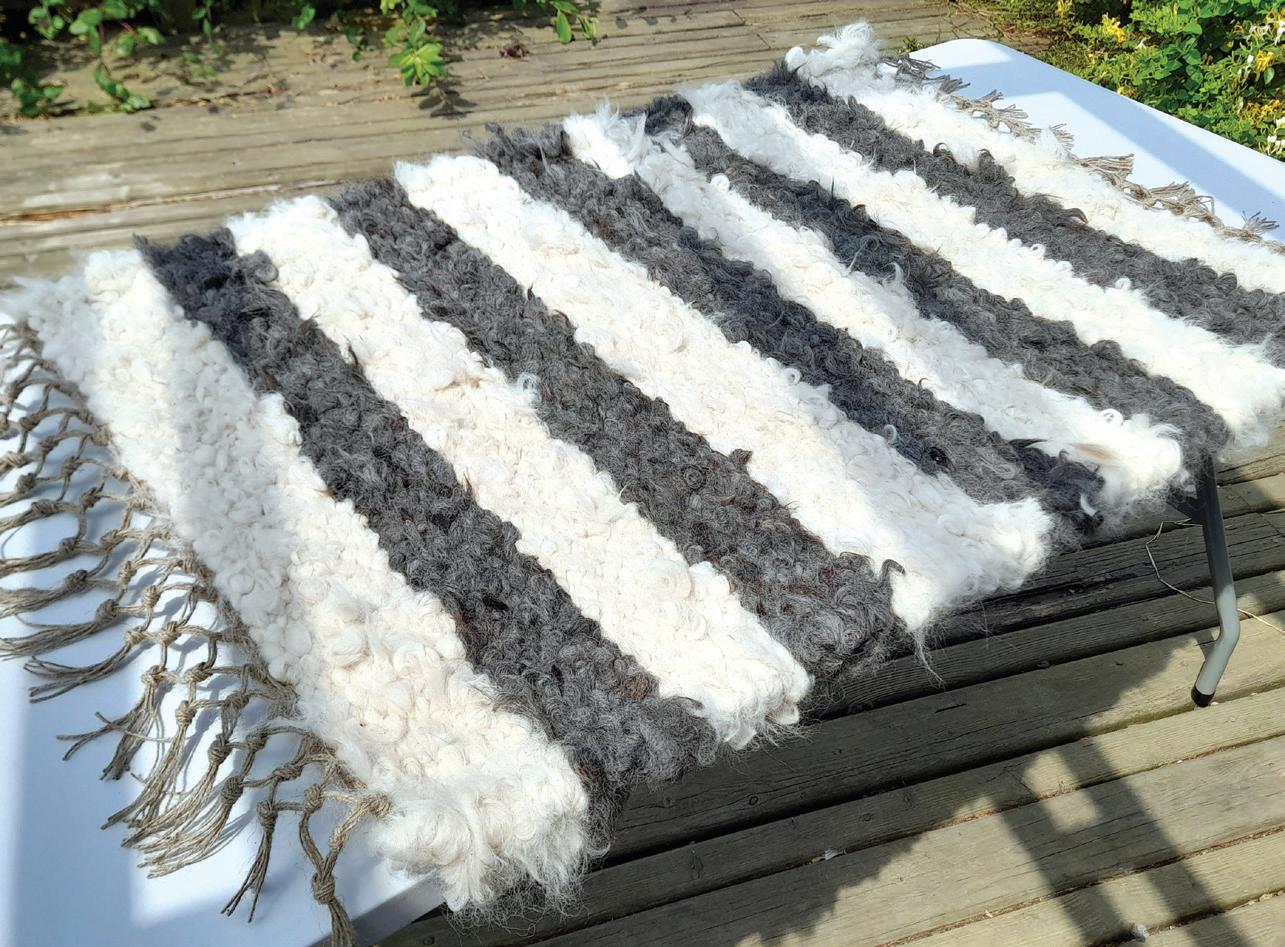

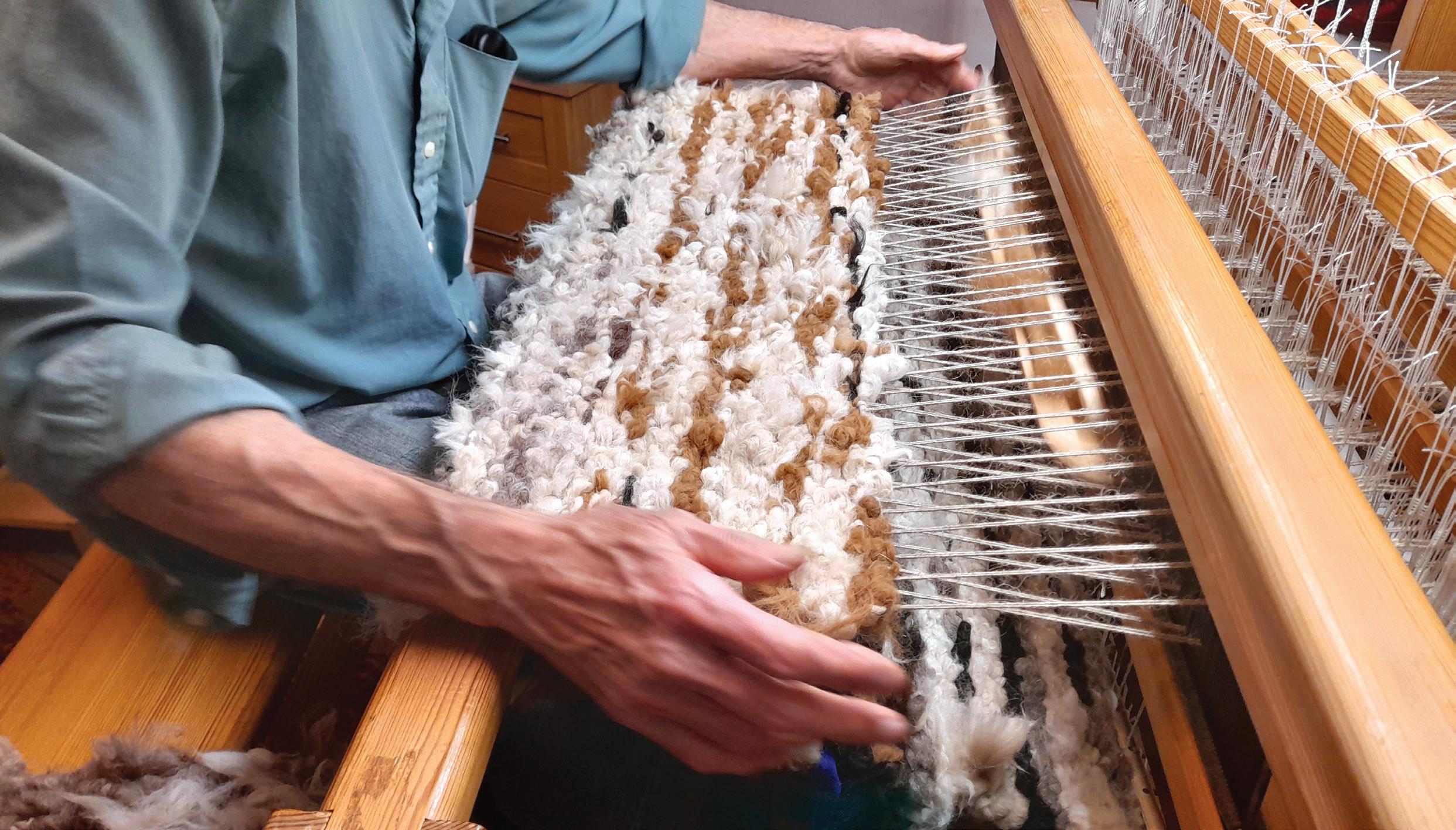
Amessage arrived during the summer asking, very politely, if we would be able to ‘do something’ with a few huacaya alpaca fleeces. No problem was the reply, and a date was agreed for the client to drop them off. Little were we to realise that a ‘few’ alpaca fleeces meant six dumpy bags full, most of which had been stored in an old barn, and over half of which was more than two years old.
Experience has taught us that fleece which has been poorly stored more than 18 months old may have moth eggs and/or smell musty – not something we would like in our spinning/weaving room, and not really something that can be effectively cleaned to be made into rugs, blankets etc. Current year’s wool, on the other hand, is frequently a delight to work with, and we managed to produce four large rugs for this particular client using a gorgeous array of colours from greys to whites to browns. Alpacas do of course, love to roll and so get covered in brambles (ouch), blackthorn (ouch and b*^%er), wood chip, straw etc and all this VM (vegetable matter) needs carefully removing before any thoughts of setting up the spinning wheel and loom. One set of fleeces we received had an eight inch length of barbed wire tangled in the wool.

Experience has also made clear that not all shearers are aware of the difference between firsts and seconds, or to keep the sheared fleece as clean as can be as they shear. However, unlike sheep wool, alpaca wool ‘holds onto’ the dirt less (no lanolin in the fibre) and, once most of the VM has been removed, is easily washed. We use EcoVer products to hand wash the fleeces, environmentally friendly and kind on our hands.
We spin the wool using our Ashford e-spinner and depending on the fleece/client requirements, may spin just firsts, just seconds or combine the two. Each set of fleeces brings different challenges and opportunities, enabling us to create yarn which is tailor made to the client’s wishes.
We weave the spun wool into rugs on our old but delightful Glimakra Ideal loom, using linen for the warp threads. The linen is grown and processed in Belgium, and we believe is rather more environmentally friendly than cotton, both in the growing and air miles needed. When woven the warp ends are knotted, fluffy bits knapped, label sewn on and then final testing. Standing on the finished rug in stocking feet gives the ‘wow’ factor – measured by how long we want to stay standing, sitting, contemplating…
Winter evenings spent spinning and weaving in front of our wood burner are an utter joy, in the summer the shuttles go back and forth to the accompanying sound of bird song through the open windows.
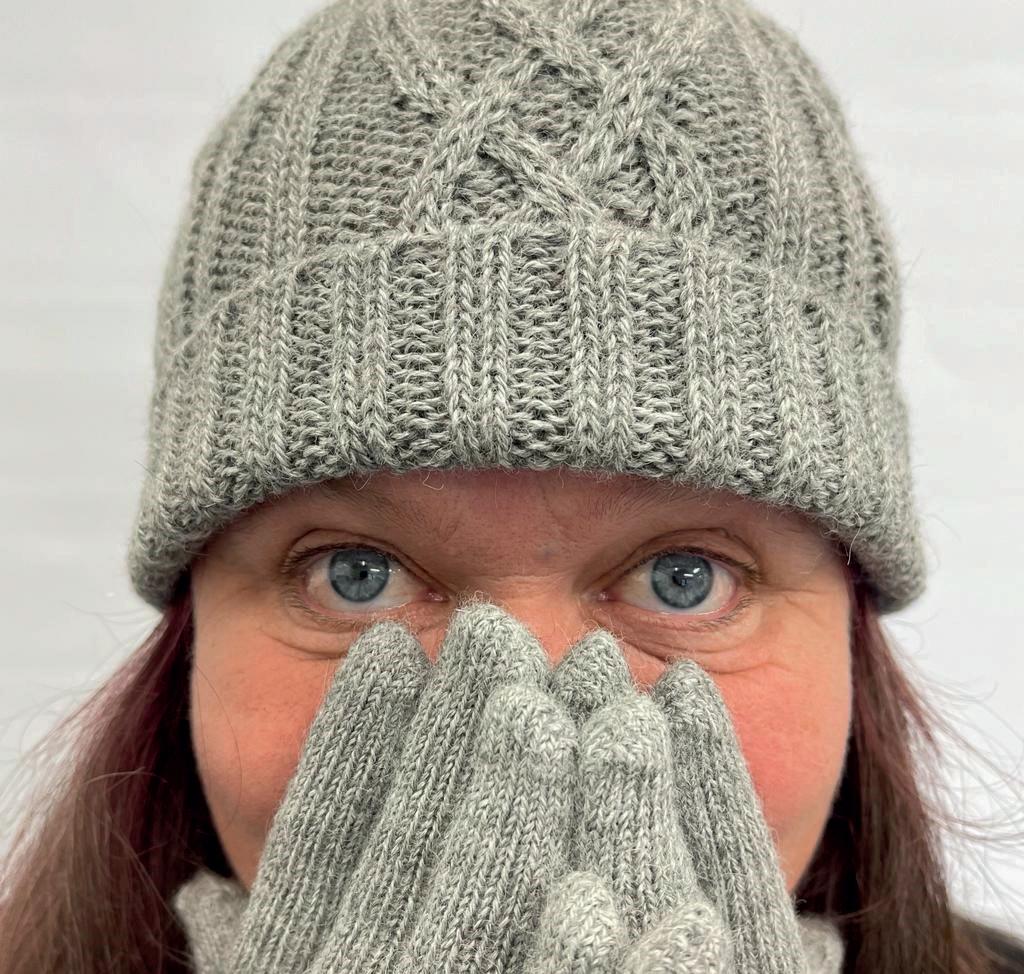
Our hand woven rugs now adorn floors and walls in numerous counties all over the UK and are placed in front of fireplaces, used to meditate and practice yoga, cover massage tables and the floors of glamping pods, hang on walls, and for some, bring fond memories of alpacas no longer alive. And, we have photographic evidence of cats and dogs snoozing their evenings away on them too.
As of the time of writing David and Jack have six alpacas (five Huacaya and one Suri/Huacaya) and ten sheep – all kept for their fibre and to entertain with their antics. They also have eight rhea (soon to be joined by a few emu), chickens and ducks, seven setters and six cats.

If you would like David and Jack to turn your alpaca fleeces into rugs, contact them via the website where you can also see more examples of the rugs they make (they do sheep ones too) paper-plane www.relaxedathome.org.uk


"We love taking delivery of all these different fleeces and turning them into rugs that truly celebrate the animals, as well as providing a long lasting emotional connection for their owners. It’s both inspiring and humbling."
Last year, Art of Fibre created two main options for testing fibre. One is our ‘Certified Alpaca Test’, the other we called ‘Standard Wool Test’, with the wool test being the much cheaper option. For those who produce alpaca fibre, the obvious question is what makes alpaca testing different to wool testing and why is it more expensive.
While the answers to these questions might illuminate the reasoning behind the different types of testing and their respective prices, they also provide an insight into how alpaca fibre compares with sheep wool in terms of their end use. In other words, which fibre is more beneficial to the person who wears or uses it. On this point, there are upsides and there are down sides for alpaca fibre.
The first significant difference would come as no surprise to breeders who have attended any of our fibre workshops. Both alpaca fibre and wool grow as small clusters of fibres which are a consequence of their development from clusters of fibre follicles found under the skin. The clusters of fibres are called
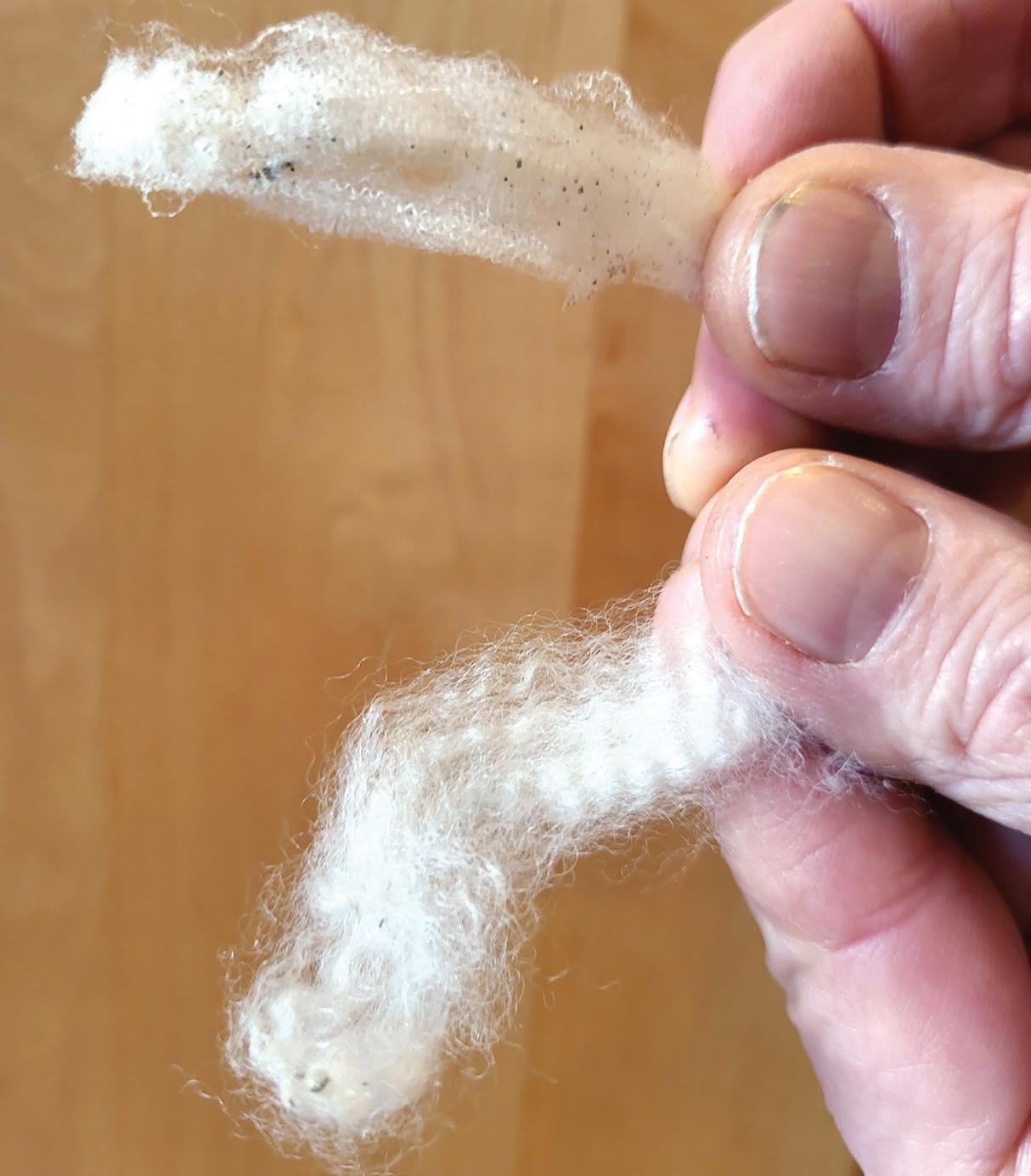
‘fibre bundles’ or ‘staples’. The range in diameter between the finest and widest fibres within a staple are generally similar to the other staples located over the usable areas of fleece on the alpaca or sheep.
The degree to which the fibre diameter varies within these staples has a profound impact on the ‘handle’ or softness of a fleece as well as having a major impact on the end-product.
The downside for alpacas is that the range in diameter of fibres within fibre staples typically varies between about 25 to 30 microns whereas fine wool staples typically vary between about 15 to 20 microns.
As far as fibre testing is concerned, given this higher degree of variation with alpaca staples, we need to ensure a higher number of fibres are tested compared to testing sheep wool to ensure we adequately capture a representative number of measurements to provide a statistically valid set of data. In other words, we need to prepare and place about twice the amount of alpaca fibre on the testing device compared to testing wool.
The main issue with this high degree of variation is obviously its impact on end-product. The saving grace is that this trait is highly heritable and experience has shown this problem can be significantly improved through genetic improvement, although it does take a number of generations to reduce the range of diameters of fibres in a fleece.
The grease or lanolin film that forms on the fibres also differs between alpaca and wool (referring to the film as ‘grease’ on alpacas is contentious, but I will run the gauntlet and call it that for this paper).
Typically, sheep wool has about 1.5 to 2.0 microns of lanolin film on the fibres. On the other hand, Huacaya fibre has about 0.6 to 0.9 micron of grease type film whereas Suri fibre has about 0.3 to 0.5 micron of ‘grease’ film.
Magnified images of various fibres showing the low height of the alpaca scales (cuticles) compared to sheep wool
These two samples indicate the greater flexibility of alpaca fibre (bottom sample) compared to sheep wool (top sample)–both samples are similar diameter
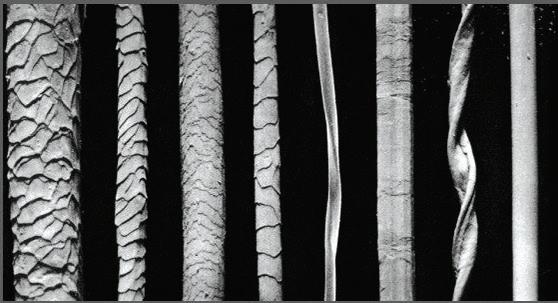
The differences in the grease type film over the fibres needs to be taken into account when fibre testing as we need to provide a ‘clean’ test result void of any impurities such as lanolin/grease. The factoring in of the grease film when testing sheep is by way of a default setting on testing devices that deducts the width of this film from a ‘greasy’ test. With alpacas, it is a matter of factoring in the results of trials that Art of Fibre have undertaken to ensure we arrive at an accurate clean test result.
This difference between the grease film on alpaca compared to sheep fibre has an indirect impact on the soft handle of the respective end-product. The grease film is correlated with the height of the fibre scales or cuticles. The lower scales on alpacas, particularly Suri fibres is a clear upside for alpacas as low scale height results in a softer and more luxurious feel when compared against wool of the same fibre diameter.



A characteristic of alpaca fibre that many breeders might not be aware of is its low RTC. The harshness of fibre end-products is impacted by the degree to which fibres resist any compression against the skin or their ability to be flexible when felt against the skin. A high degree of resistance or inflexibility means the fibres will generate more of a prickle sensation than low resistance or greater fibre flexibility.
I might add that while the technical application of RTC towards alpaca fibre and wool fibre is yet to be resolved, (Xin Liu, Lijing Wang, and Xungai Wang, Resistance to Compression Behaviour of Wool and Alpaca, Textile Research Journal, Volume 74, Issue 3), there is no mistaking alpaca has more flexibility when constantly handling the two fibres.
None-the-less, when preparing fibre samples for testing, we find that sheep wool is easier to place on the testing equipment as the sample retains its shape due to this inflexibility compared to alpaca fibre (of the same micron) that tends
to have a mind of its own and hence requires a bit more effort to ensure the fibres are aligned and placed correctly on the testing device.

A significant upside of alpaca fibre’s low RTC compared to wool is that alpaca is more likely to feel soft against the skin compared to wool of similar diameter.
My hope in preparing this paper is that breeders develop an understanding that alpaca fibre cannot be simply lumped into the same box as sheep wool, both in terms of processing the fibre, but also when testing the fibres.
A final comment is that while the intrinsic qualities of alpaca fibre also have other benefits such as body temperature retention, these traits have little impact on the testing of the fibres and deserve a paper specifically on this topic.

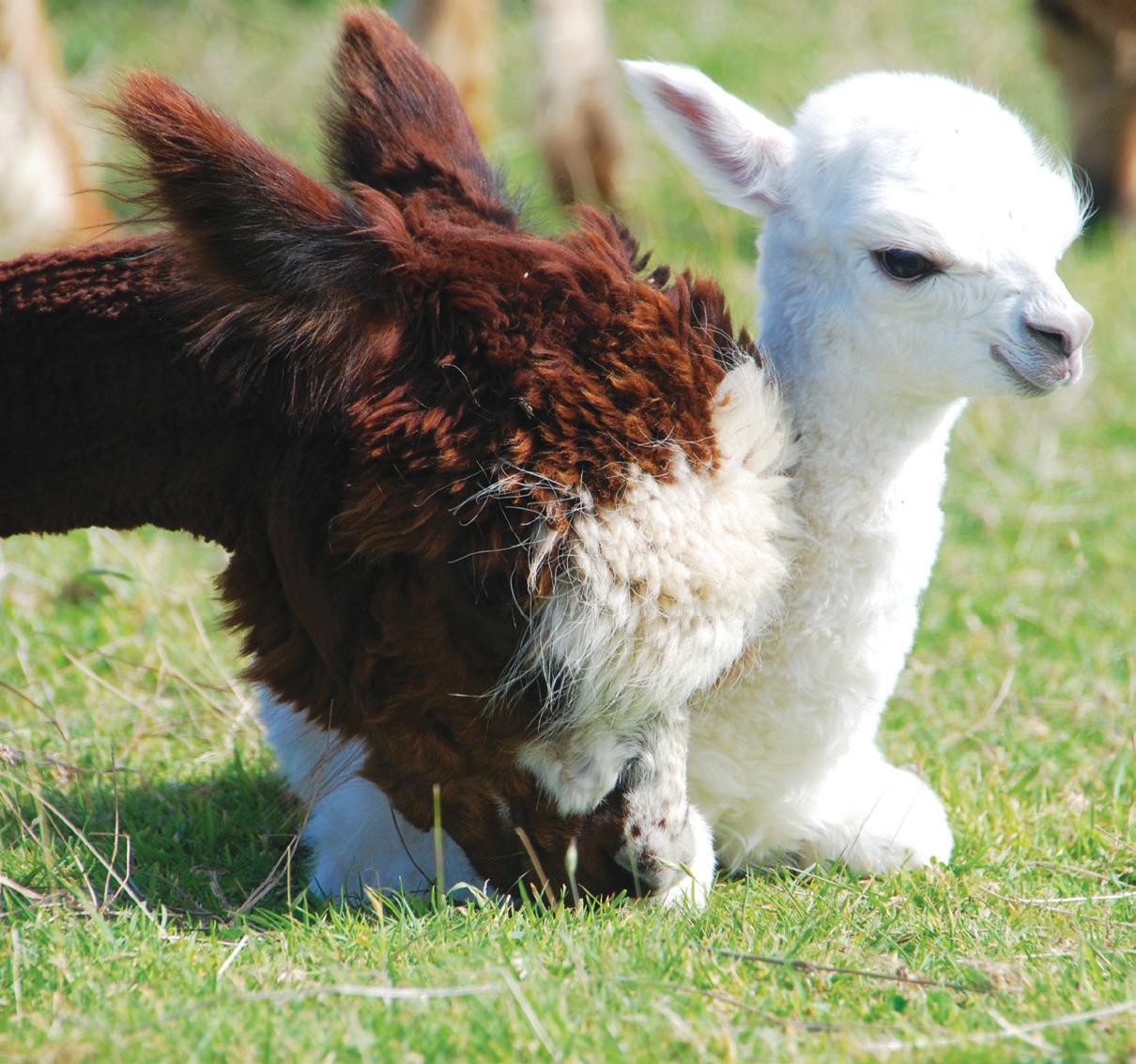

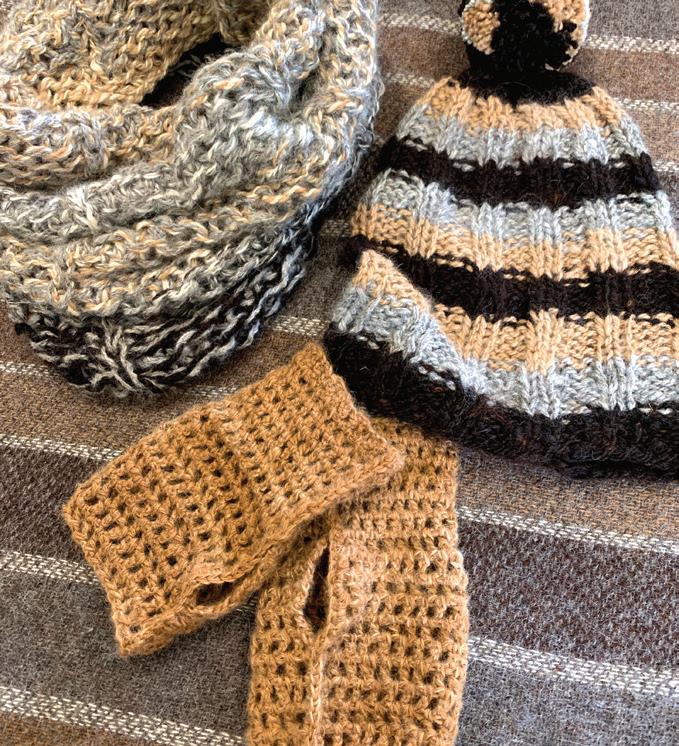


Mother of all, maidens, footman, lazy Kate, niddy noddy, orifice, rolag, nostapini and umbrella swift are all names relating to the wonderful craft of hand spinning. This ancient activity is in our DNA, spinning a yarn using a drop spindle is thought to be one of the earliest skills using one of the oldest tools.
Stone spindle whorls dating back to 5000AD have been found in the Middle East, while evidence of these whorls – the weight attached to a stick which makes up the spindle – have been found across all continents and across all cultures. In 1030 the spinning wheel was invented in the Islamic world, by 1090 the spinning wheel was being used in China. It wasn’t until the 13th
century that the spinning wheel was first used in Europe and India.
For me one of the deep attractions to hand spinning is this history and that it binds all cultures together. I have been spinning for well over 30 years and it continues to be relaxing, creative, artistic, demanding, technical, satisfying and most of all mindful.
I began spinning in the mid 1980’s, my first proper job was on a city farm in South London. As well as looking after rare breed farm animals I was also responsible for visiting school groups. During my second week in the job someone presented me with an old spinning wheel, showed me in five minutes the rudimentary skills of spinning. I was told to take it home and practice as my first school group of 34 children
would be visiting in a weeks' time and the purpose of their visit was to learn about sheep and where their clothes come from! I learnt enough to give them a very basic demonstration and just about stayed one step ahead of the class.
The rest however is history, I was always arty and crafty, and I fell in love with spinning and all textile related skills, from that day to this spinning has been an important part of my life.
It was during my time at Deen City Farm that I discovered alpaca fibre, I was given 100g of black Peruvian alpaca tops. It was heaven to spin, there were very few alpacas in the UK at that time, so I had to go to the library and learn about them. I decided then that one day I would have my own alpacas; it has taken 25 years but in 2013 that dream came true.
Over the years I have taught hundreds of people to spin and teaching someone to spin, and seeing them learn this skill, is amazing. I always start beginners with alpaca fleece (in my experience alpaca fibre is perfect to learn with) and a drop spindle before moving on to a spinning wheel. Spinning is straight forward to learn and practice will improve your skills, you can then do as much or as little as suits you.
Drop spindles are beautiful and complex with lots of different shapes and weights, each spindle designed to spin a different yarn. One of my treasures is a Turkish drop spindle made out of two thousand year old bog oak, I have a bit of a collection of various drop spindles.
Spinning with a drop spindle is slow and gentle and has the advantage of being extremely portable, great for taking on holiday or demonstrating at shows or events. All the little mini skeins I end up with I either crochet into granny squares or I weave on my back strap loom. Spinning alpaca on a drop spindle and weaving with a back strap loom gives me a real feeling of affinity with the talented Peruvians with their ancient traditions working with the ‘fibre of the gods’.
There is nothing better than taking responsibility for the whole fibre process from field to finished garment; slow textiles are
becoming a thing for the future and this idea is very much part of our sustainable ethos. This includes making breeding decisions, care of our breeding herd, ensuring the best possible start for our newborn cria, shearing our own herd, skirting and sorting fleeces, choosing some to keep for hand spinning others to go to be mill spun then using the yarn for knitting, crochet and weaving, hand dyeing some skeins with plant dyes. Knowing each and every alpaca and being able to tell people the history and story behind every skein of yarn, every hat or pair of socks is a privilege and gives such a strong connection and understanding of the whole process.
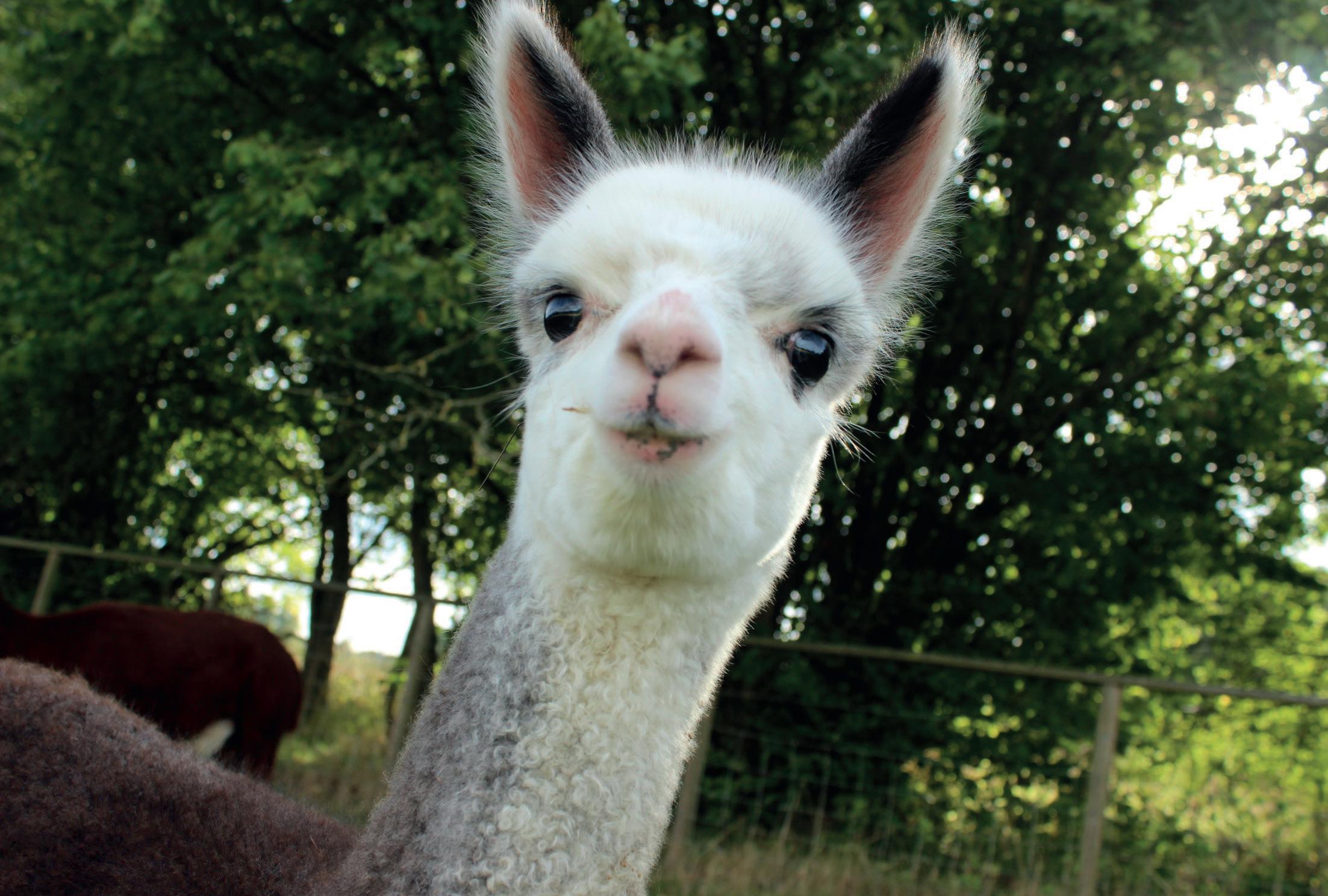
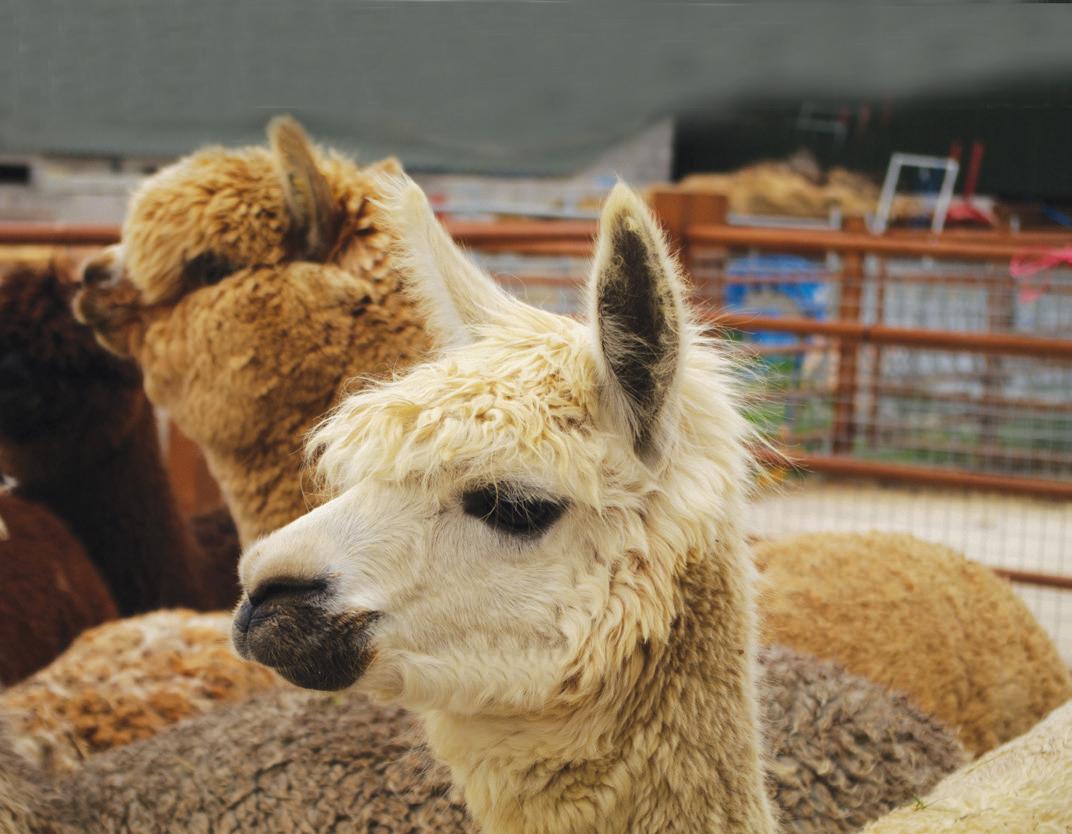
Hand-spun yarn looks and feels like nothing else; it is alive, unpredictable and unique. Spinning can be highly technical with different fleece preparation tools like carders, flick carders or a drum carder. Followed by the actual spinning of the yarn, considering wraps per inch, ratios and drafting techniques, thickness of yarn, design and meeting pattern requirements. Plying, multiple plying, Navaho plying, core spinning, adding slubs, adding beads, art yarns, the possibilities are endless.
However, spinning can also be a simple quiet and uncomplicated activity. I love spinning a favourite fleece straight from the shearing bag and letting the fleece spin in the way it wants to –at times like this I don’t have a plan or a design I just sit and spin!

Isuspect that most people decide to keep a few alpacas because they are such unique animals - with their beautiful faces, their inquisitive nature and their gentleness. However, for me, the decision was not only based on these reasons, but also on the fact that each year they produce the softest of fleece just asking to be made into something wonderful.
I have always been a maker, wanting to try out as many new crafts as possible. Having fallen in love with a beautiful dark brown sheep fleece at a smallholder fair, I taught myself to spin and then discovered wet felting – a very addictive way to use fibre not good enough for spinning. This all introduced me to the sheer pleasure of working with something natural and sustainable. Yet for me, there was still something missing; I needed to be part of the whole process and that included looking after the animals who were producing the fleece.
A search of the internet found alpacas and then, of course, nothing else would do. We only have space for three and, when it came to choosing the individual alpacas, the decision was certainly based on the fleece, both the colour and the quality, resulting in Clement who is white, Fergus who is black and Norman who is brown.
The first time I buried my hand in an alpaca fleece, I was left speechless, and this is often the same response we get from people at craft fairs when they feel it; it has been described as ‘like feeling air’, ‘like
candy floss’ or ‘like feeling nothing”. But there are many other reasons why I would always choose to work with alpaca:
• Spinning alpaca is a joy; the fibre slides effortlessly through my hands as I spin and produces a soft yarn that asks to be touched.
• The fleece doesn’t have to be washed before spinning as there is no lanolin to grease up the wheel.
• Alpaca fleece loves to be felted. Obviously, you do need to be selective about which fibre you use; the coarser fibre will be more difficult to felt and those pesky guard hairs won’t felt at all.
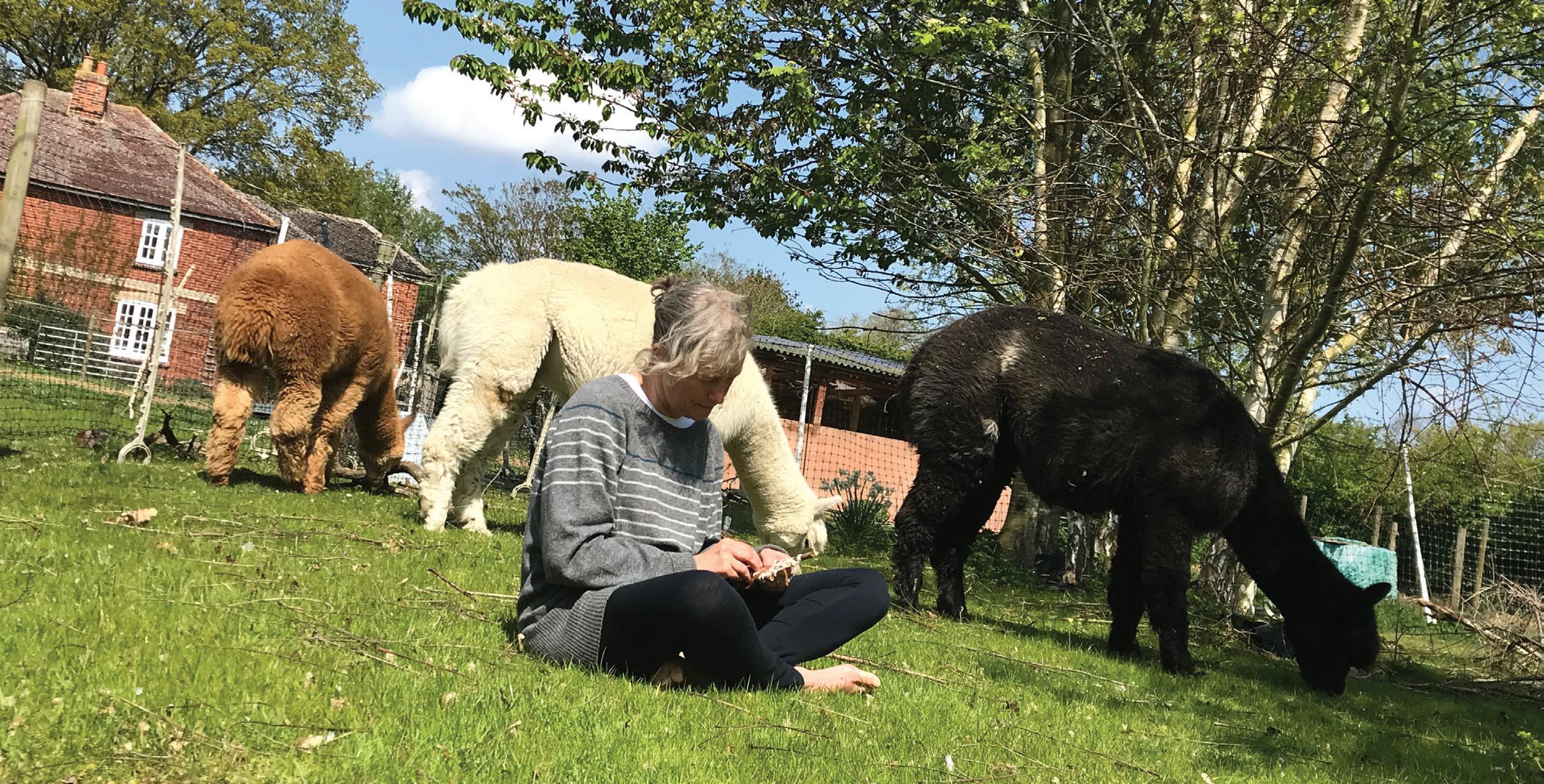
• Nuno felting (felting a light layer of fleece onto silk) is so much quicker and easier with alpaca – the fine fibres migrate through the base material with far less rolling than I had to do with sheep fleece.
• There is no wastage. I use the blanket for spinning and Nuno felting and the neck and belly for felting and the rest as mulch in the garden (although some of this disappears for use by the birds in their nests!)
Every piece I make is unique; I am particularly inspired by shapes, shapes created by dark against light. Working with only two or three alpaca colours encourages me to reduce everything down into abstract or simplified outlines. With my felt work, the challenge is to create the design, sometimes based on ancient runes or cave paintings, using individual pieces of yarn.
Despite creating wall art at times, my heart lies in making practical
Clare Kiely from Suffolk Alpaca is an artist who makes felted items from her own alpaca fleece that “warm and touch and your heart”. Keeping alpacas is part of the creative process, as she explains.
items that can be used as well as loved. The irresistible softness and warmth of the alpaca fleece asks to be made into objects that warm and comfort your heart and now I mainly make those items that can be touched, savoured against your skin or held in your hand such as tactile organic pots, delicately light scarves or soft mini pillows.
It is extremely important to me that all my crafting is sustainable, and to that end I use recycled cardboard (and sometimes even branches!) to weave around; old bubble wrap and netting, soap and a towel for the wet felting. In fact, I cannot recommend wet felting enough to anyone who has spare fleece; it requires no specialist equipment just your own energy and enthusiasm to mat the fibres together. It is so versatile, producing a strong thick felt that can be shaped into anything you like - bowls, teacosies, bags, even slippers. Using a template in the middle ensures that the finished item is seamless and requires no sewing together (which I love!).
I love sharing my skills through the workshops I run but bringing other people to our home also allows them to share the joy and peace that comes from spending time with alpacas. Having lived with our ’boys’ for eight years now, I fully appreciate how calming and grounding it is to just be around them.

Teaching adults how to spin, weave or felt with alpaca fibre has shown me how even touching and working with such glorious fleece has a truly relaxing and calming effect on the mind and body. I have also noticed how meaningful the conversations can become while people are doing this and, as a result, I now offer one-to one workshops where being creative goes hand in hand with exploring deeper personal issues. Obviously, there is no doubt in my mind that alpacas are just the perfect animal, offering not only the delight of their presence but also the pleasure of working with their exceptional fleece.
Clare also offers workshops all year round from her farm near Sudbury such as these for March. Check out her website or contact her for more details and prices.
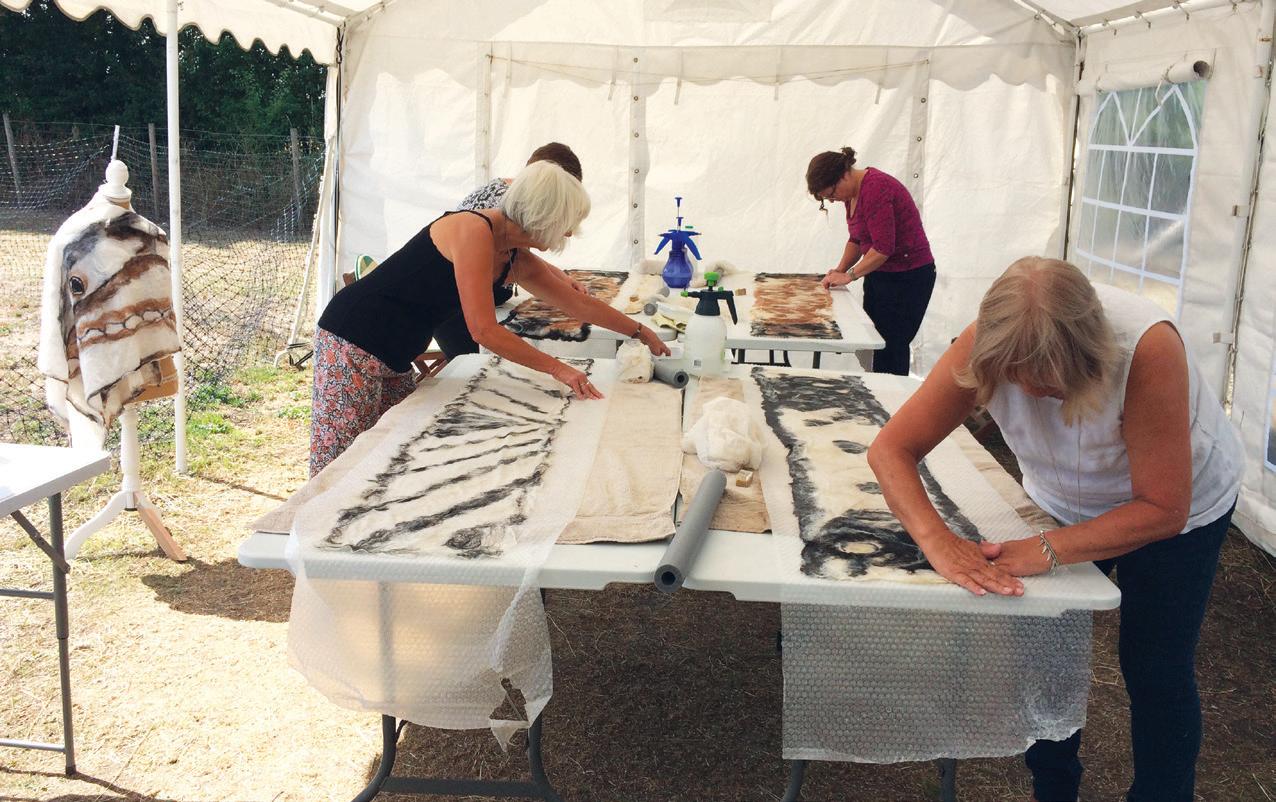
Wet felting


Saturday 11 March 2023: 10.30 - 4pm
Weaving without a loom


Friday 24 March 2023: 10.30 - 4pm
For more information about Clare’s work:
FACEBOOK Suffolk Alpaca
INSTAGRAM suffolkalpaca
�� 01787 371654
paper-plane www.suffolkalpaca.co.uk
Wet felted bowls Nuno felted wrap Examples of weaving Examples of wet felting Branch weaving Nuno felting workshopTony and Hilary Monkcom at Pinnacle Alpacas look back on 10 years of successful breeding.
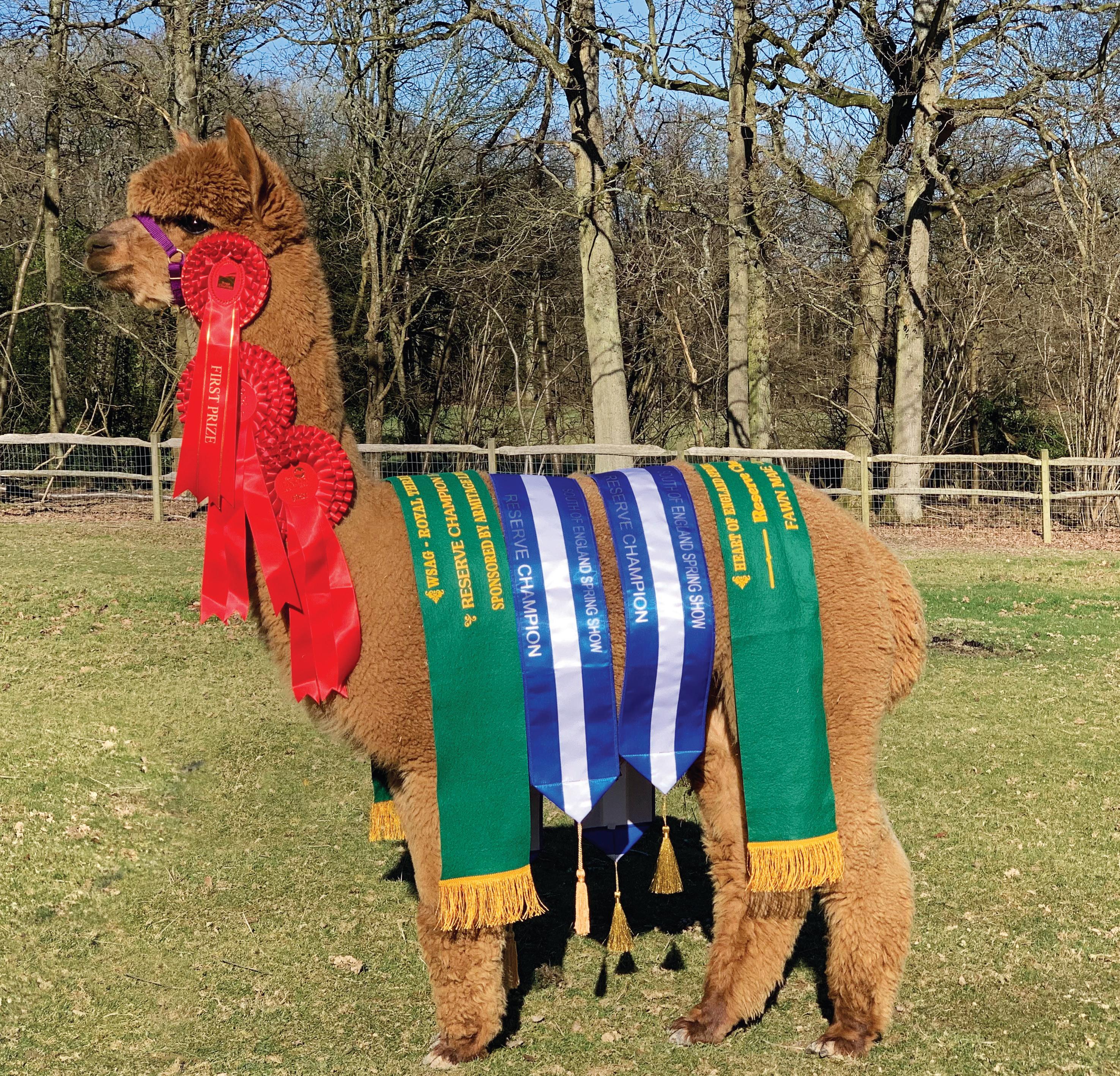 Pinnacle Endurance
Pinnacle Endurance
Despite a global Pandemic, Brexit and all the current world uncertainty, breeding alpacas in the UK is thriving and there is a strong market for quality breeding stock.

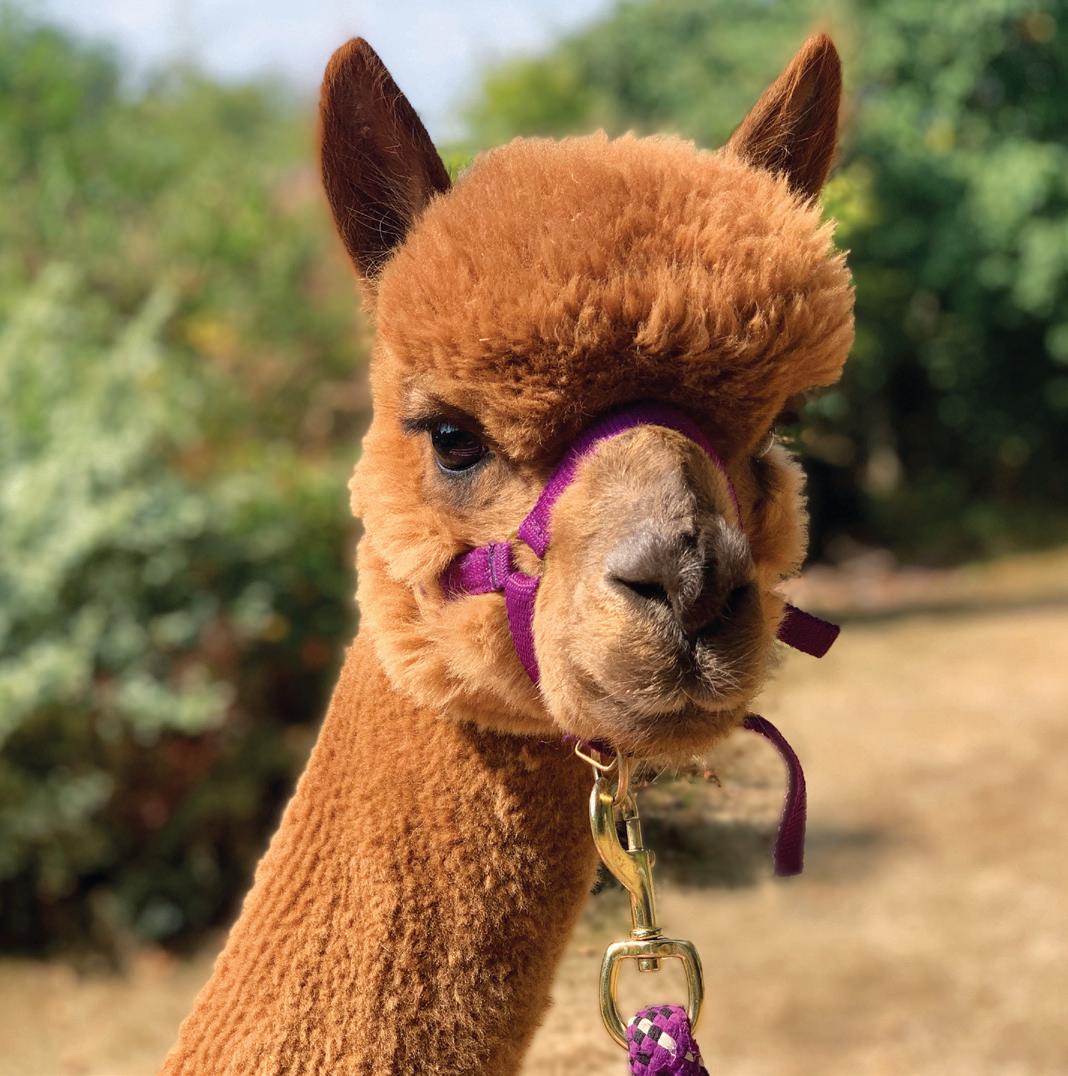

Over the past 10 years, Pinnacle Alpacas have been passionately devoted to a highly focussed breeding programme. Underpinned by a good spread of Internationally acclaimed genetics, every breeding decision is carefully researched and planned, ensuring only top-quality herd sires are selected and used over the elite herd. We look to make a generational gain with every addition to the herd and year on year the layering of genetics, means that each and every animal born at Pinnacle boasts a top pedigree. However, Pedigree alone is not enough and of course each breeding decision also involves pairing and matching qualities, to balance traits and ensure confirmation of the animals is never compromised and the primary fibre characteristics of fineness, density, staple length, uniformity of micron, together with uniformity of colour, brightness and fineness of handle are maintained. Like all breeders of quality, we continue to strive for the ‘ideal alpaca.’ For us, maintaining the fibre characteristics throughout their long lives is crucial. Alpacas are bred for their fibre, so it is no good having what appears to be an ‘ideal’ junior/intermediate that subsequently blows out as it matures into adulthood. We need to be producing animals that are giving quality fibre which they can maintain well into their senior years. In 2014 we imported Australian genetics into our herd to bring in another layer to the mix with co-owned ‘EP Cambridge Wildfire of AUK (Imp)’ who is a stunning Windsong Valley Fire Dragon son and Wildfire has certainly made his mark on our herd and indeed in the EBV programme with his progeny too.
We hear many people saying that looking back they often regret their initial purchases, but we did a lot of research and were very careful with our initial selection of animals and can hand on heart say that we have never regretted any of our purchases. Our top tip would be to do your homework
and go for the best your budget will allow. The old adage that you cannot make a silk purse out of a sow’s ear certainly rang clear to us as the dams undoubtedly influence 50% of their resulting progeny which is why there is recognition of dam’s progeny as well as sire’s progeny in the showring.
As we have built our herd, we have held on to animals to ensure we could see exactly what the dams and sires are doing within the breeding programme, and it is exciting to be releasing some of our pregnant females, younger females due to be mated and Champion stud males to further others in their breeding programmes. Our remaining stud males are continuing to make their mark as their progeny replicate their Sire’s show successes.
Participating in the showring over the years has been immensely rewarding, both at Regional and National Level and we have achieved Supreme Champions and multiple Champion and Reserve Champion awards across the herd with both male and females in Halter and Fleece shows alike. In 2021 we took over the organisation of the South of England (SoE) Show at the end of the Spring Live Show and in 2022 ran our first SoE Halter Show which was a resounding success and delighted the public, Exhibitors and the South of England Agricultural Society alike. The Spring Live South of England Show was attended by near on 18,000 people over the course of the weekend and so is a great opportunity to showcase British Alpacas. We are looking forward to another successful SoE Spring Live Alpaca Halter Show this year, judged by Mr Tim Hey.
We are regularly asked by people, “Why are alpacas bred, what’s their purpose?” We knew we needed to showcase our British alpacas, rather than relying on imported ‘end products’ and so we commissioned our own Collection of ‘Exclusively Pinnacle’ 100% alpaca fashion scarves. Our fibre was processed by East Anglia Mill who were highly complementary of the quality of our fleeces and the beautiful yarn they produced was woven by Bristol Weaving Mill into the range of scarves for our three ethically produced >> Continued on next page
collections. These have been so well received by all who have purchased the scarves and at the National Show last year, one of our scarves from the fawn and brown collection was awarded a first in the Fibre Zone.
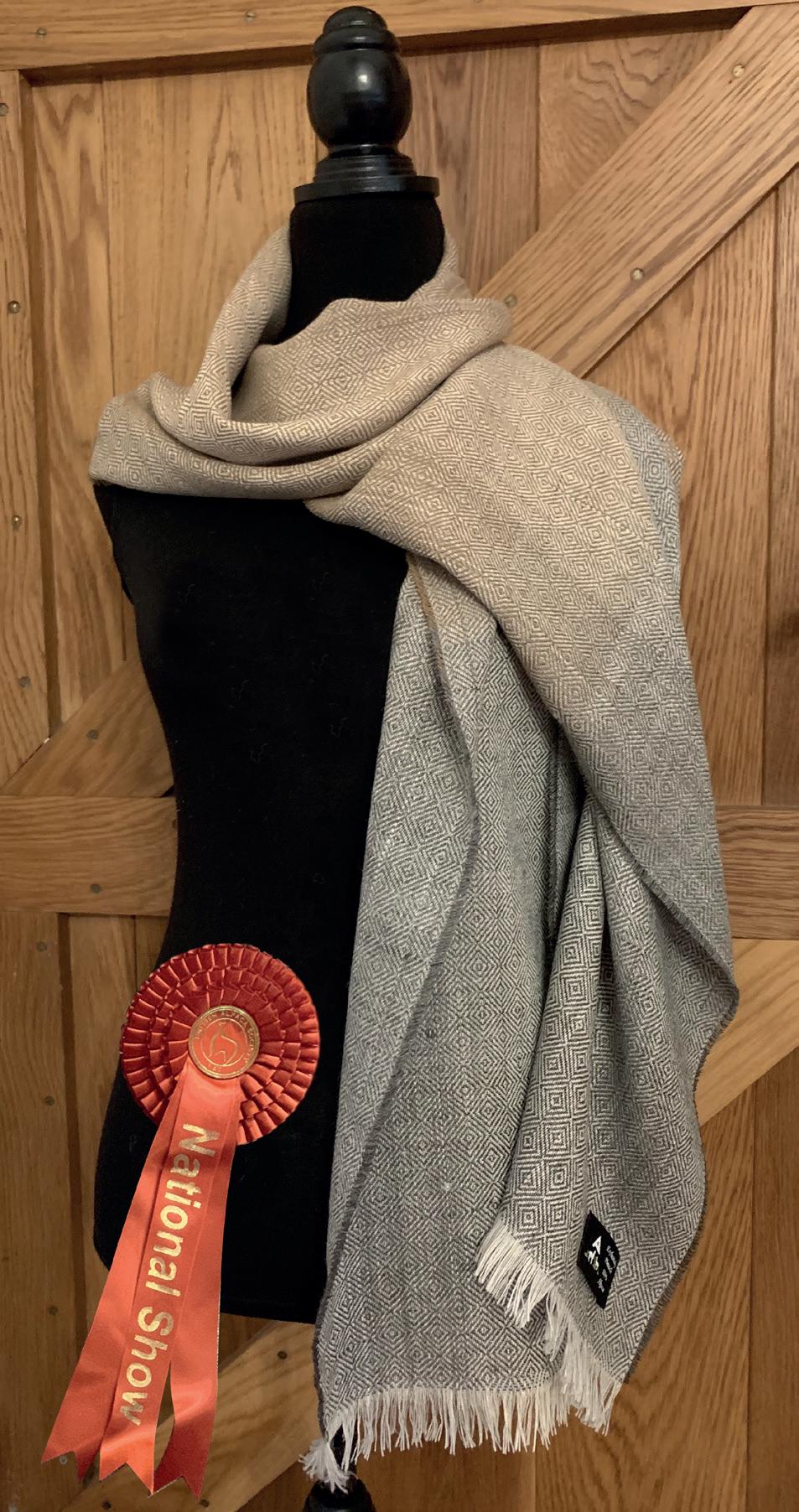
As breeders, we really are passionate about ‘all things alpaca’ and enthusing others when teaching at our BAS Affiliate Training courses, or when asked to provide onsite training to existing owners struggling with some aspects of alpaca husbandry. The welfare of our animals and indeed all alpacas is crucially important and whether it is new, or prospective owners, or prospective veterinary students, we are keen to advise and demonstrate correct handling. We halter train all our animals as a matter of course at weaning, whether they are to be in a show team or not as it’s a skill they never forget.

In 2021 we were delighted to welcome a group of prospective vet students to Pinnacle and Dr Ami Sawran BVSc CertAVP PGCertVPS PhD MRCVS with veterinary students from Surrey University and some of her fully trained colleagues from Westpoint Farm Vets to an afternoon of learning. When the fleet of Westpoint vehicles turned up, including a Westpoint ambulance, we did have to reassure neighbours that nothing untoward was happening, just a chance for some relaxed training! The vets were thrilled to be able to meet the alpacas and practise finding veins on some very obliging, calm females. The vets explained that they had only experienced one day of camelids in their five years of training, so being able to see the farm layout and talk about handling techniques and get to understand the alpaca herd mentality and behaviour and how and why we handle animals as we do, all made for a great afternoon and a hugely positive experience for them.
One thing for is sure, there is never a dull moment at Pinnacle Alpacas. Our alpacas do earn their living and as an adjunct, we are regularly booked to take our enchanting alpacas to weddings, where there are always chances to answer a myriad of questions about alpacas, as they enthral guests and wedding parties alike.


On 1 May back in 2021 we had a great day at Pinnacle with a huge 60+ film crew from BBC III’s Back to Life Series 2. They couldn’t have been more respectful of the animals as we briefed the crew on how to behave around them, so they would get the best out of the animals. We were on hand throughout the day to handle the animals and the producer and director were thrilled at all the footage they were able to obtain and how brilliant it was to work with trained animals. At every moment between takes the cast and crew were all taking selfies, but of course we then had to keep everything entirely secret until it was screened later in the year, although our animals had made an incredibly positive impression on all who were present!
We consciously chose not to breed any of our females in 2021 and our 2022 summer was therefore deafeningly silent on the cria front. Just as well as we were both struck down with Covid-19 when we would have been right in the midst of birthing! However, 2023 will be a bumper year at Pinnacle as we excitedly await some new outside genetics over some of our top females. In the meantime, we have both continued our BAS training programme and commenced on the pathway of judge training.
In November 2022, Tony was elected to the BAS Board to serve all the BAS members. It’s a huge responsibility but an important role to have taken on. When we were first looking at choosing our alpacas, someone did warn us that they would take over our lives. I think they were right!






Inever envisaged that as a retired academic and no spring chicken, I would fall head over heels in love with four gorgeous ladies. Moreover, my wife of 42 years approved of my infatuation. This did not occur through a dating app but through my involvement with Camphill School at the Murtle Estate near Aberdeen in Scotland. The ladies in question are our four Huacaya alpacas, Sheba, Oosha, Portia and Ophelia.
At Camphill School Aberdeen (CSA), we aim to transform the lives of children and young people with learning disabilities and very complex additional support needs. Our unique approach integrates education, lifelong learning, expert care and therapies as part of a sustainable shared living community.
Currently, we support over 100 young people aged 3 to 25 years to grow in confidence, skills and independence – helping to reach their fullest potential. Our young people have learning disabilities with complex additional support needs combined with multiple diagnoses, placing them on the acute end of the disability spectrum.
Set over 50 hectares of open space and peaceful woodlands, our unique model enables our young people to thrive in a safe and nurturing setting. We offer a range of vocational workshops to develop life skills,
achieve certified awards, provide meaningful work and add therapeutic benefit to support towards independence and the transition to adulthood.
Three years ago, the ladies joined our care farm. Sheba (a fawn) and Oosha (a mahogany) came as a pair as did Portia and Ophelia (both white). While they settled into their accommodation and got to know each other, we started to get to know them. It quickly became apparent that each had a distinct personality. Sheba is the regal matriarch whereas Oosha is the feisty wingman and lookout. Portia is our solid, unflappable foot soldier and Ophelia is the aloof posh girl. Although occasionally there were squabbles, the ladies have formed a close-knit group and do not like to be separated!
The ladies accepted haltering very quickly and now walk around our leafy campus being led by the students. It quickly became apparent that these walks of about an hour had a profound and indeed transformational effect on many of the autistic students. As described by Wiepke Busch, our Learning For Life Day Services Manager:
“While walking an alpaca there is a feeling of calm, it can centre a person and help reduce anxiety. The slow movements and elegance of the alpaca's help teach our young people to be present in the moment

and follow the lead of the animal. Most of our children and young people love walking them and can't wait to get back to it when they need a break on the timetable to give others a go. They really are such a great addition to the school and make a world of difference to staff, students and passers-by.”
Similarly, Ben Abel, an Assistant House Co-ordinator in one of our residential houses comments:
“I have attended alpaca walking on a weekly basis with a number of the students from our house, all of whom have varying abilities. The benefits of these sessions to the students were significant. The students I supported visibly enjoyed the responsibility of leading the alpacas and at the same time benefited greatly from the calm, quiet approach required to ensure the alpacas weren’t frightened when being around us. Observing how the students adapt their behaviour and approaches when with the alpacas was wonderful to see, clearly understanding the importance of a peaceful atmosphere.”
The ladies also enjoy the daily treks although their enthusiasm may also be partly ascribed to the treat of carrots that the students give them at the end of the walks!
The young people also gain skills by participating in the health and welfare of the ladies by helping to regularly muck out their shed, ensuring that the hay bags are replenished, the water is refreshed, and the muesli supplement is provided. Possibly a less popular task is poo picking which involves collecting the berries from the midden in the field. These are used to make a liquid manure for use in our organic garden. This involves filling up hessian sacks which are then suspended in 1000l tanks of water. Once the colour of “builders tea” the liquid is used on our vegetable patches. Our head gardener describes it as “rocket fuel for plants”. The residue in the sacks also makes a highly effective mulch around our fruit trees.
The ladies are sheared in June and the fibre is used by children and young people in our weaving and felting workshops where it is incorporated into a wide range of craft products including clothing, tapestries and belts.
Alpacas are reputed to keep foxes away from chickens and lambs and our ladies share a field with our free-range hens. They have not exactly covered themselves in glory in this respect (a fox caused carnage a couple of years ago to our hens). In their defence, I have witnessed Oosha and Portia chase a fox out of their field in the early morning so a role as flock guardians should not be entirely discounted!
Another somewhat unexpected benefit of the alpacas has been the interest and curiosity shown by members of the public. This also increases awareness of the work and aims of CSA. Not only do our ladies appear on open days and PR events but also figure prominently in some of our fundraising initiatives! We are currently raising £10 million over 10 years to increase our capacity by 60% ensuring more young people have access to our services and alpacas.
The introduction of our ladies to Camphill School Aberdeen a few years ago has been a huge success. We knew little about good welfare and care practices when they first arrived and realised that expert advice was essential. Our ladies have a detailed health plan from a camelid specialist at a local veterinary practice and I am particularly grateful to Mabel from Highland Alpacas for freely sharing her extensive knowledge and expertise (and feeding me lots of tea and cake!).
Our plan now is to expand our herd so that more of our young people with additional support needs can experience the benefits of being part of our alpaca world at CSA.
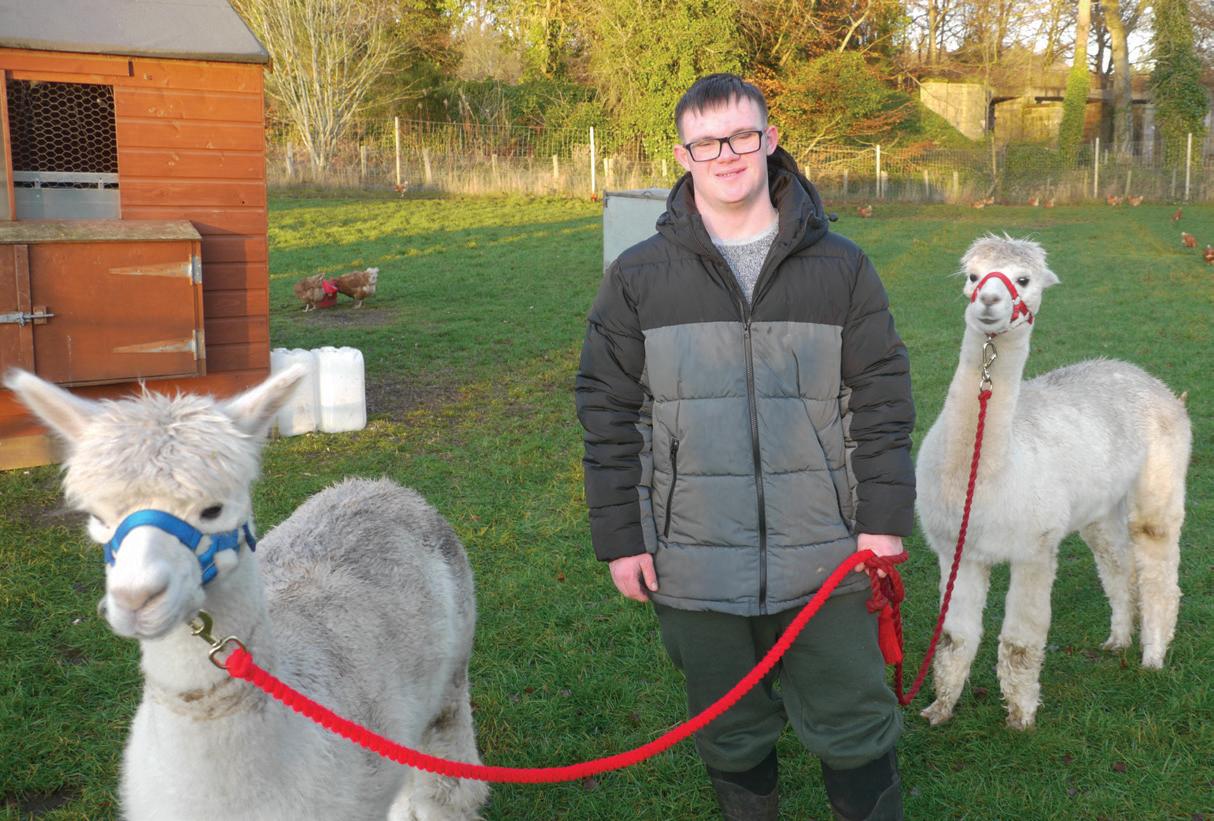
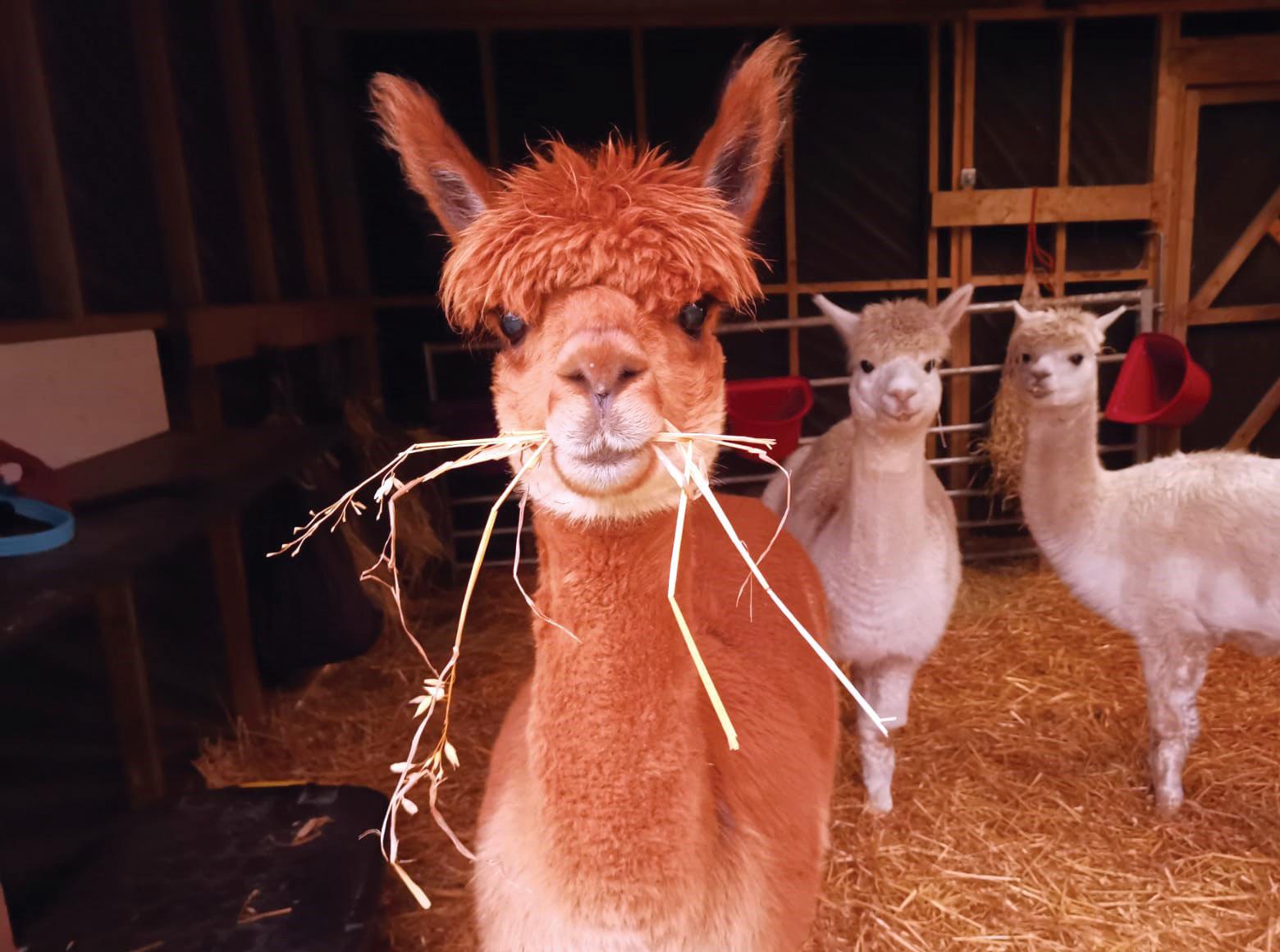

paper-plane www.camphillschools.org.uk/capital-appeal paper-plane www.camphillschools.org.uk
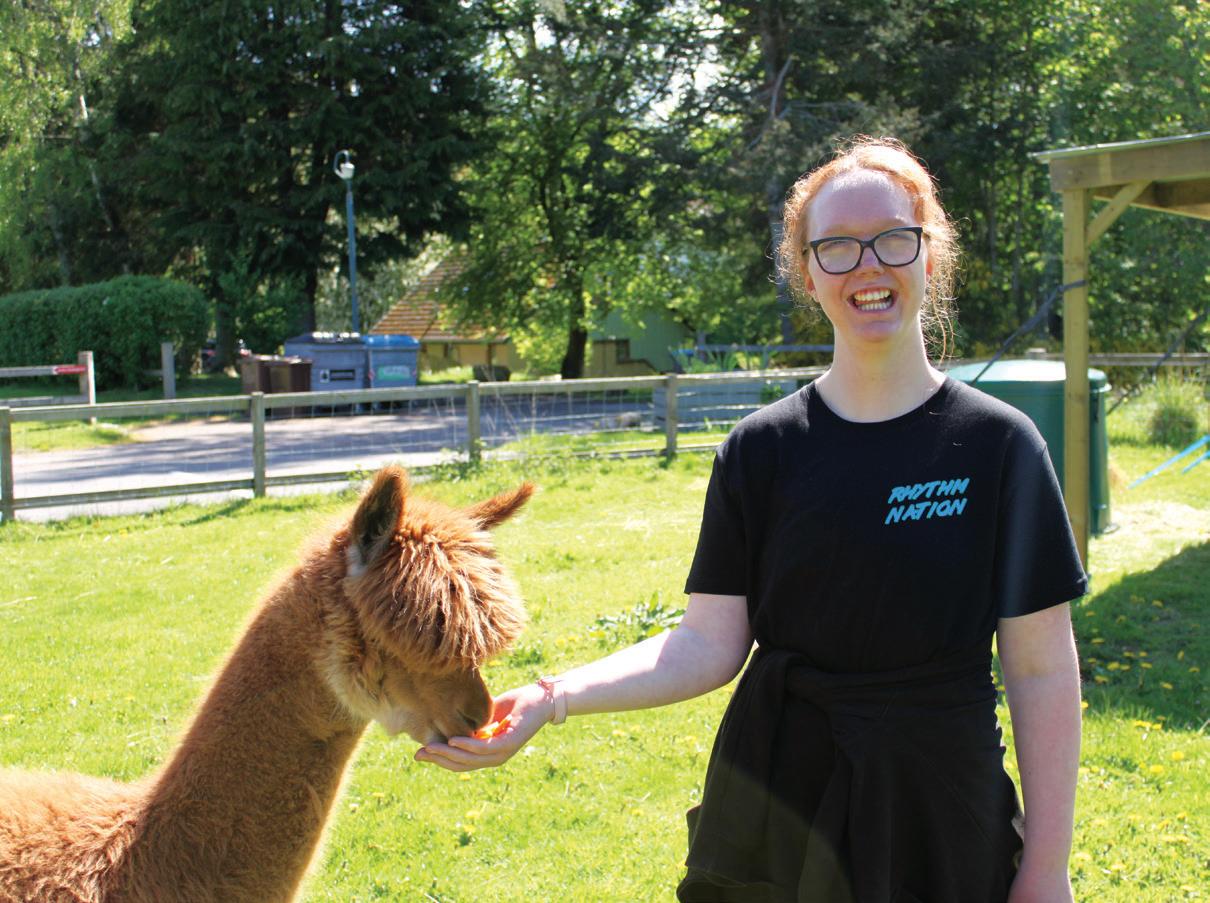
It wasn’t easy but now Sweet Home Alpaca are thriving in the beautiful Welsh Countryside. From 2019 to the present day, Angela and Alex Frayling-James chart their journey.

Sweet Home Alpaca, started by Angela and Alex Frayling-James, is based in Roch, Pembrokeshire with the overall aim being to give something back to the local community in the form of education and therapy visiting to the vulnerable people as well as to offer alpaca walks and camping with these amazing animals.
In December 2019 Sweet Home Alpacas was started by Angela and Alex Frayling-James and was home to seven alpacas with twenty-one other alpacas being housed at another alpaca farm. Then Covid-19 struck so Sweet Home Alpaca had no income as most of the proposed income


streams had been hit by government restrictions. The couple had to use their own savings to keep themselves going because, as a new business, they were not entitled to any of the government loans or grants nor to furlough.
The initial planning consent took 18 months. It was difficult to get materials and contractors due to the pandemic.
They moved into a caravan on site where, during lockdown, for ten months they had no toilet, eleven months without electricity and twelve months without hot water. The caravan was so cold they would go to bed wearing balaclavas! Their possessions would remain in storage for three years!
But thankfully, after this total dedication to a future life with alpacas, things did improve.

As life slowly returned to normal in the wake of the pandemic, 2021 became a busy and productive year.
Their friendly herd grew leaps and bounds and they welcomed 18 new alpacas to the farm – eleven adorable alpaca babies – or ‘cria’ – arrived. Little Welshy who was born back in May was the first cria to be born on the Welsh farm.
From birds to bugs the farm expanded and in the May they rescued ten battery farmed chickens. They soon settled, giving delicious eggs with even a few double yolkers.
They also built a bug mansion – ‘Faulty Prawlers’ – which is still encouraging all kinds of biodiversity to the site, including butterflies, leaf miners and crickets. Bird and bat boxes, painted by local children, are scattered across the farm, meaning the sky is full night and day with wildlife buzzing about.
Most importantly, they finally got planning for their alpaca barn, building work started in May 2021 and they had five alpaca shelters built.
Sweet Home Alpacas started offering ‘Meet and Greets’ and those have proved to be a real success. The ‘Meet and Greets’ are a perfect opportunity to learn about our animals, what food they like, where they sleep and how we keep them happy and healthy.

The eco friendly campsite opened that year.


• They now have 40 alpacas, 30 chickens, three pygmy goats, two cats and two dogs.
• They went through IVF treatment and had their first human baby.
• Agricultural barn building completed
• They have built a log cabin to live in
• Created new paddocks


• Planted 2,000 trees
• Taken alpacas to their first wedding
• Taken the alpacas to the local hospital
• They went to their first alpaca competition and won two second place positions and one first
• They started offering alpaca walks
• Welcomed eight new crias

• Started selling alpaca manure – Pukka Pacca Poop
• Started selling bird nesting material – the leg fleece
• Started selling alpacas
• Taken the alpacas to Christmas and Wedding Fayres.
The future looks bright and so it should for two people who had faced adversity, believed in their alpacas and have achieved so much in three years. They welcome people to their farm where they can have pleasurable experiences with alpacas, take them for a walk and camp in beautiful countryside but they are also keen to breed quality animals.
Just to introduce myself as Editor of Alpaca Magazine and The Alpaca Yearbook. Many of you will know me from editing Smallholder magazine and now, The Country Smallholder Magazine. I also edited Practical Sheep, Goats and Alpacas before it developed into The Smallholder. As a result I was lucky to visit several shows and alpaca breeders and learn more about alpacas. I also worked with an equine charity advising on welfare, where I was able to see many pet alpacas (kept with equines) and understand what they meant to their owners, their management issues and what they did
with their fibre. I also learnt about alpaca agility and trekking.
Your magazines are extremely attractive with great features and there is much to live up to. With your help and advice, I look forward to an exciting future where we can show the very best of alpaca breeding, fibre, showing and activities at all levels.

You can reach me anytime on 07951 753991, please not after 8pm but evenings and weekends are fine. During the daytime it may be best to use my office landline which is 01354 741538. I live in north Cambridgeshire on my own smallholding.
Do you have something to share? Why not write it for your Alpaca magazine? Either send it to us by email or give the Editor a call to discuss. If you don’t feel you want to write it, then we can do it for you – but most of all we’d like to hear from you. You can reach the Liz, the editor, on 07951 753991.
Spring 2023 issue: Deadline for copy is any time up to 13 March. The magazine will be mailed for the 17 April. The Editor will be at the BAS National Show if there is anything you’d like to discuss.
Summer 2023 issue: Deadline for copy is any time up to 19 June. The magazine will be mailed on 24 July.
Autumn/Winter 2023 issue: Deadline for copy is any time up to 11 September. The magazine will be mailed on 23 October.
We weren’t happy with the worrying amount of man-made chemicals given to animals on a daily basis. So, we herbalists, we created a completely natural range of ways to support animal intestinal hygiene. And we’re really
decided to do something about it. proud of it.



















Organic and made from 100% natural active ingredients, Verm-X Original can be fed to your camelids all year round and is safe for breeding mothers.






Vet approved

100% natural Intestinal control


al herbs



A herbal supplement to restore and maintain gut vitality


As a Breed Society it is vital that the British Alpaca Society keeps its members up to date with alpaca news and initiatives in the UK and beyond. There are so many ways in which this is achieved and many people I would like to thank for facilitating this.
Possibly the most important communication from BAS is the weekly electronic updates from Duncan, our CEO. Please take the time to open and read these emails. They are often timely reminders of alpaca related tasks which need attending to, shows or events that are upcoming or recent developments/initiatives/
news from within the alpaca world. Duncan is keen to encourage members who wish to have information or events shared in the Newsletter to contact him directly at ceo@bas-uk.com.
In addition to this, we have a series of Facebook pages available to members. The first is the official British Alpaca Society Facebook page which any member of the public can view for news, events (such as shows) and general alpaca information.
Additionally, we have the British Alpaca Society Members Chat Forum page. This offers a great way for members to keep abreast of what is going on in the world of UK alpacas. I
would like to show appreciation to our Chair, Sue Loach and Emma Taylor (Chair of Fibre) for their diligent work in helping to regulate and monitor this page. Any BAS member can ask to engage in this Facebook page, but you must answer all questions before access is permitted. Many important topics are covered via this page, members can ask one another for guidance and updates are given on BAS courses and shows.
Recently, with help from BAS Welfare, BAS Alpaca Rehoming Facebook page was set up. This is a public group, specifically for re-homing alpacas which have been notified to BAS. Thank you to admin and the welfare representatives for working so hard at this. The care and well-being of alpacas is at the heart of the BAS ethos.
We all enjoy the British Alpaca Society magazine arriving through our letterbox. Although members receive this quarterly magazine 'free of charge' any non members can ask for magazine copies for a small subscription fee. The Alpaca magazine is bursting with information regarding all aspects of alpaca life, backed up by colourful images. The magazine cannot flourish without members' input, for which we are extremely grateful. I would like to make a special request to all alpaca owners to forward anything that may be of interest to the quarterly magazine. The addition of good quality photos are also welcomed (required to be at least 1.2MB), remembering that to be in with a chance of your image being on the front cover the photo must have a resolution of over 2.5MB. Feel free to send any stories, ideas or photographs to ceo@bas-uk.com or to myself at marketing@bas-uk.com.
As always, we look forward in anticipation to what 2023 and the annual calendar of events will bring. The year certainly begins with an air of excitement as we plan to represent and showcase the British Alpaca Society on the world stage, by attending the World Alpaca Conference in Austria in February 2023.
Elaine Clarke
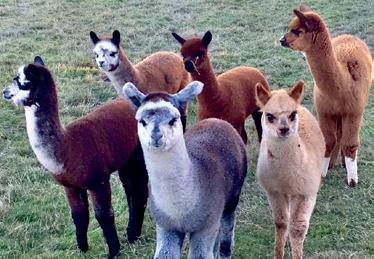






The BAS offers many different types of educational events tailored to different levels of experience.
The first rung on the educational ladder is the training offered by BAS affiliates. This consists of nine modules generally delivered over two days on the affiliate’s farm. They are a mixture of practical and classroom work covering: catching your alpaca, fitting a head collar, halter training, feeding and basic management, vaccination, worming and supplements, alpaca breeding, mating, birthing, shearing, what do to with fleece, and marketing your alpaca business
Most delegates on the affiliate course are in the early stages of alpaca ownership and prospective owners often take part to ensure they are ready for their alpacas when they arrive. In the past year affiliates have delivered more than 50 days of training across the UK.

The second rung on the ladder is the introduction to alpaca assessment. This is either a one day face to face course or a four session Zoom course on alpaca conformation and fibre. The course is suitable for owners who are interested in breeding and it covers basic conformation including teeth, stature, genitalia, legs, gait and body scoring.
The fleece element includes how to recognise the different qualities and traits of fibre including weight and value, fineness, density, crimp, uniformity, length, colour, amplitude and frequency and an introduction to analysis histograms. There are practical opportunities to assess fleeces and discuss the merits of different qualities and styles.
Intermediate Alpaca Assessment is where training starts to get serious.
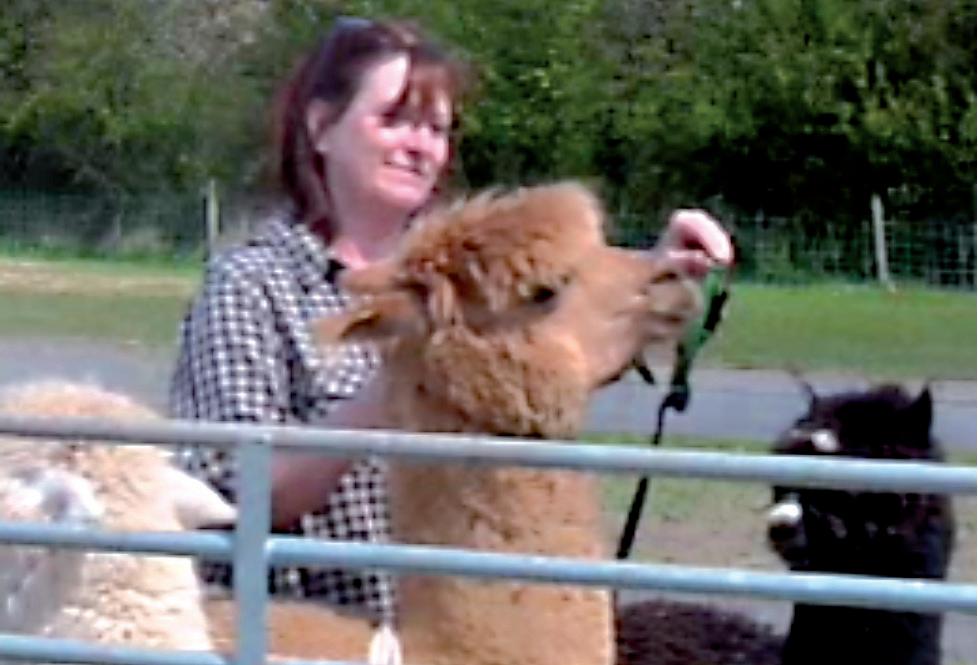
Is your relationship with your animals all you had hoped for?
How can Camelidynamics techniques help me on my alpaca journey?
Camelidynamics is an approach to and collection of methods that represent the most positive, least intrusive techniques for training and managing alpacas.


This two day handling course will change the relationship you have with your animals forever.
Understand why camelids behave the way they do and learn kind and e cient methods that are science-based, for safe handling and husbandry that’s fun.
Tell your vet that we have courses for them too.
For those interested in nding out how this approach can inform and support your human/alpaca interactions in the therapeutic arena, we are now o ering courses for owners and professionals.
Working with Alpacas in Animal Assisted Activity or Therapy.
For more details and to book your places go to www.SimplyAlpaca.co.uk
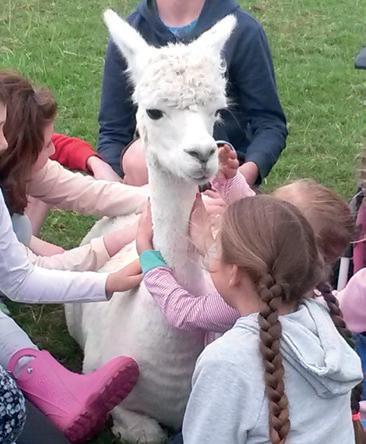
the heart
the membership
offered by the British Alpaca Society. The aim is to provide all members with the right opportunities to learn more about alpacas wherever they are in their alpaca journey, writes
This is a three day course assessing alpaca conformation and fleece. The course is a comprehensive package in basic alpaca assessment and applicable to all, as well as being a prerequisite for those wishing to enter BAS judge training. The advanced course builds on the knowledge gained on the intermediate course and includes a great deal of practical work examining and assessing conformation and fleece with an exam at the end of each course.
BAS offers judge training to ensure a continued supply of judges and to keep judging standards high and consistent. There are two stages to training; Stage 1 concentrates on training in the assessment of alpacas using the comparative method for halter and the absolute method for fleece and is essentially a practical course. Candidates must have successfully completed the Advanced Alpaca Assessment Course to attend. Stage 2 is only open to those who have passed Alpaca Judge Stage 1 within the previous three years. It is a largely practical course, building
on the skills achieved at Stage 1. Candidates who pass stage 2 can then do apprenticeships with a BAS qualified judge at four BAS approved shows. Apprenticeships are a combination of shadowing a qualified judge and putting assessment skills into practice at shows. After successfully completing apprenticeships the final stage is certification.
Over the past years BAS and regional BAS groups have presented Zoom Webinars on a range of subjects. The format has worked very well with 50 to 80 members in attendance during the livestream. Most webinars are recorded and some have had more than 100 views on YouTube. As webinars are a member benefit the videos are not searchable on YouTube but any member can ask for the link or find it in the members area of the website. Topics we have covered include birthing, Estimated Breeding Values (EBVs), business diversification, fleece analysis, show ring preparation, parasites and many more and it is a format that is set to continue this year.
On the 2-4 December I went to Toft Alpacas owned by Mr and Mrs Rob and Shirley Bettinson where we attended the intermediate alpaca course, tutored by Jay Holland and Tim Hey.
On the first day of the course we learnt about assessing the conformation of an alpaca and got hands on experience assessing alpacas for their confirmation.
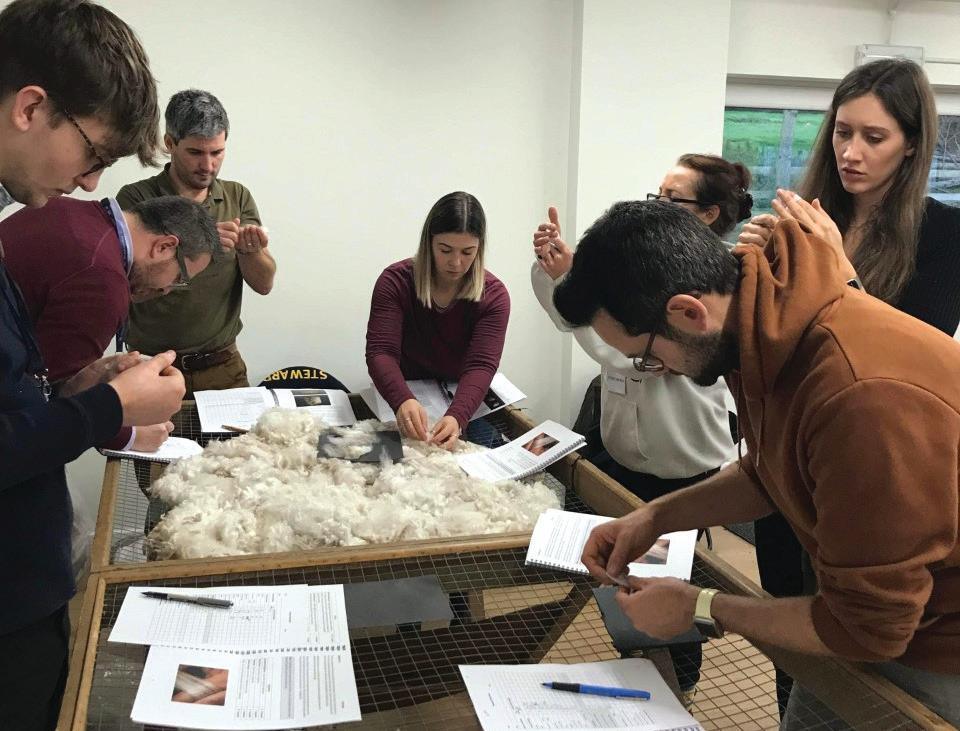

For the second day of the course Jay and Tim taught us about Suri fleece in the morning and then we were able to go outside and assess their fleece in the afternoon. We compared Suri fleeces, weighing up positive traits of their fleece. This allowed me to understand further what a good Suri looks like and allows me to distinguish between the quality of Suris in my own herd.
Finally on the third day we learnt about Huacaya fleece. First, in the morning Jay and Tim presented to us the positive and negative traits in Huacaya fleeces and how to compare and contrast these attributes

on the alpacas. In the afternoon we did a fleece assessment where we individually judged an alpaca fleece scoring it as appropriate. The course was helpful to me because it allows me to be more confident in assessing my own alpacas in my herd and will allow me to have a deeper understanding when it comes to selecting breeding decisions.
Charles is currently a student at Ripley CE Academy Sixth Form studying Biology, Chemistry & Physics plus an Extended Project Qualification focussing on methods of controlling TB in the UK. His love of alpacas began as a young boy, attending shows with his dad and winning numerous junior handler trophies. Now 16, Charles is passionate about breeding high quality alpacas in north west England at Legacy Alpacas.
Breeding quality, friendly alpacas on the Romney Marsh, we pride ourselves on the relationship we have with our animals and our high welfare standards.
Many of the herd have been halter trained and are great walking companions. We can help you find anything from a fleecy friend to a show winning fleece.
For new keepers we have well bonded starter herds available with a full support package including – training with our head herdsperson, home visits, shearing, ongoing phone/ face-to-face support and a ‘Home for Life’ guarantee as standard. So please come on down and meet the herd!
TEL: 01303 870527
EMAIL: office@alpacaannie.com
WEB: www.alpacaannie.com
The family run JandJ Alpaca herd was established in 2005 with four breeding females, today we have over 90 beautiful animals. We are located in Lincolnshire on the Nottinghamshire, Lincolnshire, Leiceistershire border just off the A1.

With years of experience our aim is to help you choose the best alpacas to start you journey, whether it be breeding females, stud males or pet boys.
Stud services also available from top coloured genetics.
TEL: Martin or Clare 01636 626990
EMAIL: sales@jandjalpacas.co.uk
WEB: www.visitalpacas.co.uk
The PennyBridge Herd and Stud. One of the first alpaca farms set up in the South of England, still producing show winners from champion stock. Good quality starter herds, proven and potential stud males, fancy grazers and sheep guards available.
‘Home of The Alpaca Experience’.
Situated in North Hampshire, close to the Surrey and Berkshire borders with good access to ports and airports, less than five minutes drive from both J5 and 6 of the M3.
TEL: 01256 764824 or 07801 132757
EMAIL: joy@pennybridgealpacas.co.uk

WEB: www.pennybridgealpacas.co.uk

Here at White Peak Alpacas, we have been breeding alpacas for over 30 years. Originally located in the Peak District, we are now located in Cheshire.
We offer a wide variety of pedigree alpacas. We are happy to discuss your requirements, just get in touch!
PHONE: 01565 872 012
EMAIL: adrian@whitepeakalpacafarm.co.uk
WEB: www.whitepeakalpacafarm.co.uk
Lightfoot Alpacas are situated in Hawkhurst in the Weald of Kent. We have been breeding alpacas since 1997 and have over 250 Huacaya. Lightfoot is a closed herd, we believe that the bio security and health of our animals is paramount to their breeding and care. We have a range of colours and ages, mainly Huacaya and some Suris. Our animals are known for being friendly as we spend time with them and know them individually.
We provide after sales advice and back up services when we sell our animals. Whether you are looking to improve or expand your herd or just thinking of alpacas as pets, why not contact us to arrange a visit.
TEL: 07802 263589 WEB: www.alpacabreeder.co.uk
EMAIL: graham@alpacabreeder.co.uk
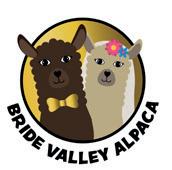
A proud family run business who love and cherish each and every one of our beautiful, happy and healthy, prize winning alpaca.
Providing the highest quality service for all your needs...
• Alpacas for sale • Coloured Alpaca • Males and females
• Halter Trained • Backup Support • Suit your budget
• Agistment Services • All BAS registered.
TEL: 07554 675543
WEB: www.bridevalleyalpacas.com

We are a family run farm in Warfield, Berkshire, breeding high quality Huacaya and Suri alpacas from show winning sires. We would like to welcome you to Scotlands Farm to see our wonderful herd of both white and coloured animals.
We are happy to discuss your requirements, be it for pet males, stock guards, or breeding females to suit your budget but with no obligation to purchase. We have over ten years of experience with these adorable animals. Give us a call and let us see if we can help you.
TEL: Sue Hipkin 07770 455533
Lisa Hipkin 07770 455534
WEB: www.scotfieldalpacas.co.uk
Located on the Solway Firth, in Cumbria, King Garth Alpacas is a family-owned herd where we aim to breed beautiful, happy, healthy and friendly alpacas with top show winning genetics. We have alpacas to suit everyone and all budgets; from pet boys to starter herds, elite females and stud males. We offer full support and advice before and after sales.
Please feel welcome to get in touch and chat about your alpaca needs.
We also offer stud services, alpaca experiences, luxury alpaca products.


TEL: 07762 286050
WEB: www.kinggarthalpacas.co.uk
Moralee is a family-run alpaca farm in West Sussex. We care for a herd of high-quality Huacaya alpaca with award-winning genetics.
Our mission is centred on breeding for improvement –focussing on white and light-coloured alpacas with fine fleece in a gentle and caring environment. All our alpaca are kept in small groups, so are used to human contact and receive lots of attention.
Our services include: the sale of Females for Breeding, Drive-by Stud services and Male-Field Pets.
TEL: 07809 731164
EMAIL: claire@moralee.farm

WEB: www.moralee.farm
Located in rugged and beautiful North Cornwall, we focus on Suri and have a herd of elite alpacas with some of the best and varied Suri genetics in the country. Alongside our own animals we have invested in top quality alpacas from specialists in the UK and New Zealand. Our farm has been ‘custom made’ for alpacas, with biosecurity and welfare of paramount importance, and we love and care for the herd ourselves.
We offer full stud services and in particular Suri starter herds, quality breeding stock and luxury alpaca products.
WENDY: 07712 136949TOM: 07825 105530
EMAIL: tomandwendy@darkskyalpacas.com
WEB: www.darkskyalpacas.com


Established in 2002 and situated on the North Cotswold hills close to the picturesque village of Snowshill, the current herd numbers over 300. We breed both Huacaya and Suri alpacas (approximately 80% are Huacaya). Although our breeding programme is biased towards the darker colours, we do also have superb quality whites and beige alpacas.
Full range of alpacas for sale, attractive pets to top show quality breeding girls and stud boys. Large choice of stunning stud males available to service your girls. Also offering natural alpaca fabrics made in the UK from the fleece of our own herd.
TEL: 01386 853841 or 07711 044106
EMAIL: snowshillalpacas@btinternet.com
WEB: www.snowshillalpacas.com
Pottery Alpacas are a family run farm located in Blackburn, Lancashire, we focus on breeding high quality animals from elite bloodlines. We have a wide range of alpacas for sale, with everything from Pet Quality males and females to Stud males and show quality stock. We offer first class support and advice with every purchase and are more than happy to discuss your requirements with no obligation. We are here to help you every step of the way on your alpaca journey!
Herd Reduction Sale
MARK: 07540 115329 AMANDA: 07882 456084
EMAIL: mark@potteryalpacas.com
WEB: www.potteryalpacas.com
The Specialist Country Store in Herefordshire.
Breeders of Huacaya Alpacas, Pygmy goats, Poultry, Zwartble and Ouessant sheep. Point of lay Hybrid hens available ALL YEAR – Seasonal selection of bantams, ducks and quail. Extensive range of supplies, equipment, bedding and poultry housing. Specialist feed merchant: Alpaca; Pygmy goat; Pot-bellied pig; Poultry pellets with wormer; Organic Range, Hay, Straw, Dog Food (Skinners, Dr John, Vet Spec, Hypoallergenic) Visitors welcome:
Tuesday-Friday 9am-4.30pm Saturday 9am-12.30pm
Hope under Dinmore, Leominster, Herefordshire. HR6 0PX.
TEL: 01568 797314 EMAIL: info@wynnes.co.uk

WEB: www.wynnes.co.uk

15 years of selective breeding and dedication has successfully proven our genetics both in and outside the show ring, winning multiple championships and of course one of the British Alpaca Futurity’s major Best Breeder awards.
We offer a range of courses including: ‘Introduction to alpacas’, ‘Birthing’, ‘Husbandry’, and a day long ‘Advanced’ course. Alpacas for sale in all colours, at prices to suit all pockets, but more importantly from elite herd sires and proven bloodlines.
Our farm in Hertfordshire offers: feed, supplies, coats, halters etc. Importantly we deliver total customer care. See website for customer reviews and details of our award-winning herd sires.
tel: 01763 271301 or 07802 433155
emAil: beckwith904@aol.com
Web: www.hertsalpacas.co.uk
ANIMAL HEALTH

High specification organic chealated nutritional supplements suitable for all camelids.
• Premier Camelid Drench
• Premier Mineral Supplement
• Premier Mineral Bucket




• A, D3 & E Paste

TEL: 07866 607466
EMAIL: jganimalhealth@aol.com
WEB: www.jganimalhealth.co.uk
Classic Carder produce a full range of British, handmade drum carders for fibre preparation. Featuring our unique interchangeable drum system which allows quick and easy drum change for carding different fibres.
TEL: 01746 714130
EMAIL: paulbrittain@mac.com
WEB: www.classiccarder.co.uk




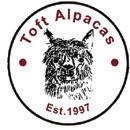
Based in North East Warwickshire we offer over 120 pedigree alpacas in all colours, ages and price ranges. We run a number of prizewinning stud males and offer on farm and mobile mating services. We are confident that our prize winning herd will live up to all your alpaca expectations. Shirley and I have been qualified BAS judges for a great number of years and have judged throughout the UK and Europe. We run regular alpaca husbandry workshops every month throughout the year. We have been breeding alpacas for 25 years and are dedicated to sharing our extensive experience to guide you towards realising your own alpaca aspiration whatever that maybe. Please ring to book.
TEL: Shirley 07970 626245 / Rob 07973 123008
EMAIL: shirley@toftalpacastud.com / rob@toftalpacastud.com WEB: www.toftalpacastud.com
Faerie–Tale Alpacas is a small family run farm based in Kenilworth in Warwickshire J15 of M40. We focus on breeding sound, healthy, friendly, elite alpacas with gorgeous fleeces and top class genetics at very reasonable prices.
We know each alpaca and have most colours available from blue black to dazzling white. Whether you are new to alpacas or wish to expand your herd we have an alpaca to suit you! Prices to suit all budgets and with full after sales support given.
We offer:

• Quality breeding stock • Starter herds • Stud services
• 2 hour alpaca experiences • Alpacas for weddings and events
• Luxury range of hand knitted alpaca garments and accessories using our own fleeces
TEL: 07950 671672 FACEBOOK: Faerie Tale Alpacas
EMAIL: info@faerietalealpacas.co.uk

WEB: www.faerietalealpacas.co.uk




RETAILERS/WHOLESALERS IN BRITISH ALPACA PRODUCTS
M.R.Harness was founded in 1995 after existing part time for a number of years. Mary herself is a qualified engineer and is well placed to assess materials and their useage. Company policy is to test as many of the webbing designs as possible before release, as each item is unique to the animal it is designed for. This has led M.R.Harness to become the supplier of choice for headcollars, leads, coats and harness for all the various smallholding animals, but specialising in alpacas and llamas, and working ponies.
All items are hand crafted ‘in house’, in England, so you can be assured of good workmanship and quality products that last.
So please come and try the ‘Choice of Champions’.
TEL: 01299 896827 EMAIL: mary@mrharness.co.uk
Everything you need for your alpacas delivered to your door! We are a one-stop-shop for alpaca supplies, including headcollars and leads, vitamins and nutritional supplements, healthcare and welfare supplies, colostrum, coats for cria and adults and microchipping equipment.
We also have a good selection for your other animals, including dogs, chickens and horses, as well as a range of farmhouse items and gifts, including our famous home cheese-making kits.
We are alpaca owners ourselves and we are always happy to help with your questions and enquiries.


Order direct from our website or by phone. You can expect fast, friendly service and advice.

TEL: 01295 713188 EMAIL: homesteadfarms@btinternet.com
WEB: www.homesteadfarmsupplies.co.uk



Members meet on a regular basis to talk alpaca, organise events, seminars, workshops, and generally share their experience and knowledge on all things alpaca.
The groups are not exclusive (to BAS members or by Geography) and are open to all. Their aim is to allow new and existing members to come together, socialise with other breeders in their locale and learn more about alpacas. Should you be an owner, prospective owner, or just interested in these fascinating animals, your regional group will always make you welcome.
The groups also provide invaluable expertise by providing qualified judges, welfare advice, nutritionists and lecturers, with the emphasis always on self-help, accessibility and local initiative. Each group organises its own area slightly differently; some hold their meetings in the same place and some move venues. Meetings are organised around barbecues, suppers, coffee mornings and workshops; most groups ask for a small contribution to cover the costs of the event.


No group in your area? Form your own.
The BAS Regional Groups are designed to provide local activities for and contacts between members within a region.

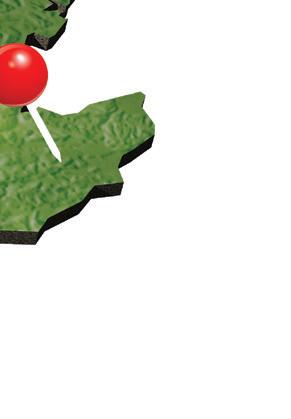

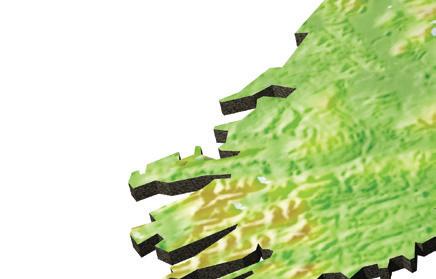





Groups are responsible for organising meetings for members and for disseminating information from the Society to members and passing feedback to the Society.
Groups are responsible for their own financial affairs and meetings of the group should be financially self-funding.

Alpaca shows within the Group’s area would be organised by the Regional Group with assistance from Grassroots Systems Ltd (if required) with regard to online entries and catalogues. Shows are expected to be self-financing.
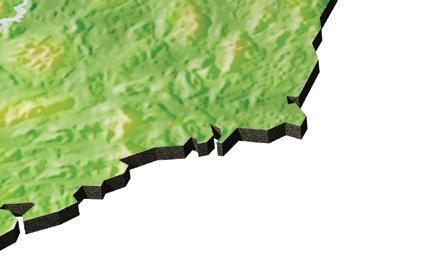
Groups are encouraged to provide reports of their activities to the








Editor of Alpaca magazine.
Notices regarding Group events can be included in the BAS Newsletter sent by email to all members, posted in the Facebook BAS Chat Forum and posted on the appropriate page(s) of the BAS website – www.bas-uk.com. Details of events should be sent to ceo@bas-uk.com
To be recognised by the Society, the Group must have an appointed Secretary and Treasurer. It must have its own bank account for Group funds. When these items are in place, details should be submitted to the BAS Board which will consider the formal recognition of the Group.
Minutes of meetings must be produced to the BAS CEO and be made available if requested.
It is suggested that those interested in establishing a new Regional Group hold a meeting of members within the area to gauge interest and to determine what type of activities local members would support.

A list of all Regional Group contacts is included on the BAS website and it is also sent to all new members who are encouraged to join the one nearest to them.
• East Midlands Alpaca Group
• Eastern Alpaca Group
• Heart of England Alpaca Group
• North East and Borders Group
• Northern Ireland Group

• Scottish Group
• South East Group
• South West Group (SWAG)
• West Shires Group
• Yorkshire Group
• Cornwall Camelid Association

• North West Group
• Southern Region Alpaca Group






























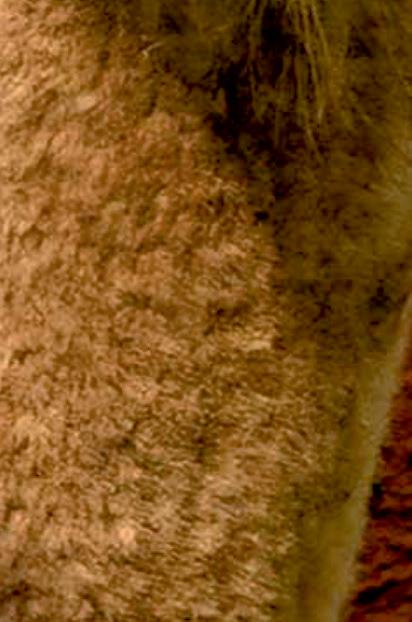


































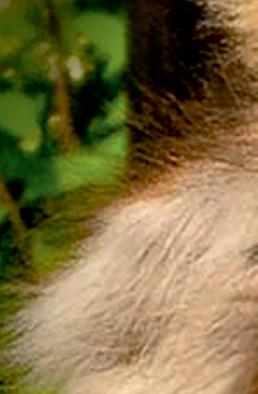

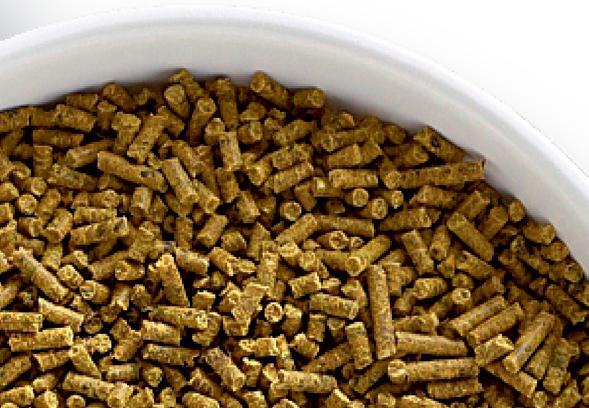

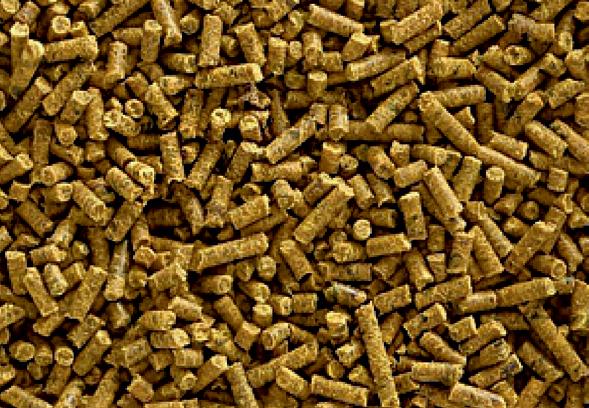




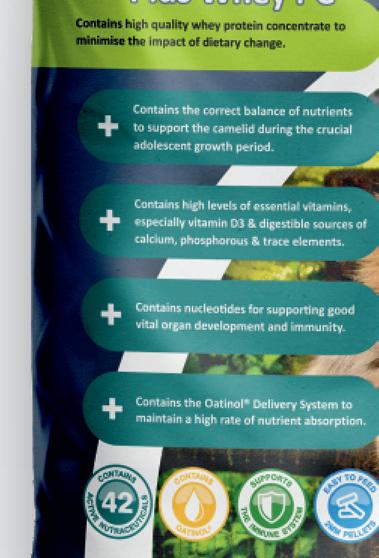

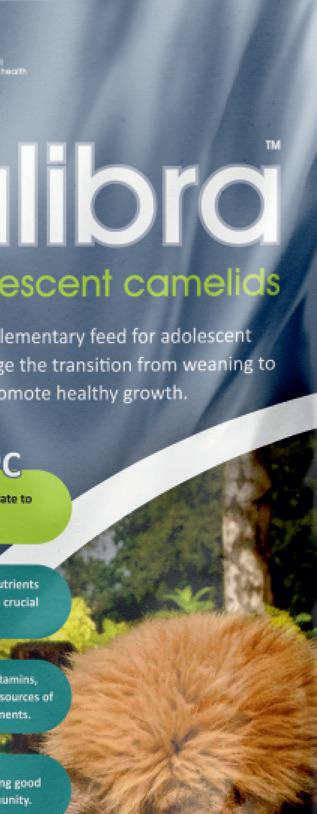










We are proud to offer: Detailed guidance and support for new owners.
Business planning for breeding herds. Elite pedigree breeding and pet stock for sale and export to the EU, Middle East and India.
Help obtaining planning permission for a dwelling using alpaca breeding as justification – we did it and have helped others.

Please call Tim to talk more about alpaca ownership:
+44 (0) 7875 532827

